If you wonder what to see and do in Athens this article is your guide to the top tourist attractions. This amazing city is a historical gem of Europe where culture and historical events influenced the world and changed it forever. Because that’s where philosophy, democracy and theatre were born, Athens is often called the cradle of Western civilisation.
Generally, Athens feels like one ancient museum under the open sky. It’s one of the oldest cities in Europe dating back over 3,000 years ago. When walking around Athens you can’t help to notice that every little square and every tiny street reminds of the rise and fall of the Hellenic civilisation. Although these days, we often associate Athens with holidays, olives, Greek salad, economic crisis or possibly the movie ‘Mamma Mia’, there’s so much more to explore.
Table of Contents
Acropolis

When you travel to Greece, Acropolis is the first image that comes to mind. And no wonder why it’s such a popular place to see in Athens. One rocky outcrop overlooking the city of Athens with three temples to honour the mythological gods. Because it’s the birthplace of democracy, philosophy and theatre, you just wouldn’t imagine a more iconic place in Europe.
Acropolis, which literally means the ‘upper city’ (‘akron’ – highest point, ‘polis’ – city), is an ancient hill standing 150 m above sea level with the most amazing views of the capital. The slope leading up the hill is a little steep but the whole journey towards the main entrance is pretty easy.
In ancient times Acropolis was a heart of social, religious and political life. It was sort of a citadel shaping the city borders to defend and protect people living in it. These days the monuments at the Acropolis are often being renovated and seeing the scaffolding is a standard.
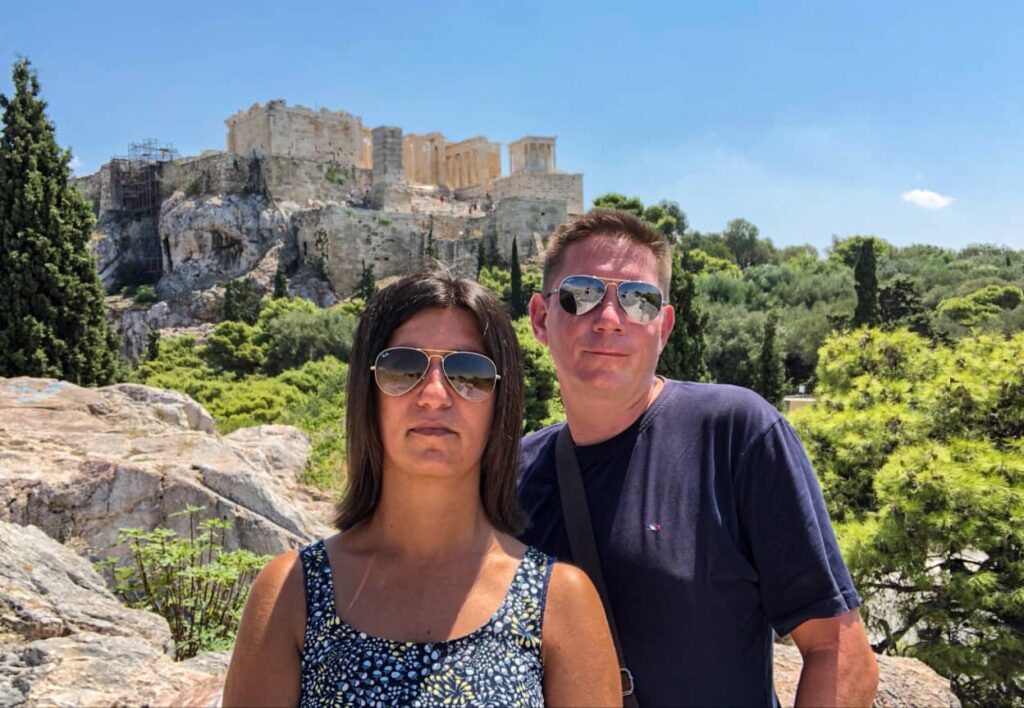
When you enter Acropolis, you walk through the Propylaea entrance and exit via the Beule Gate. The Propylaea Gate leads the way to the main temples – the Temple of Athena Nike, Erechtheion and Parthenon based in the centre of the square.
As you notice, the Acropolis is a hill with rocky slopes. The northern ones are not built-up and there are green areas and caves, which used to be a place of worship. The southern slopes are taken by the Theatre of Dionysus and Odeon Herodes Atticus, both used for live entertainment. When you stand on the top of Acropolis you get to see the Areopagus and the Ancient and Roman Agoras very well.

Why visit Acropolis? You get the taste of the ancient times in the present. When you stand around these magnificent buildings, you suddenly realise this is where our civilisation began! Not to mention the views from Acropolis are breathtaking. You lay your eyes on the white concrete buildings filling every inch of the capital. It certainly shows how far Athens stretches and how congested it is.
Because the city is built on seven hills, you can see its borders reaching the main port of Athens, Piraeus. That’s where the Mediterranean Sea unfolds its path to the most beautiful Greek islands. Seeing the sunset from such an ancient place is a once in a lifetime experience!
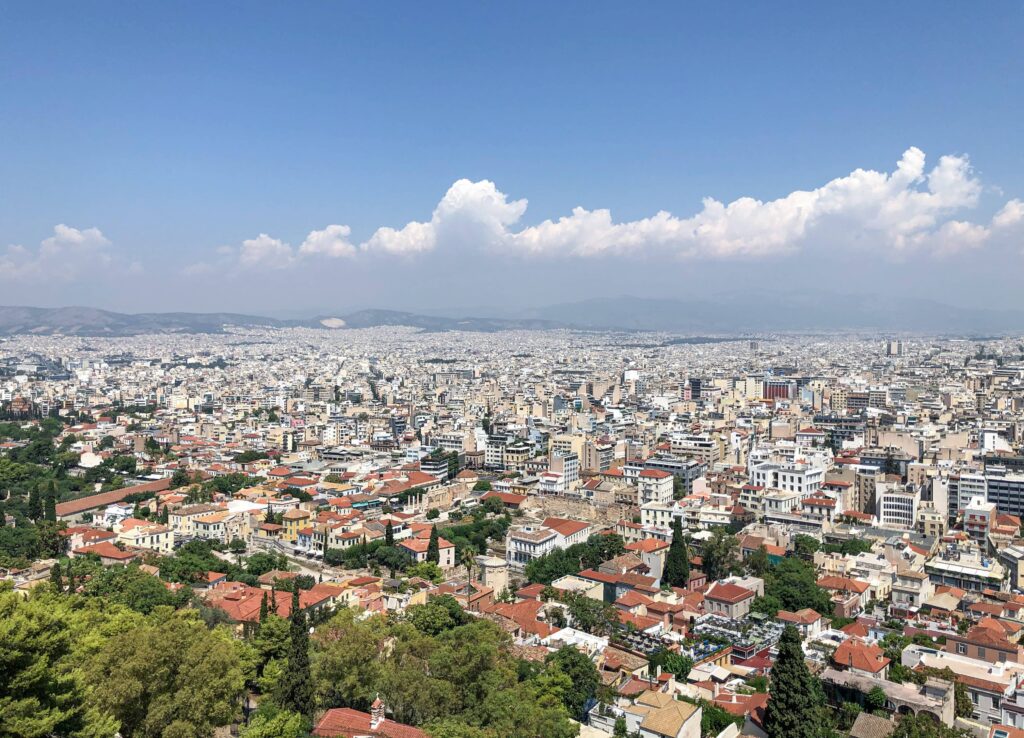
Did you know? The Greek government doesn’t allow building anything that would shadow the view of Acropolis. That said the highest buildings in Athens can usually only store up to 12 floors.
Useful Information:
- Acropolis Standard Ticket – €20 (high season), €10 (low season), allows you to enter Acropolis and its slopes.
- Acropolis Combo (Combined) Ticket – €30 valid for 5 days, allows you to enter more: Acropolis, Ancient Agora, Archaeological Museum of Kerameikos, Archaeological Site of Lykeion, Hadrian’s Library, Kerameikos, Museum of the Ancient Agora, North slope of the Acropolis, Olympieio, Roman Agora of Athens, South Slope of Acropolis.
- Opening hours – 8:00 to 20:00 (varies during the year).
- Time – 3/4 day
- More information about the current ticket prices are to be found on Odysseus official website.
Propylaea

The Propylaea (propylaea, propylea or propylaia) was built of a white Pentelic marble and a darker limestone as a grant entrance hall to the Acropolis of Athens. It was commissioned by the Athenian leader Pericles when the war with Persians was ending in 437 BC and supervised by an architect Mnesicles (or Mnesikles). Although the Greeks aimed at restoring its glory, the Propylaea was never completed. It was when the war with the Peloponnesians broke out in 432 BC leaving the building unfinished.

If you enter Acropolis from the main entrance, the Propylaea is what you see first. The whole structure consists of central gateway with colonnaded porches on the eastern and western sides. That’s where you find the columns in the Doric style with few Ionic columns supporting the roof of the central wing. In the past, the ceiling inside the roof which was supported by two rows of Ionic columns, was painted to display a heavenly scene with gold stars on a dark blue background.

The hall inside the Propylaea divides the building into two wings, one to the east and one to the west side. The left side of the structure (the north wing), known as the Pinakotheke, is the largest and was used as an art gallery to display painting of the famous artists such as Polygnotos and Aglaophon. The right side (south wing) is relatively smaller and was used to access the Temple of Athena Nike.
Useful Information:
- Entrance – Acropolis Ticket
- Opening hours – 8:00 to 20:00
- Time – 15 min
The Beulé Gate
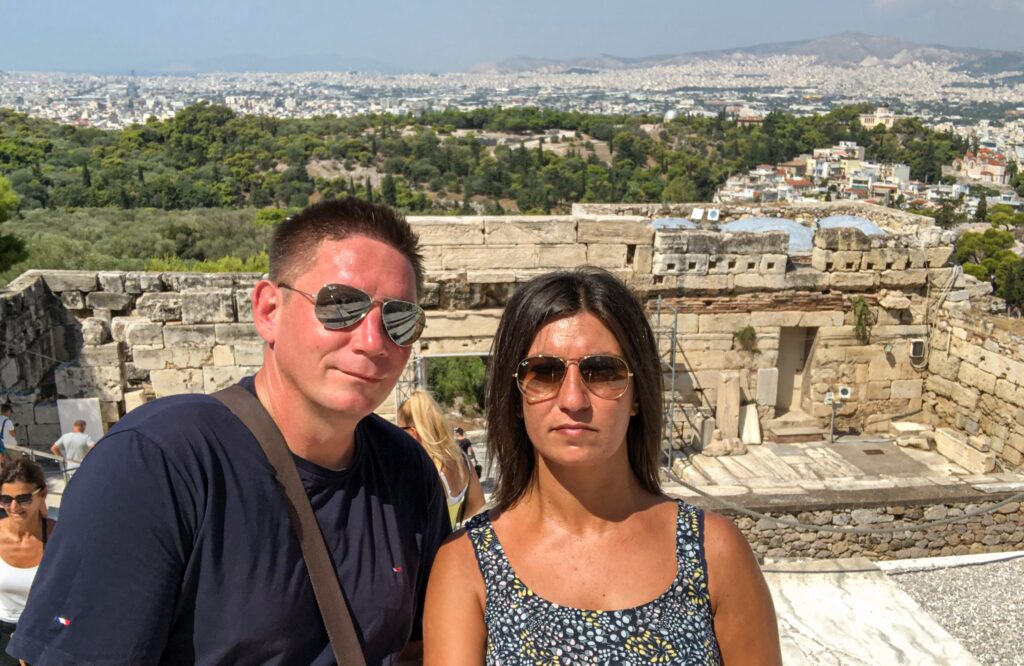
The Beulé Gate was built by the Romans as a defensive entrance to the Acropolis in 280 AD. This was a part of fortification constructed after a devastating attack by the Heruli tribe. Although it’s not certain who exactly built this gate, the inscription stating the Roman named Flavius Septimus Marcellius was the one who financed its construction was found in the early 19th century.
We come to believe that the Beulé Gate was built with the limestone from neighbouring Piraeus. The whole structure consisted two 8-meter high towers (pylons) with the gateway in between. Although it was used to lead up to the Propylaea Gateway, these days it is the main exit the visitors can leave. The gate was named after a French archaeologist, Charles Ernest Beulé who excavated it in 1852.
Useful Information:
- Entrance – Acropolis Ticket
- Opening hours – 8:00 to 20:00
- Time – 15 min
Parthenon
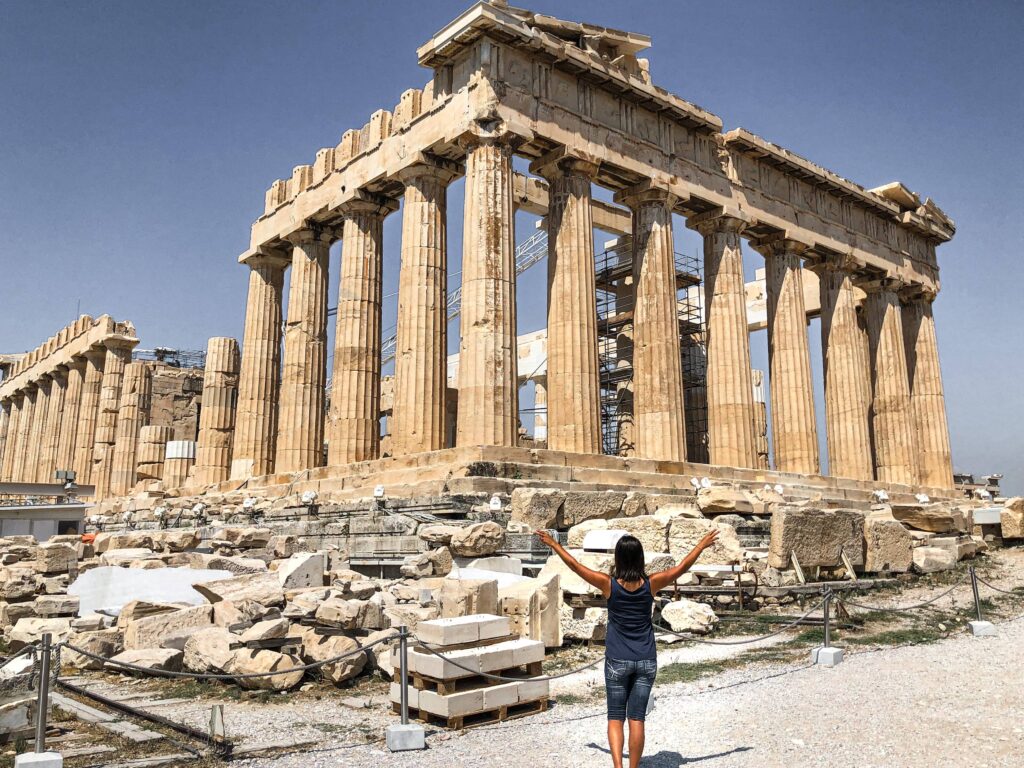
Parthenon is the main temple of Acropolis dedicated to goddess Athena (Athena the Virgin). It was built of the white marble in the Doric style between 447 BC and 432 BC. Historically, Parthenon is a symbol of Ancient Greece, democracy and Western civilisation that influenced the way we live now.
Inside the temple there used to be a colossal statue, which represented Athena, the patron goddess of the city. This statue, which no longer exists, was made of gold and ivory. The Parthenon itself was decorated with marble sculptures which represented different scenes from Athenian cult and mythology. Many of them are currently on display at the British Museum in London.
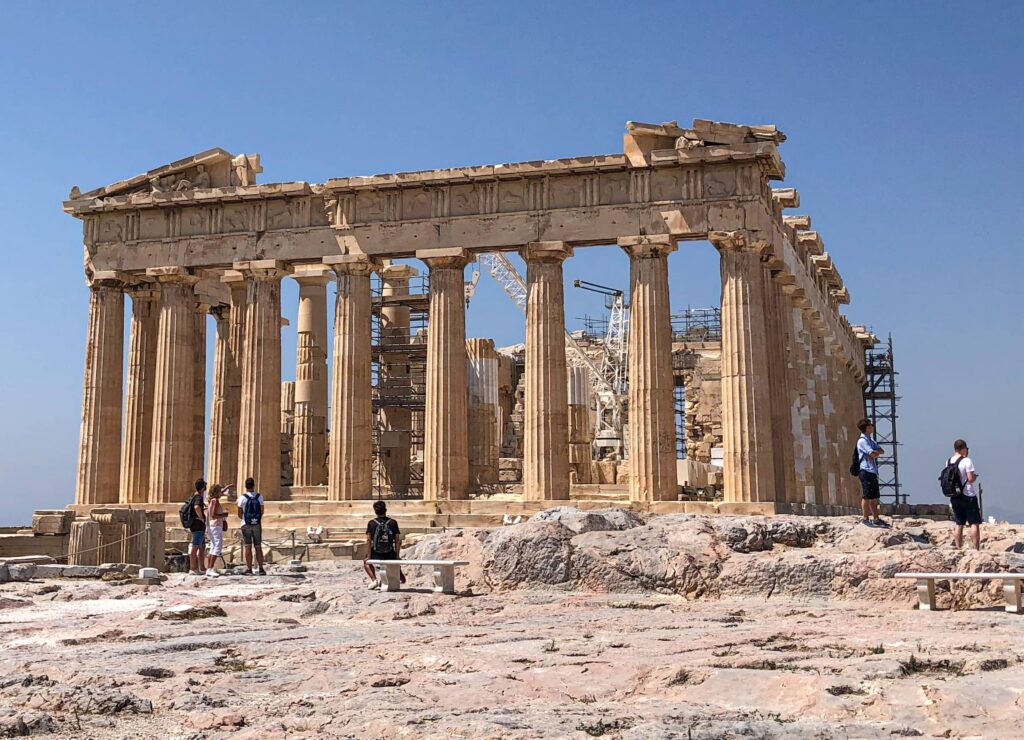
It’s said that the ancient Greeks built the Parthenon and other monuments in Athens to thank the gods for winning the war with the Persians. When it happened, mainland Greece and Athens in particular entered into a golden age. In a way this event contributed to the development of drama, philosophy, literature, art and architecture.
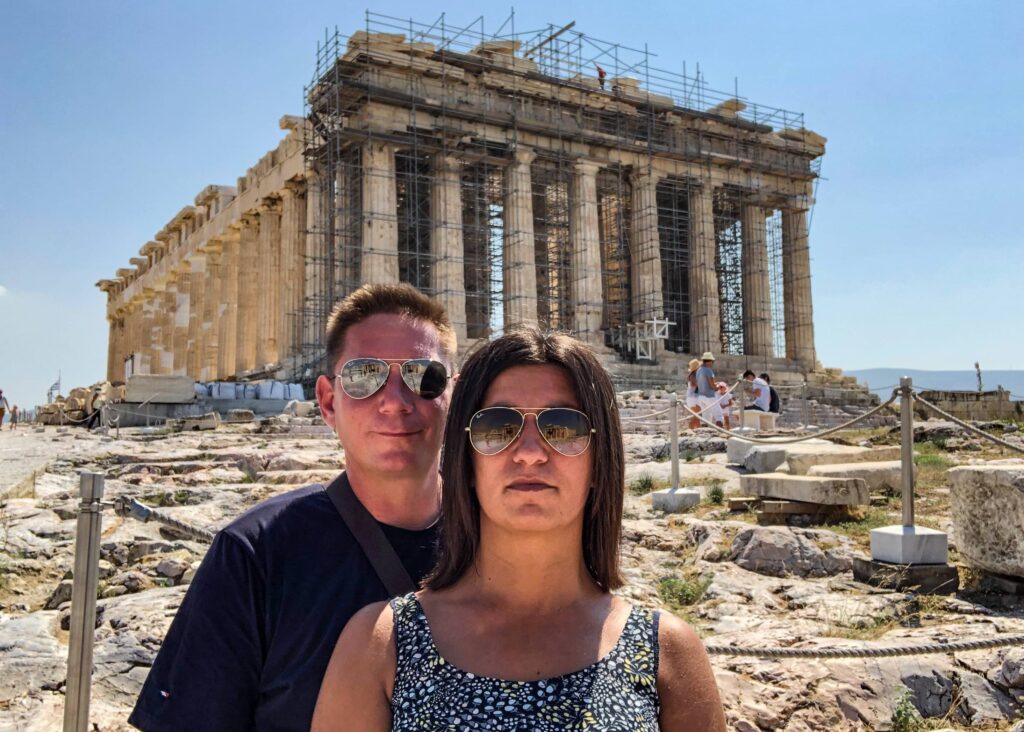
Over the centuries Parthenon has been undergoing a number of changes. Although it remained intact for a long time, the early Christians turned it into a church in 17th century. Later when Athens were conquered by the Ottoman Turks, this temple became the mosque. During the Venetian siege of the Acropolis, the defending Turks used Parthenon as a store for their gunpowder. Sadly, an explosion blew out the heart of the building, destroying the roof, parts of the walls and the colonnade.

These days you’re not allowed to enter the inside the Parthenon, despite its central location. Instead, you can walk around and admire its beautiful details of craftsmanship. No wonder it’s one of the most photographed temples on the Acropolis!
Useful Information:
- Entrance – Acropolis Ticket
- Opening hours – 8:00 to 20:00
- Time – 1h
Temple of Athena Nike

The Temple of Athena Nike was built of Pentelic marble around 420 BC and demolished by Persians in 480 BC. Designed by architect Kallikrates and dedicated to the Greek goddess Athena, it’s not only the smallest structure on Acropolis, but also the only one fully constructed in the Iconic style.
This temple stands on the 6 meter stone platform and can be accessed through the south wing of the Propylaea. The term ‘Nike’ describing the goddess as ‘victorious’ became popular as it was believed she had brought victory during the Peloponnesian war against Sparta. Although the Temple of Nike is a part of Acropolis, these days it’s often closed to visitors due to frequent maintenance works being done.
Useful Information:
- Entrance – Acropolis Ticket
- Opening hours – 8:00 to 20:00
- Time – 10 min
Erechtheion Temple
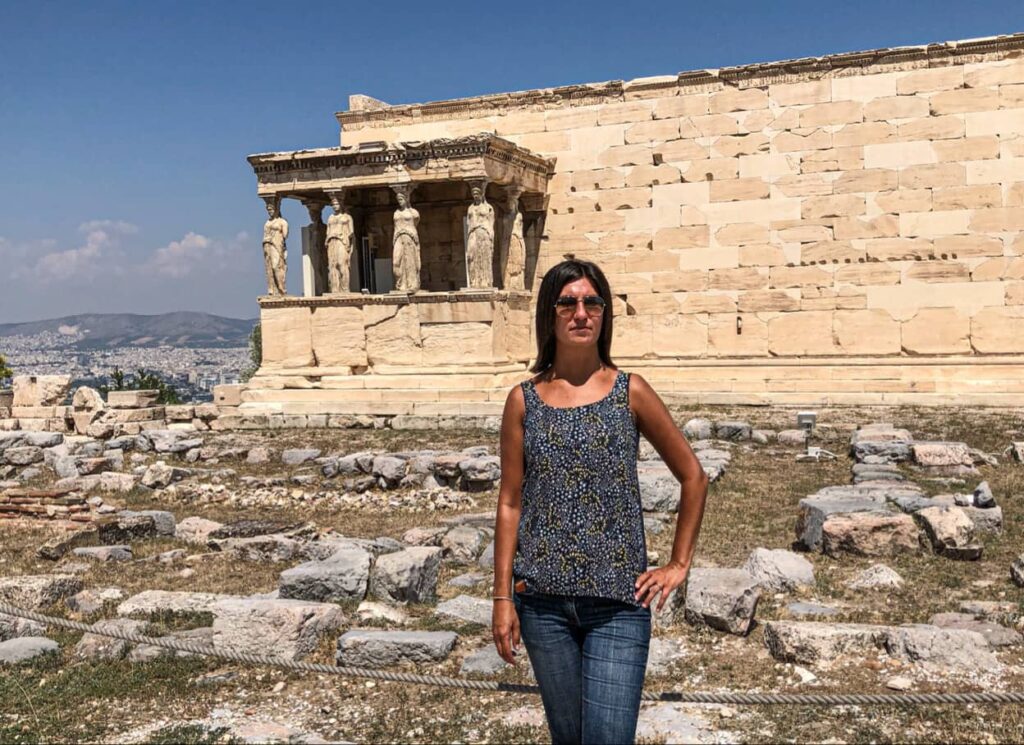
As far as we know Erechtheion was built around 421 BC on the top of Acropolis. This temple was used to worship two Greek gods, Athena and Poseidon. Generally, Erechtheion was converted into the Christian church in 6th century and later used by Turks as a harem. Although the monument was badly damaged throughout the centuries, the major renovations began in 1979.
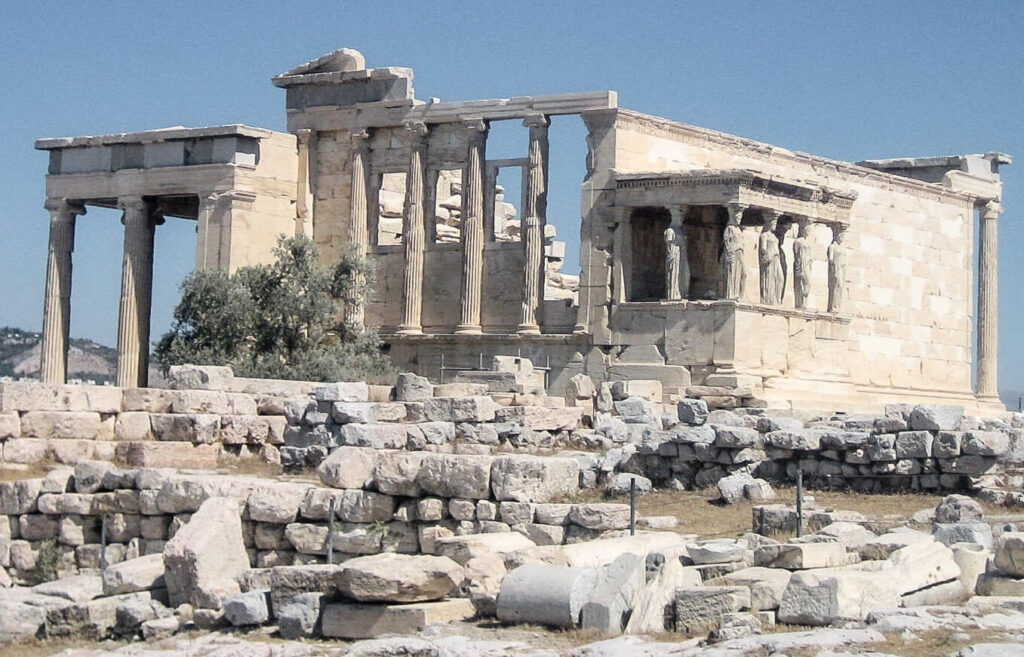
According to the legend there was a conflict between Athena and Poseidon. As they fought over who would be a city guardian, both were required to gift their people with something special. When Poseidon hit the rock with a trident, salty water gushed out. We know that there’s still a well at the exact place in the middle of the temple. When Athena gifted the city with the olives, people chose it over the water and the temple was built to celebrate her victory.

Did you know that originally there were six female figures (caryatids) supporting the south porch of Erechtheion? Sadly they are no longer there as five were taken to the Acropolis Museum in Athens and one transferred to the British Museum in London. What visitors see these days are the copies that replaced the original caryatids. However, the original remaining fragments as well as the new white marble brought from the same ancient quarry were used during the reconstruction.
Useful Information:
- Entrance – Acropolis Ticket
- Opening hours – 8:00 to 20:00
- Time – 20 min
Theatre of Dionysus
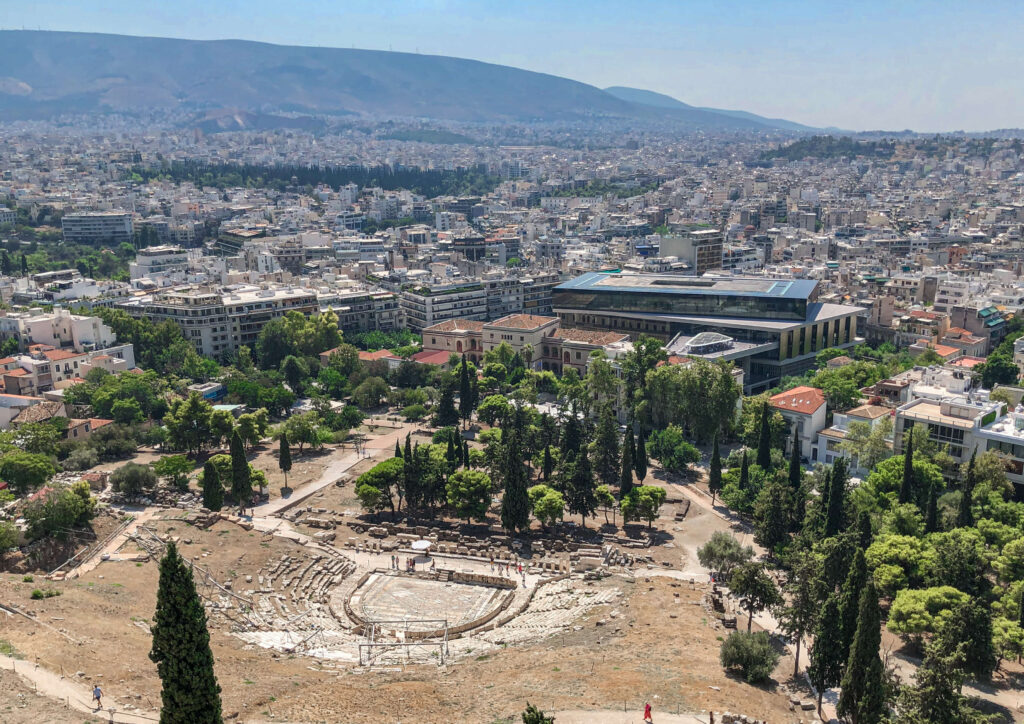
Theatre of Dionysus was built in 4th century BC at the foot of the southern cliff of the Acropolis. As we know it now, it’s considered the oldest theatre in the world with the capacity to accommodate 17,000 people in its heyday. Initially, it was built of wood but stone seats were added later. Also, the stage was reconstructed many times so most of the ruins that we see today come from the Roman times. Unfortunately, not much is left of the original structure with only 20 sections still in place.
Because this theatre was dedicated to the god of wine and entertainment, it seemed like an ideal place for live performances. In fact, a large statue of the god had been placed in the front row so that the god himself could watch the plays and the sacrifices to his name. The Theatre of Dionysus was where Sophocles and Euripides used to put on a play and giving the same birth to the greatest Greek tragedy we know now.
Useful Information:
- Entrance – Acropolis Ticket
- Opening hours – 8:00 to 20:00
- Time – 20 min
Odeon of Herodes Atticus

This amazing theatre was built in 161 AD by the Roman citizen, Herodes Atticus on the southern slopes of Acropolis. When Aspasia Annia Regilla died, her husband commenced the building works and dedicated this monument to a memory of his wife.
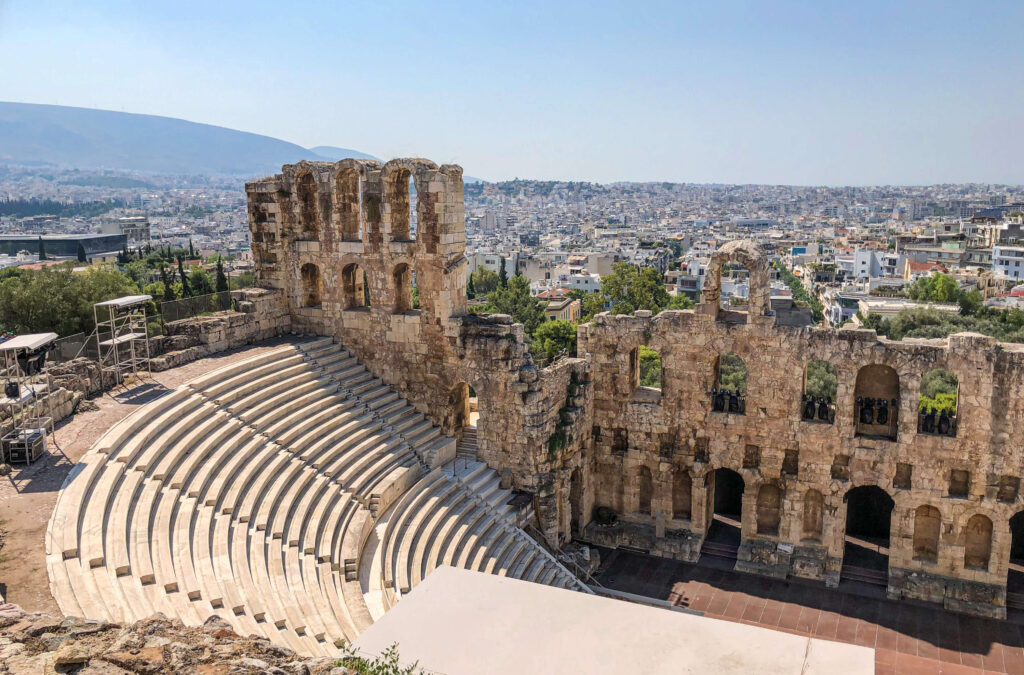
Although Odeon of Herodes Atticus is made of marble stones, originally it was covered with wooden parts including a roof for a better acoustic experience. During ancient times, the theatre was where many live concerts and music festivals used to happen with a capacity to accommodate 5,000 viewers.
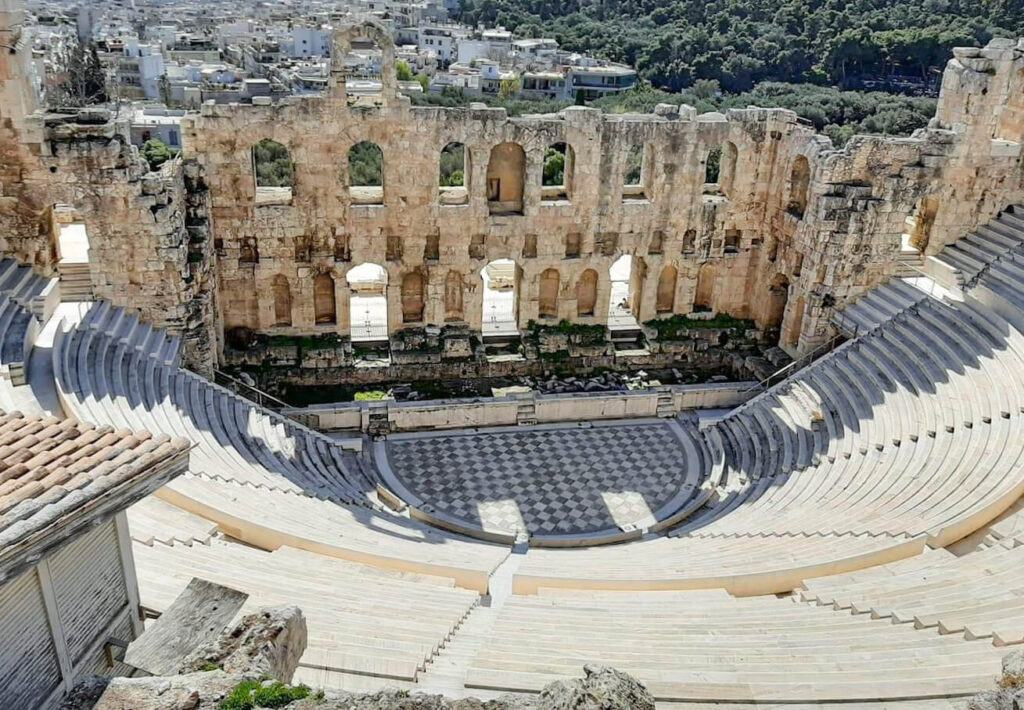
Sadly, Odeon of Herodes Atticus was destroyed by the Heruli in 267 AD. After being restored in 1950s it became the main venue of the Athens Festival that happens every year. It’s one of the major event in Greece that runs between May and November attracting many Greek and international performers.

Did you know? The Odeon of Herodes Atticus is where most popular music artists were invited to perform. Celebrities such as Frank Sinatra, Luciano Pavarotti, Sting, Mario Frangoulis and Elton John were among those who got a privilege to appear on the stage. Just imagine taking part in the concert at the most ancient place in Europe! The most magical theatre under the open sky.
Useful Information:
- Entrance – Acropolis Ticket
- Opening hours – 8:00 to 20:00
- Time – 20 min
Areopagus
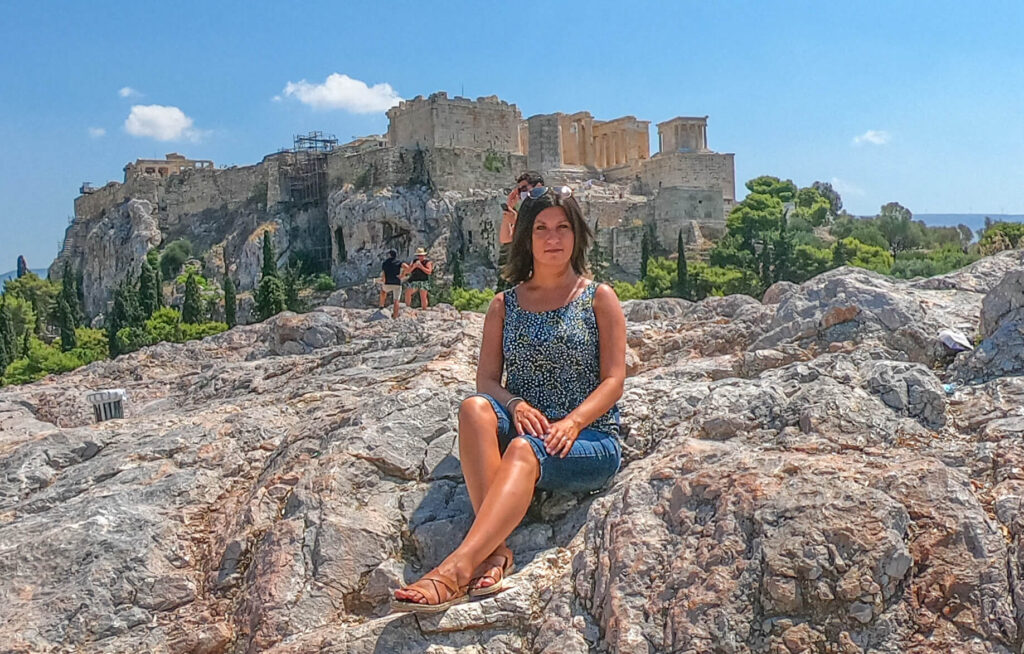
The Areopagus is one rocky mountain neighbouring northwest of Acropolis. Because it was where the god of war Mars was worshiped, it’s also called the Mars Hill. Besides historical importance, this hill provides some of the best views of the capital and is highly recommended to visit especially before a sunset.
Why go? In ancient times, the highest officials used to meet on the top of Areopagus to debate about matters important to the city. It became the birthplace of the first Greek council that was formed of elderly aristocrats in power. These days there’s nothing left except the bare rocky hill but it provides amazing views. Yes, free of charge!
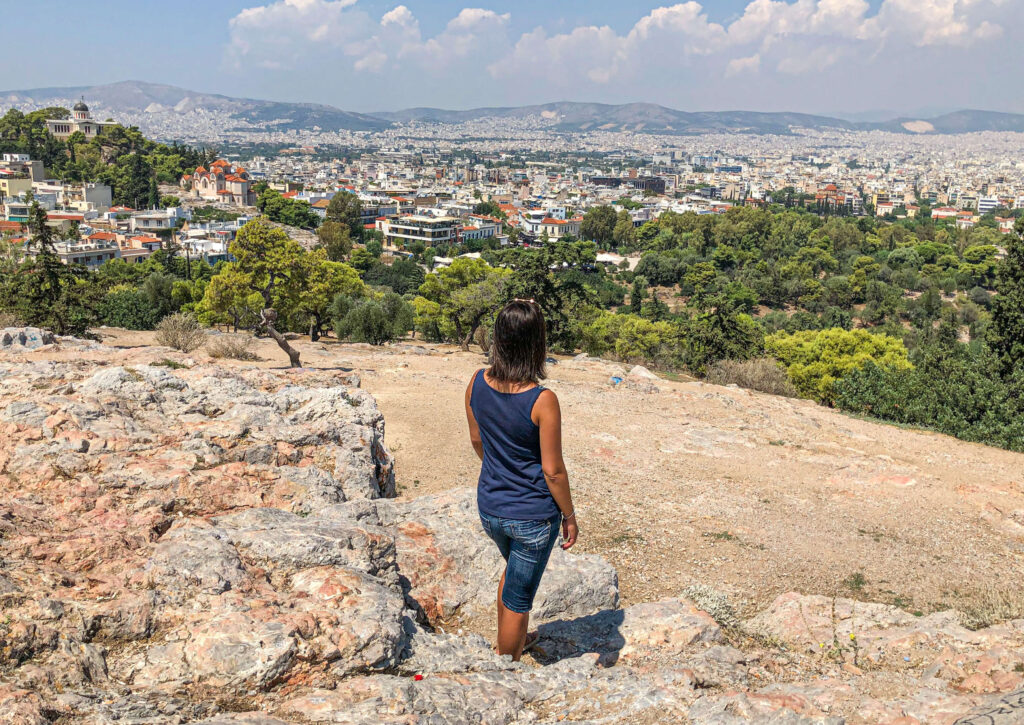
Did you know that Areopagus was where Saint Paul used to preach? In 51 AD Paul the Apostle came here and taught the Athenians a new religion, Christianity. As a result, he became the first bishop and Christian patron of Athens.
Useful Information:
- Entrance – free
- Opening hours – 24/7
- Time – 20 min
Ancient Agora
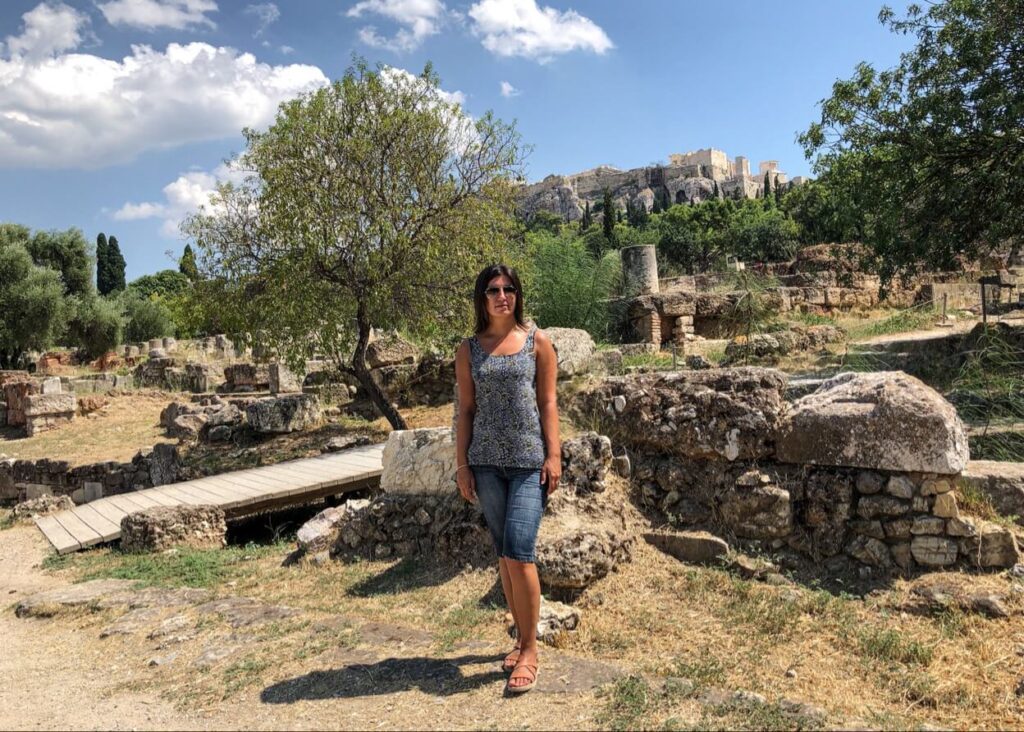
Ancient Agora of Athens is located at the foot of Areopagus, between Acropolis and Monastiraki. There are two ways to enter, one from the Acropolis side as you walk down and the other form Andrianou Street in Monastiraki. This green flatland used to be an ancient city centre, a lively place where common people met for the discussions and debates. The term ‘Agora’ literally translates into ‘a place of gathering’.
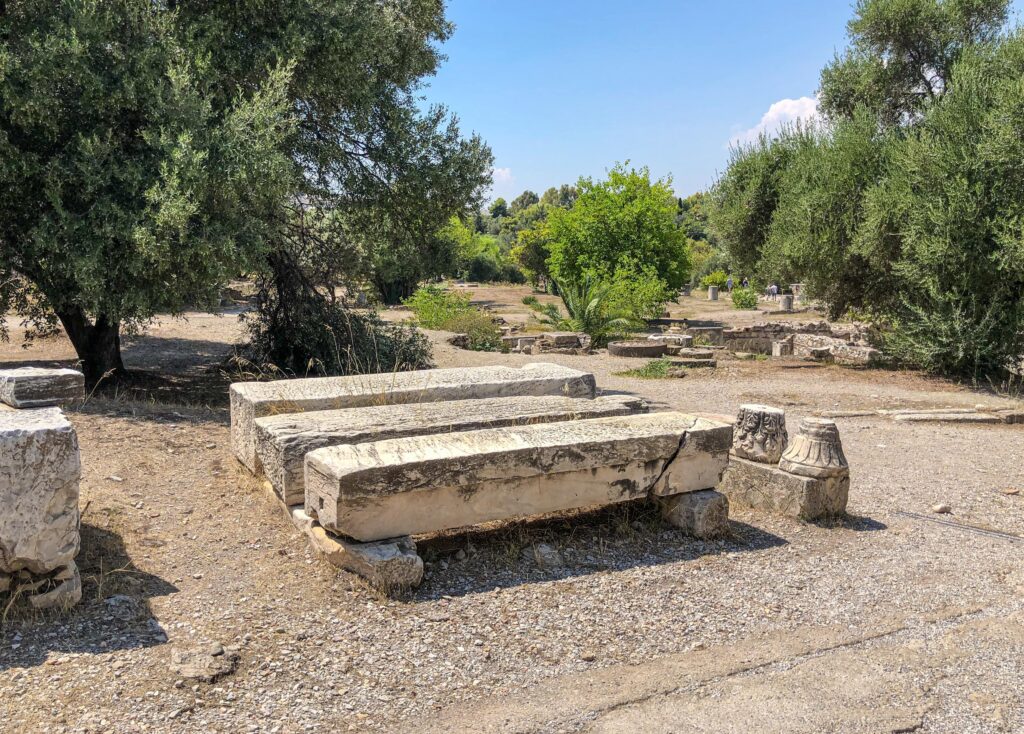
Why go? As you walk along the alleys between the remains of ancient buildings, you imagine the heart of metropolis, one of the richest in the Greek world. That’s where Athenian life flourished with temples, libraries, shops and other public buildings. Not much of it is left now with only foundations, shattered columns and fragments of sculptures lying on the ground. But, you imagine this city being so lively with people busy shopping around? It truly must have been amazing!
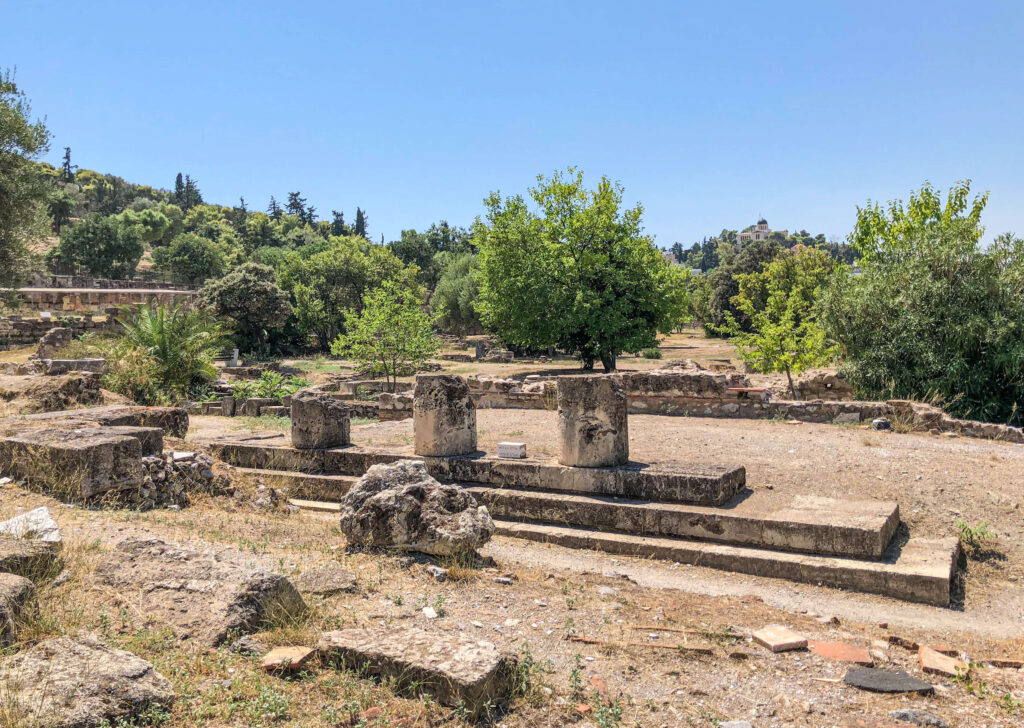
Being there means walking the same street as Sophocles used to take and visiting exactly same places Socrates or Plato used to teach. It’s like a journey through the history and time. The Ancient Agora is where Socrates talked to the people about the key moral concepts such as the Good and Justice. That’s also where he became a father of moral philosophy and ethics that the Western world follows till now. Although he left such a heritage, he had been put in prison, sentenced for demoralizing young people and killed by drinking a poison.

In 1931 American School of Classical Studies at Athens initiated the process of excavating the Ancient Agora in Athens. They convinced the Greek government to destroy around 400 houses and businesses turning the area into one major archaeological site. Although it wasn’t popular among its residents, it brought many artefacts back to life.
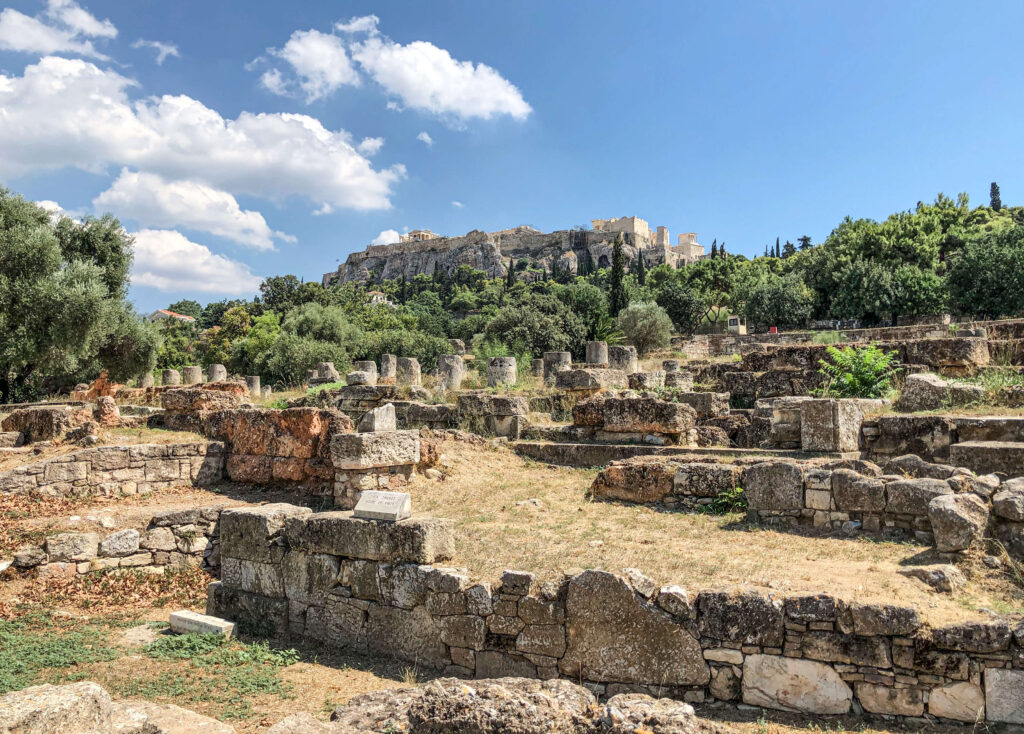
Did you know that Ancient Agora it’s the only one that has a modern train running through it? When the train line connecting with Piraeus port was built, lots of ancient remains were also discovered. The truth is that Ancient Agora holds the most impressive building including Stoa of Attalos, Odeon of Agrippa, Church of the Holy Apostles Solaki and Temple of Hephaestus.
Useful Information:
- Entrance – Acropolis Ticket
- Opening hours – 8:00 to 20:00
- Time – 45 min
Stoa of Attalos
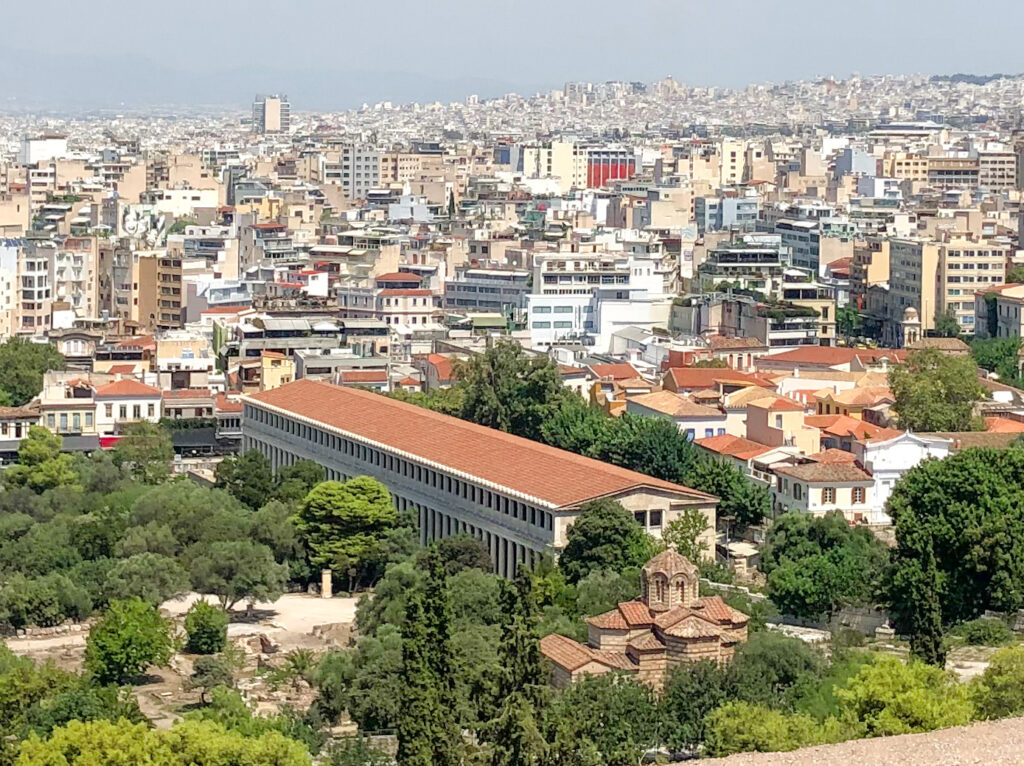
Stoa of Attalos is the main building in the Greek Agora located on the eastern side. It was built between 159 BC till 138 BC by the Asian King Attalos II and consists of two floors and two lines of marble columns (colonnaded walkway) on the ground floor. The stoa is identified as a gift to the city of Athens for the education that Attalos received here.
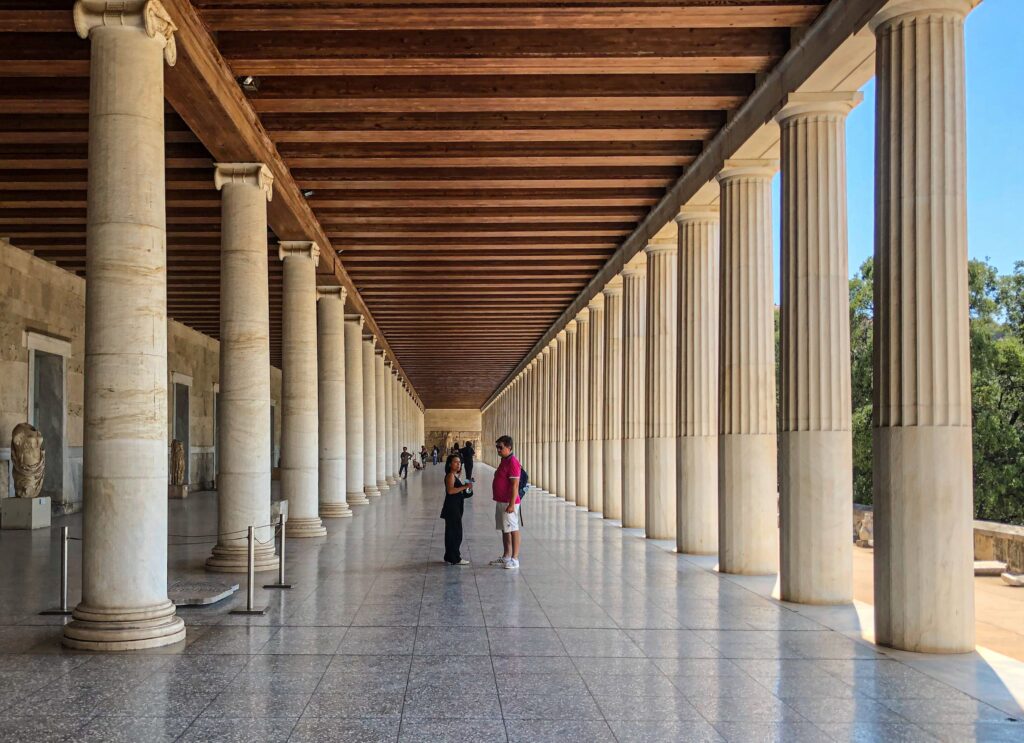
Because the Ancient Agora was a place of trade, the Stoa of Attalos became sort of a commercial hub with around 21 shops and stalls to buy from. In fact, it was the first and largest shopping centre of the antiquity and became the main meeting point of the Athenians from this period. Sadly, the stoa was destroyed during a siege in 267 AD and was restored in 1953-1956 by the American School of Classical Studies. These days it’s used to host an archaeological museum, called the Agora Museum where the artefacts from Byzantine, Turkish and Roman period are stored.
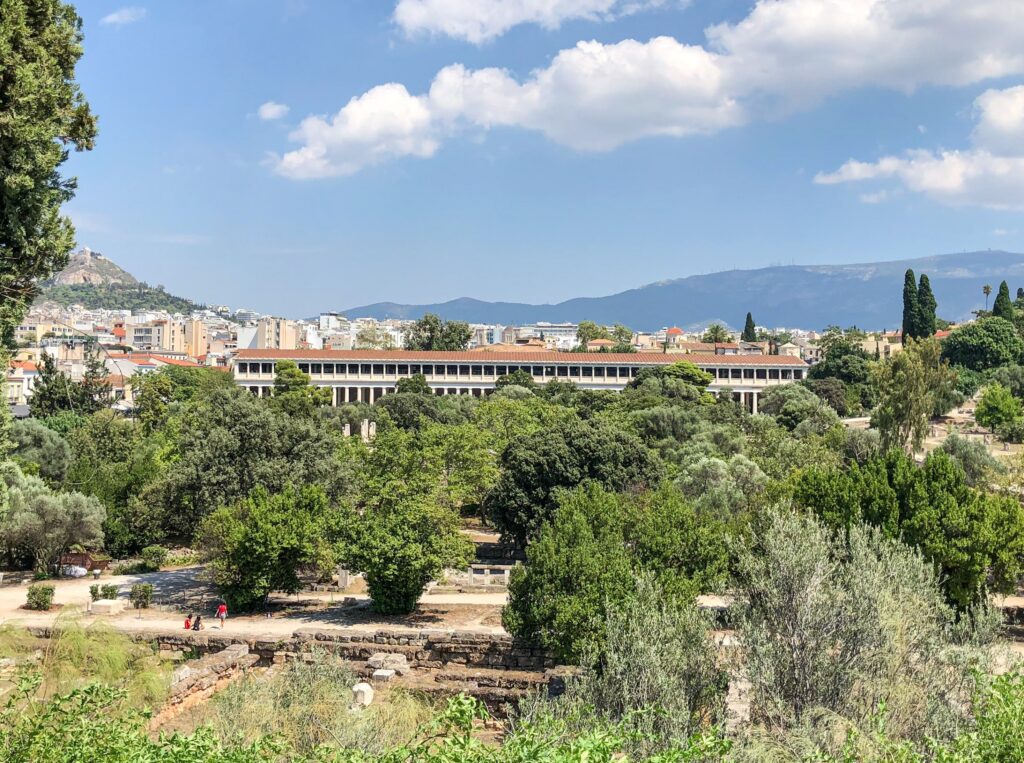
The artefacts worth mentioning are a giant body state of god Apollo, the large statue of a female figure (goddess or queen), a water clock (clepsydra) used to measure time in the courthouses, a tomb of a little girl that dates from the Geometric times and a bronze Spartan shield that the Athenians took as a war prize in the Battle of Sfaktiria (425 BC). Others include findings such as marbles statues, parts of columns, coins, ceramic vases, items of daily use, reliefs, weapons and other pieces dating from the Neolithic times till the 6th century AD. Definitely worth a visit!
Useful Information:
- Entrance – Acropolis Ticket
- Opening hours – 8:00 to 20:00
- Time – 20 min
Odeon of Agrippa

Odeon of Agrippa was build around 15 BC as a large concert hall. It was based in the centre of Ancient Agora and was able to accommodate around 1,000 visitors. As a matter of fact, the Odeon of Agrippa was a gift to the people of Athens from Marcus Vipsanius Agrippa, the Roman statesman and general of Augustus. One can say it was sort of a Roman addition to the old Greek Agora.
The whole structure measured 51.4 x 43.2 m and had a roof span of 25 m which collapsed around 150 AD. Initially there were two superimposed colonnades of Corinthian columns around the central hall. Once the roof fell down, the building had been rebuilt and the large statues of Giants (with snake tails) and Tritons (creatures of the sea with fish tails) were added to the façade.
Unfortunately, Odeon of Agrippa was almost completely destroyed by Herulians in 267 AD. What’s left of it was the entrance wall and the road called the Panathenaic Way, an ancient route through Athens running through the Greek Agora of Athens upwards to the Acropolis. Back in the days this road was used during the procession taking place at the festival of Panathenaina. This festival was celebrated once a year and started on Athena’s birthday, which was an anniversary of the battle between the gods and giants.
Useful Information:
- Entrance – Acropolis Ticket
- Opening hours – 8:00 to 20:00
- Time – 10 min
Church of the Holy Apostles Solaki

The Church of the Holy Apostles dedicated to the Holy Apostles, also known as Holy Apostles of Solaki in the Ancient Agora is located near the Stoa of Attalos. The Solakis were either the family who sponsored a later renovation of the church or a family who populated the area around the chapel in the 19th century. It was built around 1,000 AD and remains one of the best preserved buildings from the Byzantine era.
Apart from being destroyed and later rebuilt, it became one of the first buildings that initiated Athenian architectural style based on the cross plan. Did you know that The Church of the Holy Apostles is not currently being used for any religious events except once a year? That’s when a liturgy celebrating the Twelve Apostles is performed on 30th of June to celebrate their patron day.
Useful Information:
- Entrance – Acropolis Ticket
- Opening hours – 8:00 to 20:00
- Time – 10 min
Temple of Hephaestus
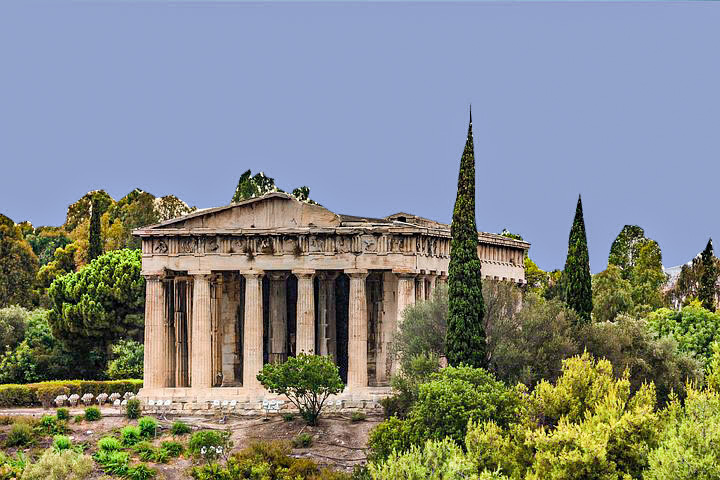
Temple of Hephaestus is the second best preserved building of Ancient Agora in Athens. This temple was built of Pentelic marble around 450 BC on top of tiny Agoraios Kolonos Hill and designed by Iktinus, one of the talented architects who also worked on Parthenon. Standing directly across from the Stoa of Attalos, it’s reachable by climbing the hill at the western edge of the city.
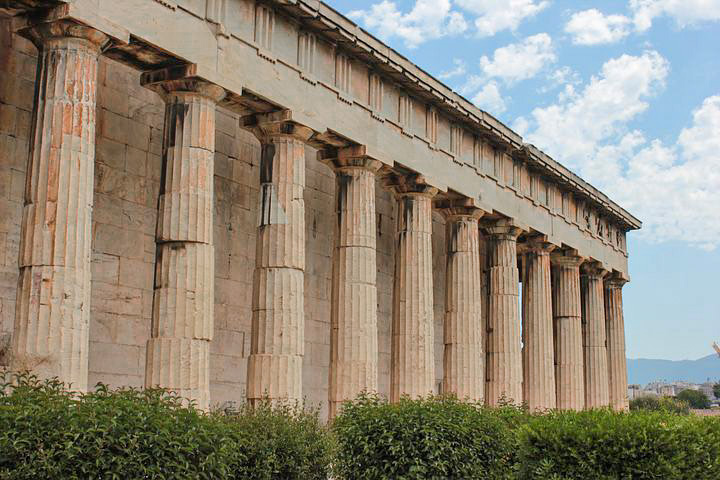
The temple has 6 columns on the short east and west sides and 13 on the north and south sides. Its friezes and other decorations have been greatly damaged by earthquakes and invasions along the centuries. On the eastern front of the temple, there are sculptures depicting the labour of Hercules and the battle of Theseus with the Pallentides, the fifty children of Pallas. On the west side, the sculptures depict the fall of Troy.
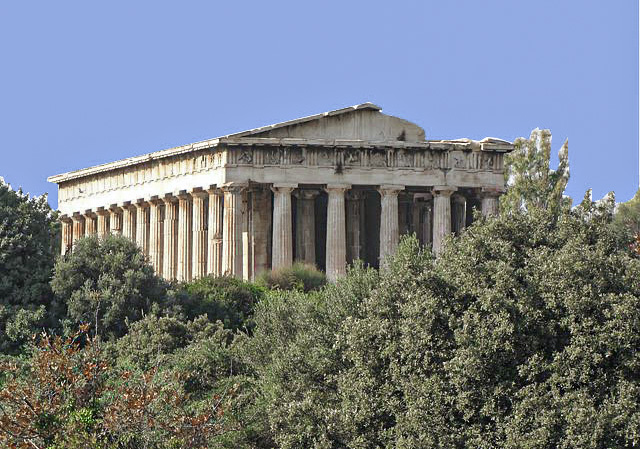
Why go? The climb is all worth it! The temple itself is an amazing example of a Doric design that hasn’t changed much since the ancient times. This amazing temple was dedicated to both, the Athena the goddess of pottery and crafts and Hephaestus, the Greek god of fire, craftsmanship and metal working.
The Temple of Hephaestus was converted from the pagan into the Christian Orthodox church in the 7th century. That’s when it was dedicated to Saint George Akamatus where the last Holy Mass took place in February 1833, when King Otto arrived in Greece. In the 19th century, The Temple of Hephaestus was used as a burial place for the non-Orthodox Europeans and philhellenes. No one can argue it’s one of the most photographed buildings in the Ancient Agora, right after the famous Parthenon.
Useful Information:
- Entrance – Acropolis Ticket
- Opening hours – 8:00 to 20:00
- Time – 20 min
Roman Agora
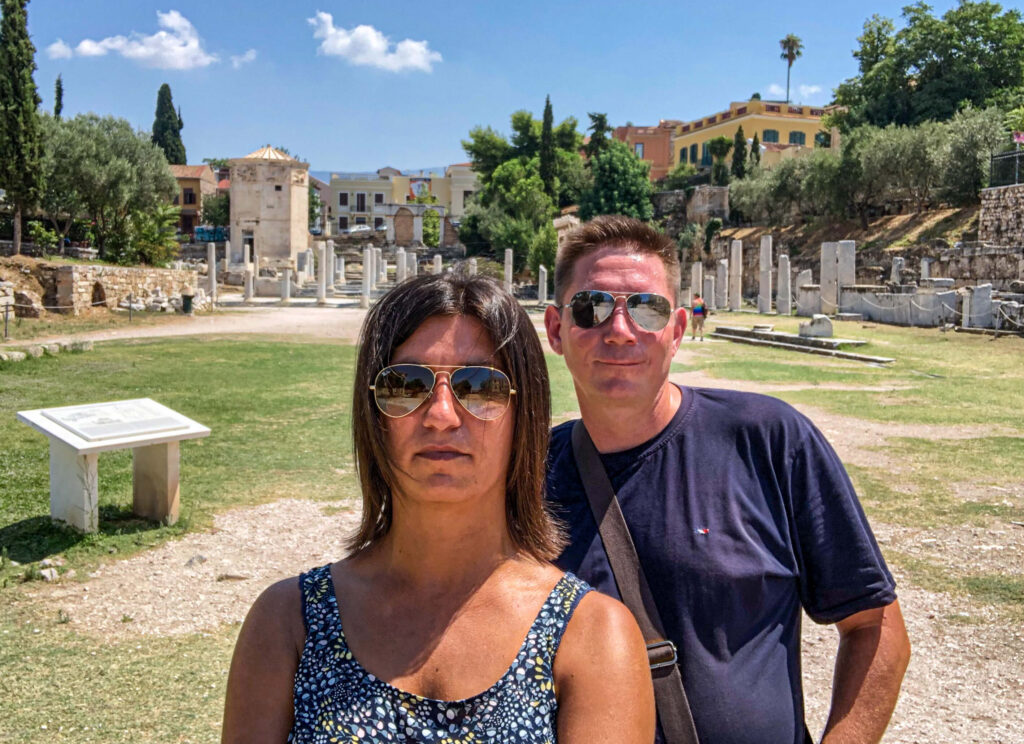
The Roman Agora is located east of the Ancient Agora, north of the Acropolis and close to Monastiraki Metro Station. It was built around 1st century BC during the reigns of Julius Caesar and Caesar Augustus. Because those two loved Athens so much, they donated the money to build this part of the city. During the ancient times it was a place of trade making it sort of extension of the Ancient Agora, which was located just 100 metres apart and connected by a paved street.

Why go? The Roman Agora was shaped into a rectangular square with dimensions of around 98 by 111 metres. Within its area there was a large open-air courtyard surrounded by shops on the eastern side and colonnades on all four sides, plus a fountain. What’s left these days are two monumental gates located on the western and eastern side, one was them built in the Doric style (Gate of Athena Archegetis), leading to the Tower of the Winds and the other in the Ionic design.
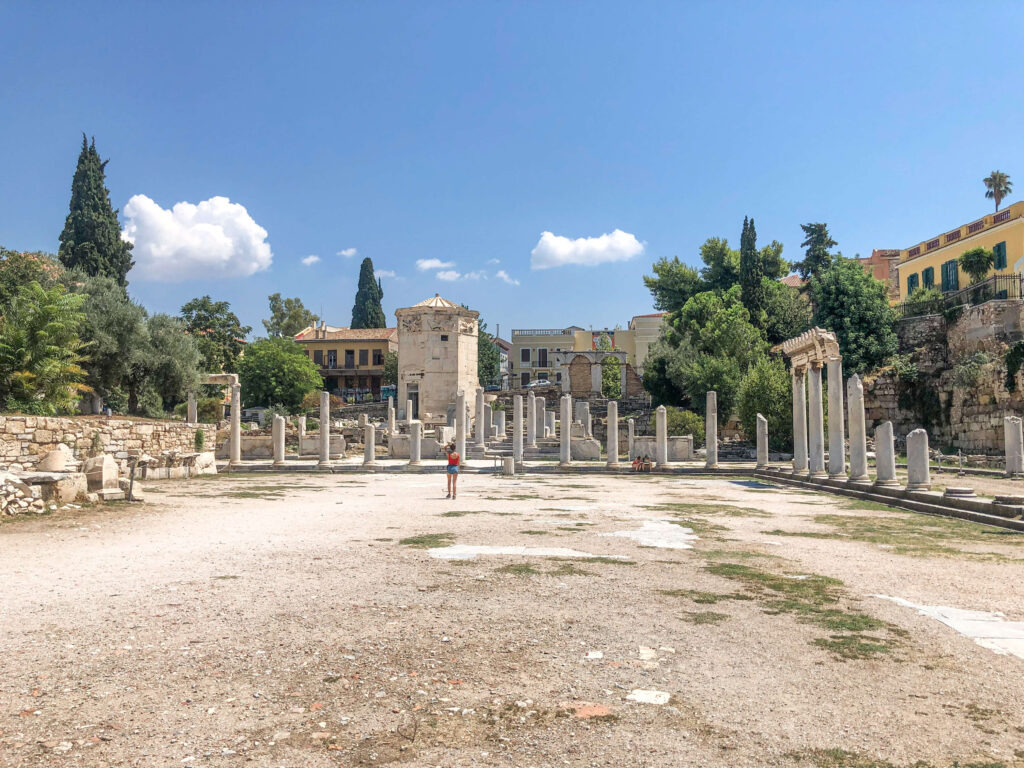
After the invasion of Heruli in 267 AD, the Roman Agora became the commercial and administrative centre of Athens. Along centuries, the invasions of the Venetians and the Ottomans destroyed the site and gradually the area was covered with houses, workshops, churches, and mosques. Although not much is left of the Roman Agora, the main sites still include:
- Gate of Athena Archegetis
- Hadrian Library
- Tower of the Winds
- Turkish mosque of Fethiye Djami
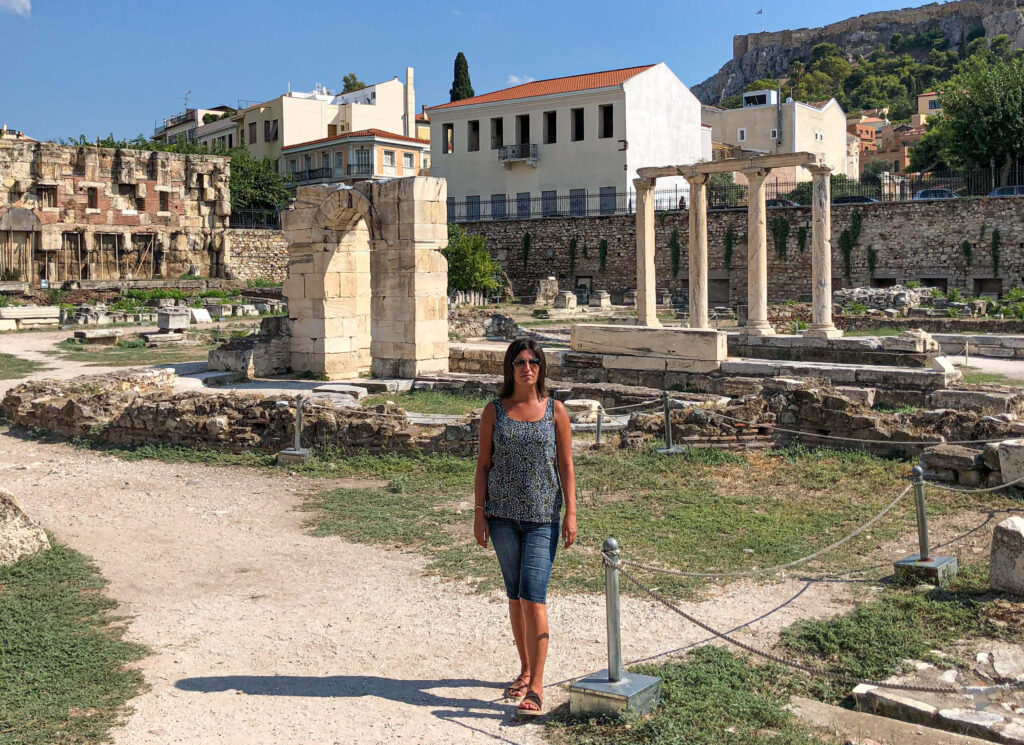
Did you know that the Roman Agora can be viewed from the outside free of charge? If you are not getting a combined ticket to see the whole of Acropolis, you can save money by seeing it from behind bars. There are many tavernas nearby where you can enjoy the Greek lunch and admire the views of this ancient part of Acropolis.
Useful Information:
- Entrance – free from outside, Acropolis Combined Ticket
- Opening hours – 8:00 to 20:00
- Time – 20 min
Gate of Athena Archegetis

The Gate of Athena Archegetis is located on the western side of the Roman Agora and these days it’s used as the main entrance to this site. Built in 11 BC with the inscription on the architrave indicating that this monumental gateway was dedicated by the people to Athena Archegetis (the Leader) and constructed with donations from Julius Caesar and later from Caesar Augustus.

The gates as well as the rest of the Roman Agora were excavated by the Greek Archaeological Society in 1837. Before that the whole space had been covered with modern buildings that must had been demolished to make the ancient remains rise from the ground.
Useful Information:
- Entrance – free to visit from outside, Acropolis Combined Ticket
- Opening hours – 24/7 (from outside), 8:00 to 20:00 (Combo Ticket)
- Time – 10 min
Hadrian Library
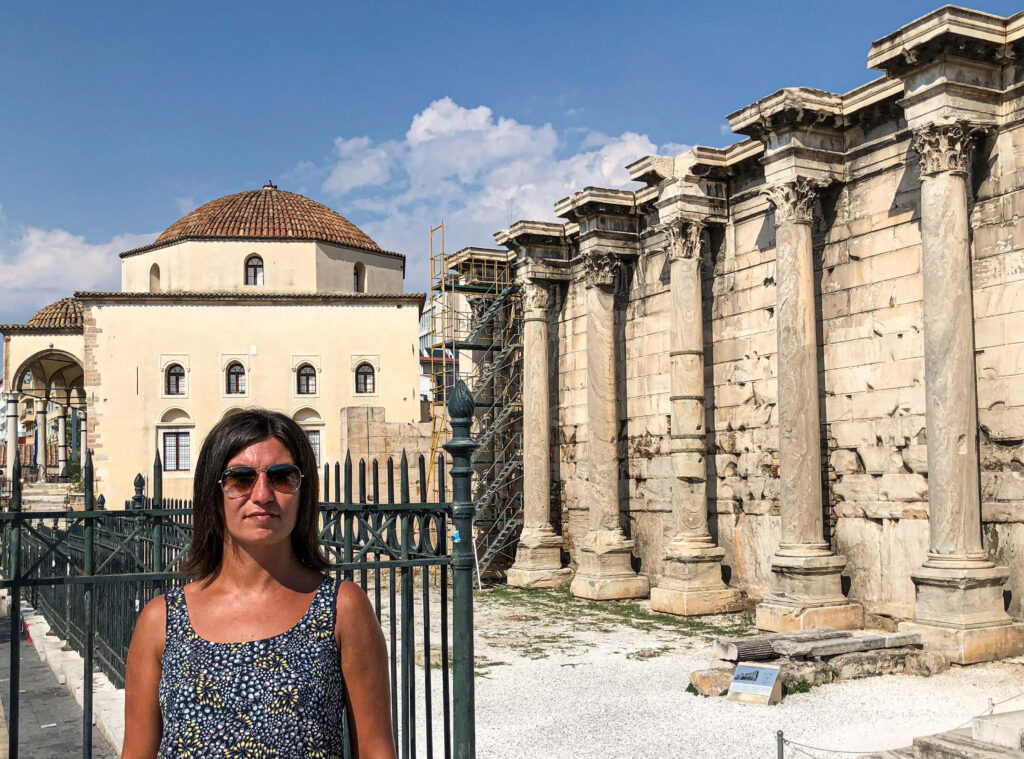
Hadrian Library is the buildings neighbouring the Roman Agora and Monastiraki Square on the north side of the Acropolis. Built in 132 AD by the Roman Emperor Hadrian as a Roman forum with a pool in the centre of a courtyard.
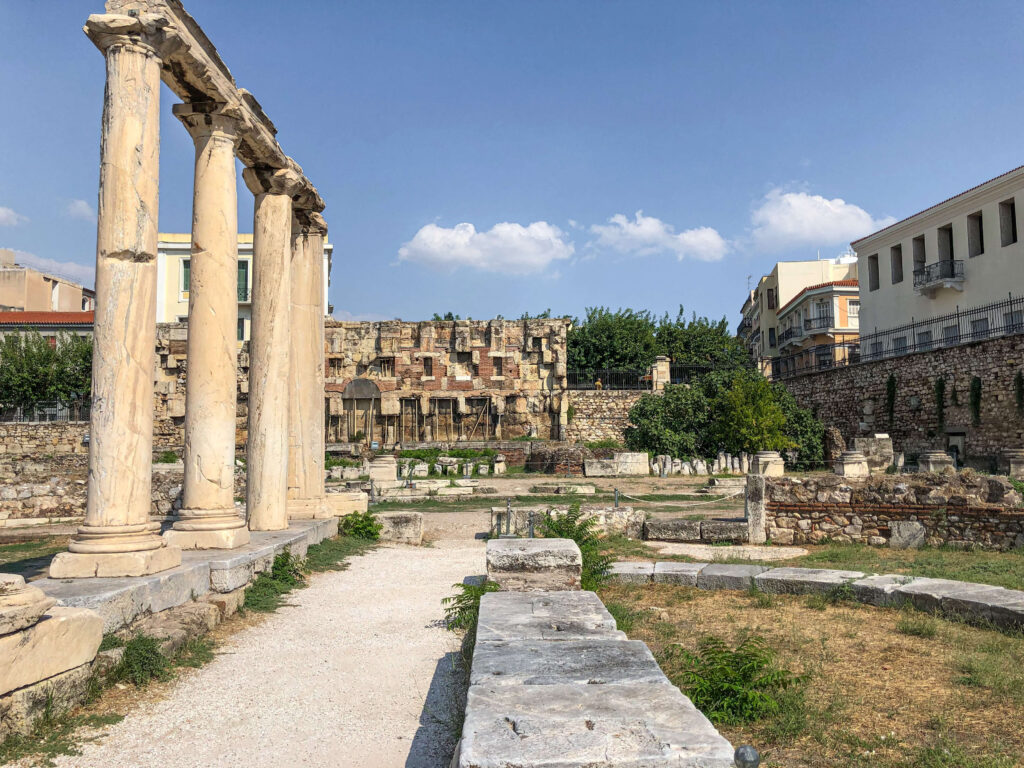
This structure was bordered by 100 columns, of which only a few survived and used to hold the music and lecture rooms. Destroyed by the Heruli in 267 AD, it was later repaired in the Byzantine times between 407 and 412 AD. Later in history, different churches were built on the site and further renovation was carried out in the Ottoman period.
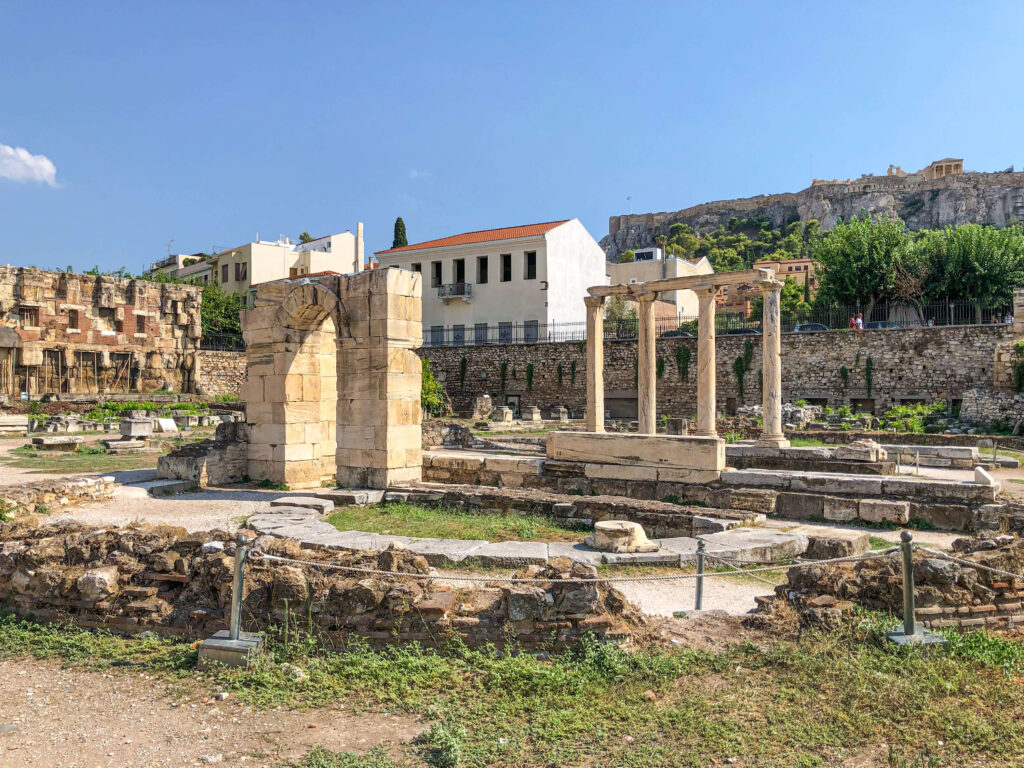
When the western wall was restored, it became the most impressive part with the Corinthian columns on the well-preserved outer wall which these days serves as the entrance to the courtyard. Although there isn’t much left of the Hadrian’s Library, you can easily get an idea of what it looked like when it was initially built.
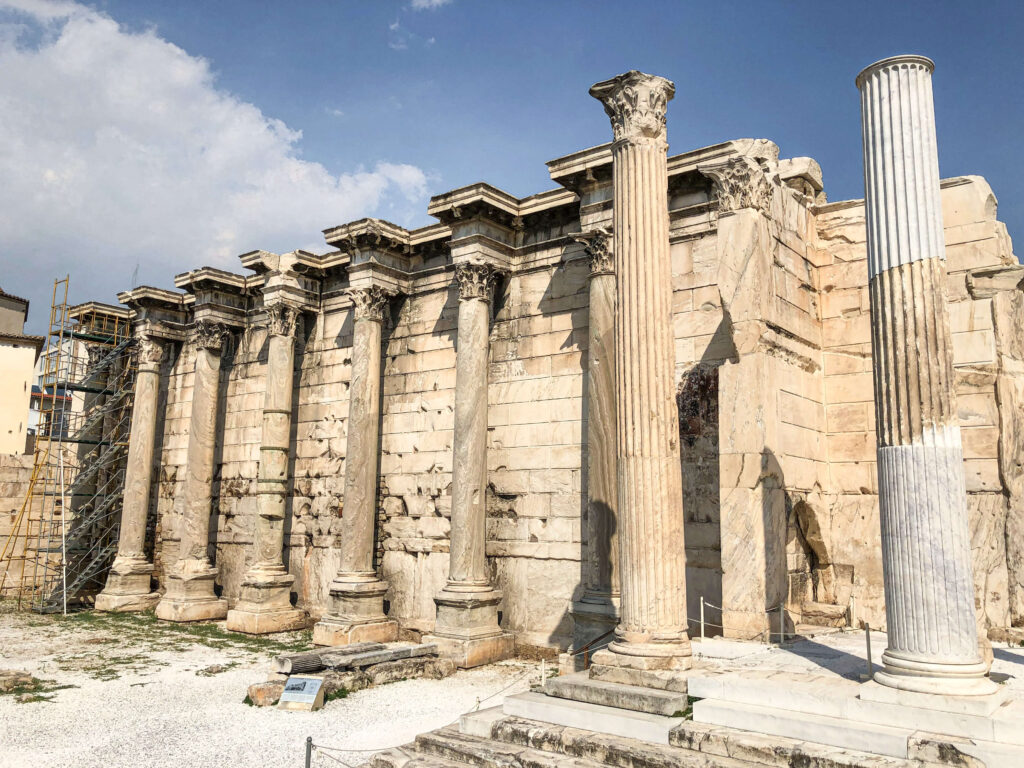
Useful Information:
- Entrance – free to visit from outside, Acropolis Combined Ticket
- Opening hours – 24/7 (from outside), 8:00 to 20:00 (Combo Ticket)
- Time – 15 min
Tower of the Winds
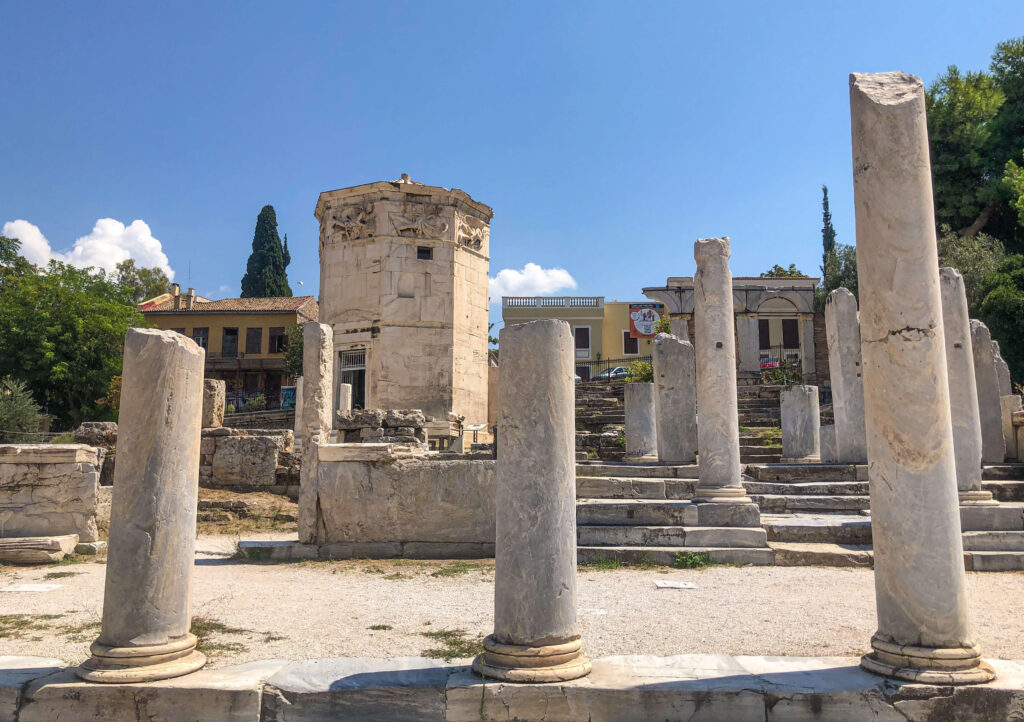
The Tower of the Winds is located on the eastern side of the Roman Agora. As it was built of the Pentelic marble, the same kind used for the Parthenon around the 2nd century BC, it’s also considered one of the best preserved buildings of the Roman Forum. Back in the days it included sundials, clepsydra (water clock) and a weather vane, effectively making it the first meteorological station in the world.
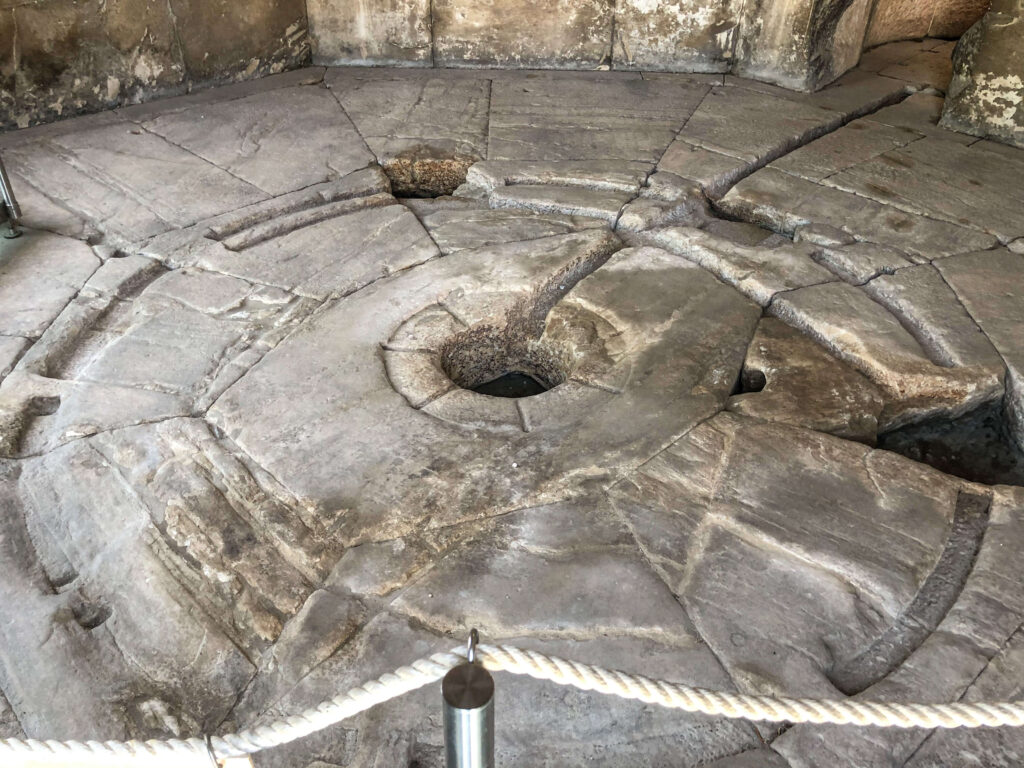
Generally, the Tower of Winds was built as a clock to measure the time of the day with running water and by the position of the sun, but also to predict a weather. This tower was shaped in the form of octagon with eight walls featuring the reliefs on the top of each side. Because each side faces a point on the compass, it also has a frieze depicting each of the eight ancient Greek wind gods, giving the tower its name.

The friezes portray eight gods of the wind and face the exact geographical directions they blow into: Boreas (north), Kaikias (northeast), Eurus (east), Apeliotes (southeast), Notus (south), Lips (southwest), Zephyrus (west) and Skiron (northwest). To make the measurements more accurate, the water for the clock was supplied from a stream on the northern slope of Acropolis.
Useful Information:
- Entrance – free to visit from outside, Acropolis Combined Ticket
- Opening hours – 24/7 (from outside), 8:00 to 20:00 (Combo Ticket)
- Time – 10 min
The Turkish mosque of Fethiye Djami

The Turkish mosque of Fethiye Djami, which stands on the northern side of Roman Agora was built in 1456 AD as a Christian church, later converted into the Turkish mosque by Sultan Mehmed the Conqueror. During Venetian occupation this Byzantine building was converted back into a Catholic church and after the Greek War of Independence used by the school to promote the Hellenic culture. The Turkish mosque of Fethiye Djami has never been completely restored and these days it’s being used as storage for the archaeological finds.
Useful Information:
- Entrance – free to visit from outside, otherwise included in the Combo Ticket
- Opening hours – 24/7 (from outside), 8:00 to 20:00 (Combo Ticket)
- Time – 10 min
Hadrian’s Arch

The Hadrian’s Arch is an ancient triumphal arch located between the rocks of Acropolis and the Temple of Olympian Zeus. Made of fine Pentelic marble, this arch is 18 m high, 12.5 m wide and 2.3 m in depth. The monument has two layers with an arched gate through which people could pass. The construction of this monument started in 131 BC to celebrate the arrival of the Roman Emperor Hadrian and to thank him for his benefactions for the city.
Did you know? The Hadrian’s Gate was used to separate the ancient city of Athens from the one the Romans ruled over. Symbolically the location of the arch was to mark the line between the Greek part of Athens and the Hadrian’s new city. In fact, there are two inscriptions carved on each side of the Hadrian’s Arch, one facing the Acropolis saying ‘This is Athens, the ancient city of Theseus’ and the other facing the Olympeion ‘This is the city of Hadrian, not of Theseus’.
In the 18th century, the Arch of Hadrian was one of the seven gates used as the defensive wall that the Turks built around Athens against the attack of the Albanians raiders. Although this the monument was never fully protected, it has survived time in an extraordinary condition.
Useful Information:
- Entrance – free
- Opening hours – 24/7
- Time – 10 min
Temple of Olympian Zeus

The Temple of Olympian Zeus also known as the Olympeion was dedicated to the mythological god of Zeus, the chief of Olympian gods. Located near the Arch of Hadrian it stands between the Acropolis and Syntagma Square making it easy walk to reach on foot. The construction started around 6th century BC taking roughly 638 years to finish at the time when Romans occupied Athens.
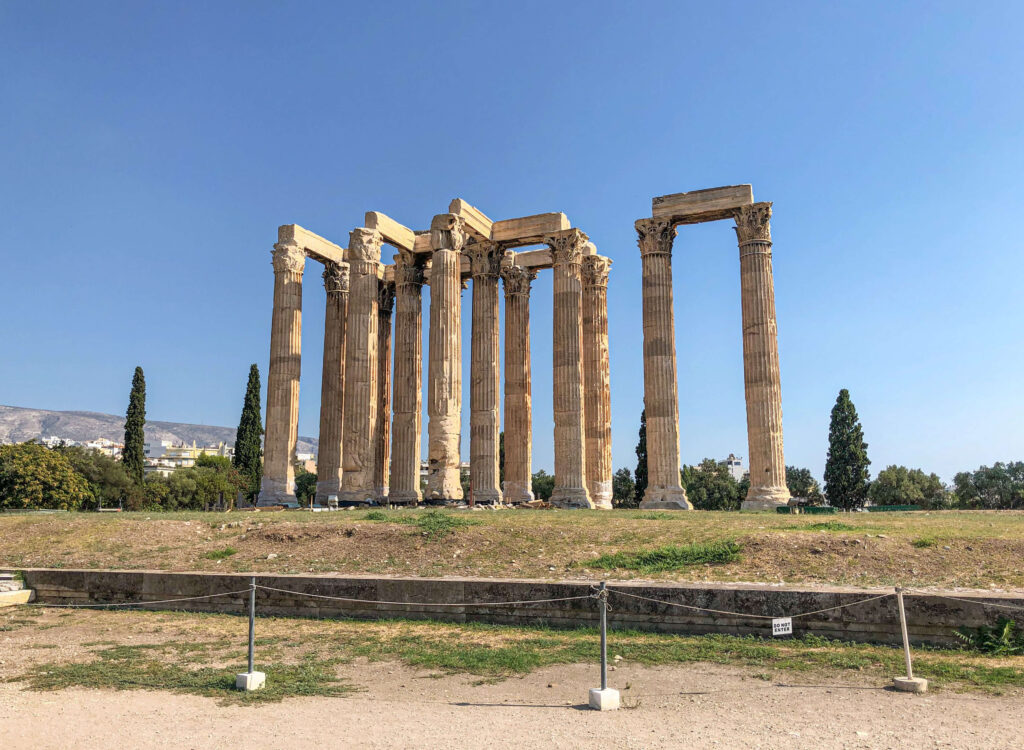
Initially, the Temple of Olympian Zeus was intended to be built out of limestone in the Doric style and its size was supposed to be the hugest of all temples. However, the works stopped in 510 BC due to political disorders when the tyrant Hippias was exiled from Athens. When the Roman emperor Hadrian completed restoring this temple in 125 BC, it had 104 columns of 17 metres high and 2 metres in diameter.

Unfortunately, the Temple of Olympian Zeus was badly damaged throughout the centuries. When Christians dominated Greece in 425 AD, the Byzantine emperor Theodosius II prohibited the cult of ancient Greek and Roman gods in the temple. In fact, he allowed people to use its fine marble for the construction of churches, houses and other buildings around Athens.
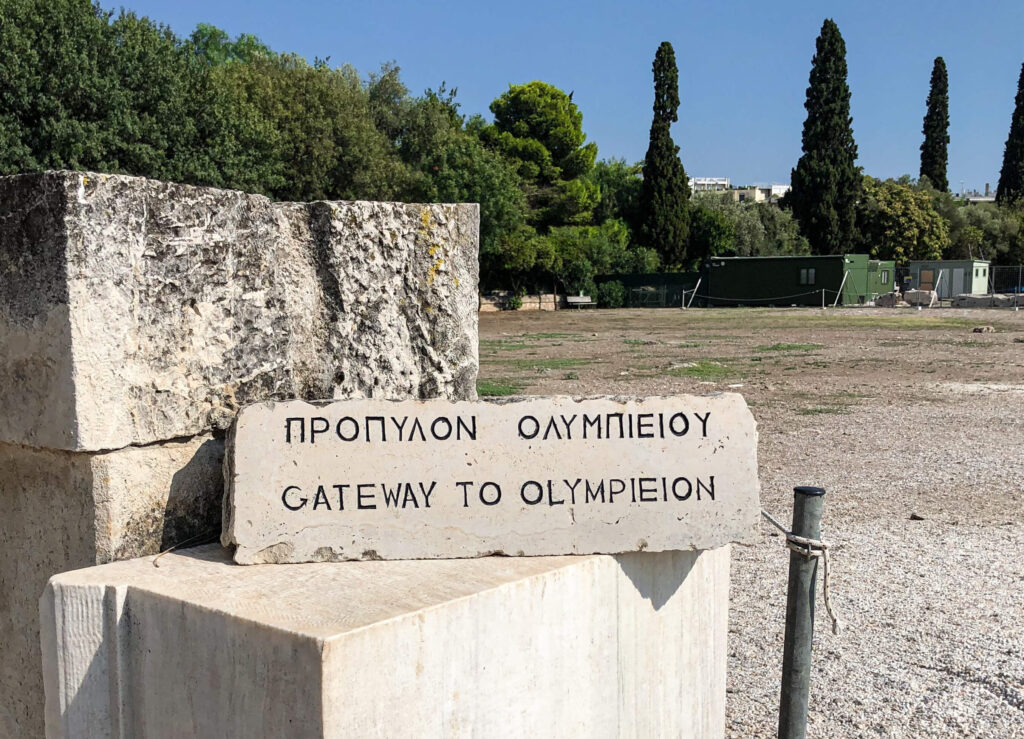
By the end of the Byzantine period in the middle 15th century only 21 of the 104 columns had survived. In the Middle Ages, the abandoned building began to be used as a source of free building material and over the centuries it was systematically looted. Sadly only by the 15 columns survived to the present day with one laying on the ground as knocked down by the storm in 1858.

Useful Information:
- Entrance – Acropolis Ticket
- Opening hours – 8:00 to 20:00
- Time – 30 min
Panathenaic Olympic Stadium
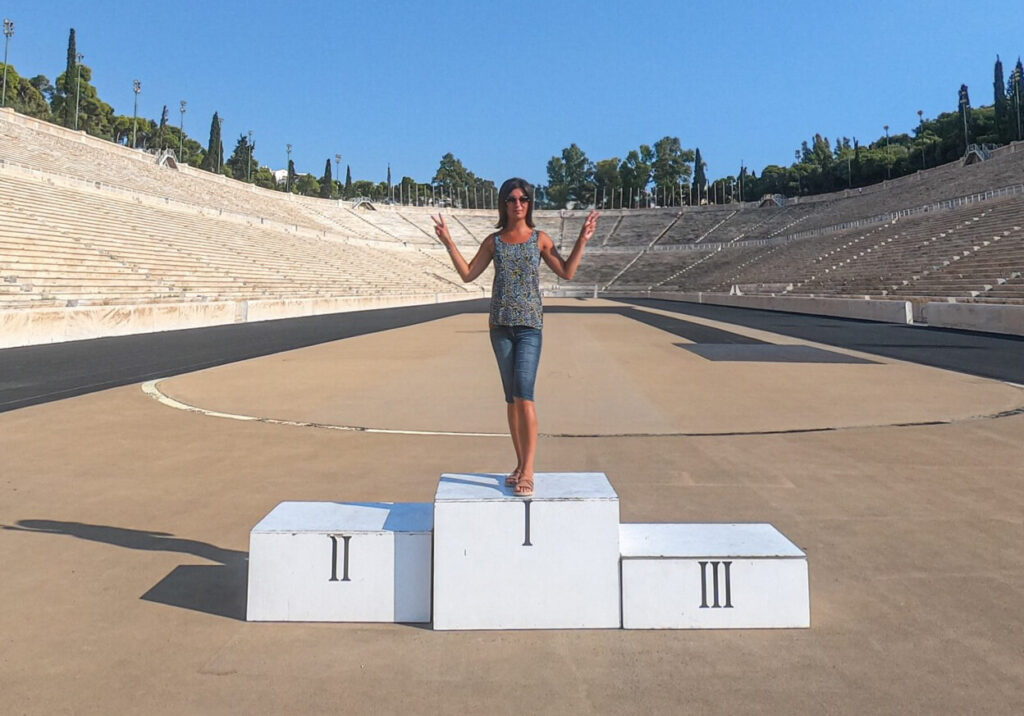
The Panathenaic Stadium is located between two hills of Agra and Ardettos, right on the banks of the Ilissos River. During centuries it underwent several transformations to eventually become home to the first modern Olympic Games held in March of 1896 (after Greece regained its independence). Interestingly, it still remains the only stadium in the world built entirely out of marble with a capacity to accommodate over 50,000 viewers.
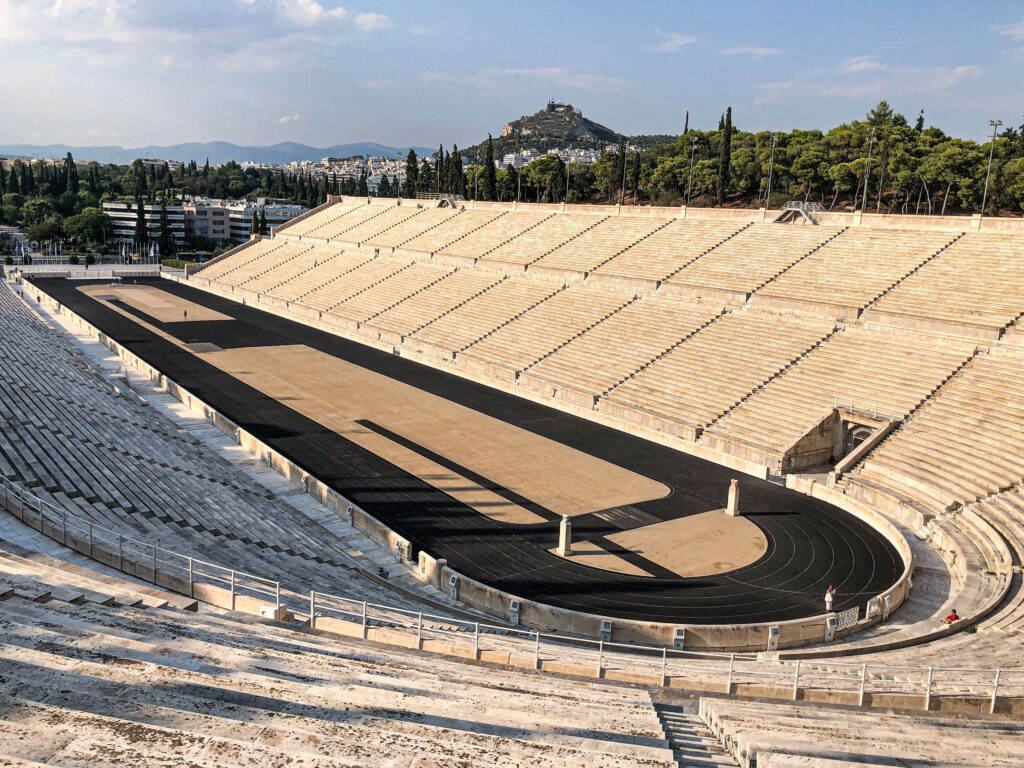
The term ‘Stadium’ is named after a length of a track or one stade, which was a sort of length measurement in Antiquity, equivalent to approximately 185 metre. It’s believed that the Panathenaic Stadium was constructed in the 4th century BC when the great orator Lycurgus aimed to create one venue to host sporting events as part of the Panathenaic Games, which were the biggest celebrations during the ancient times. Initially, it was built from the wooden materials in the rectangular shape to resemble a style of other Greek stadiums. Lycurgus’ Stadium was used for the first time in 330 BC during games in which nude male athletes competed against each other.

In the 2nd century AD (between 139 and 144 AD), during the Roman times and under the rule of Emperor Hadrian (117 – 138 AD), The Panathenaic Stadium was transformed from its original rectangular shape to a horseshoe (U-shaped one). It was made to resemble the Roman style and done thanks to generosity of Herodes Atticus. It’s said that at Hadrian’s inauguration in 120 AD a thousand wild animals were sacrificed in the arena.
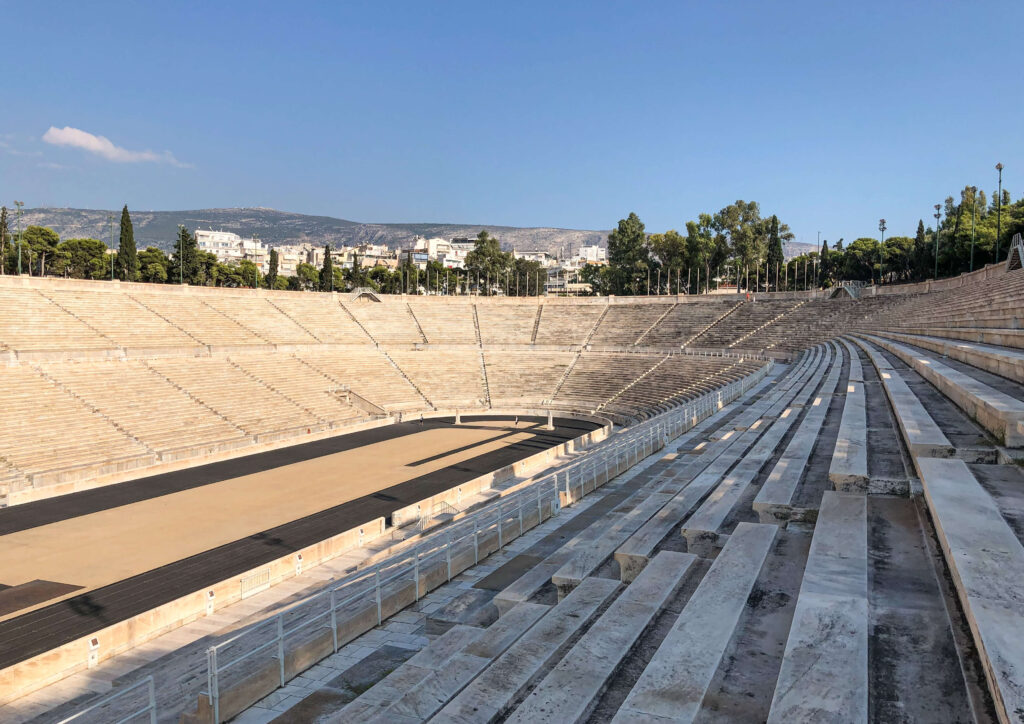
After a renovation, the stadium’s capacity increased to 50,000 viewers and seats got covered with Pentelic marble from Mt Penteli, the same one used to build the Acropolis. A vaulted passage under the east retaining wall was terminated at the back of the Stadium and the temple of Tyche (Fortuna) was built on the top of Ardettos Hill. It was also when the whole space was adorned with splendid statues and the tomb of Herodes dominated the hilltop left of the entrance.
With the prevailing of Christianity, prohibiting of pagan celebrations and the barbarous spectacles of Roman times, such as bloody gladiatorial duels and contests with wild beasts, the Panathenaic Stadium gradually presented a sad picture of dereliction, as these splendid marble were incorporated into Athenians buildings.
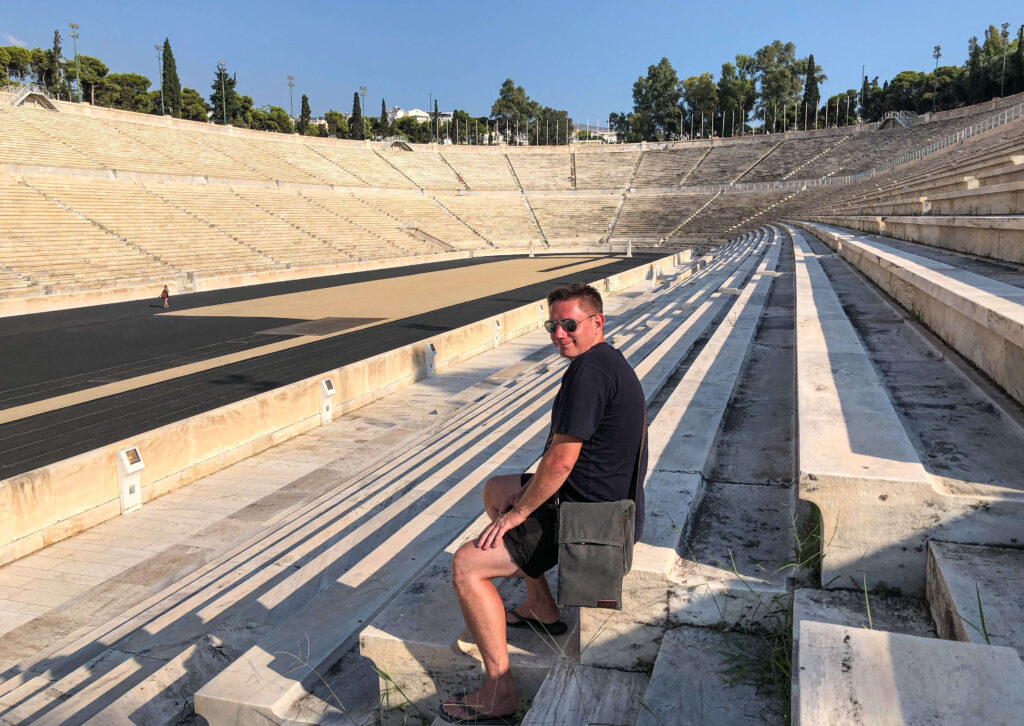
When Greece regained its independence, the first attempt at reviving the idea of the Olympic Games was initiated by Baron Pierre de Coubertin, who organised the International Olympic Conference in Paris in 1894. President of the Conference was Demetrios Vikelas, who persuaded the delegates that the first modern Olympic Games should be held in the Greek capital.
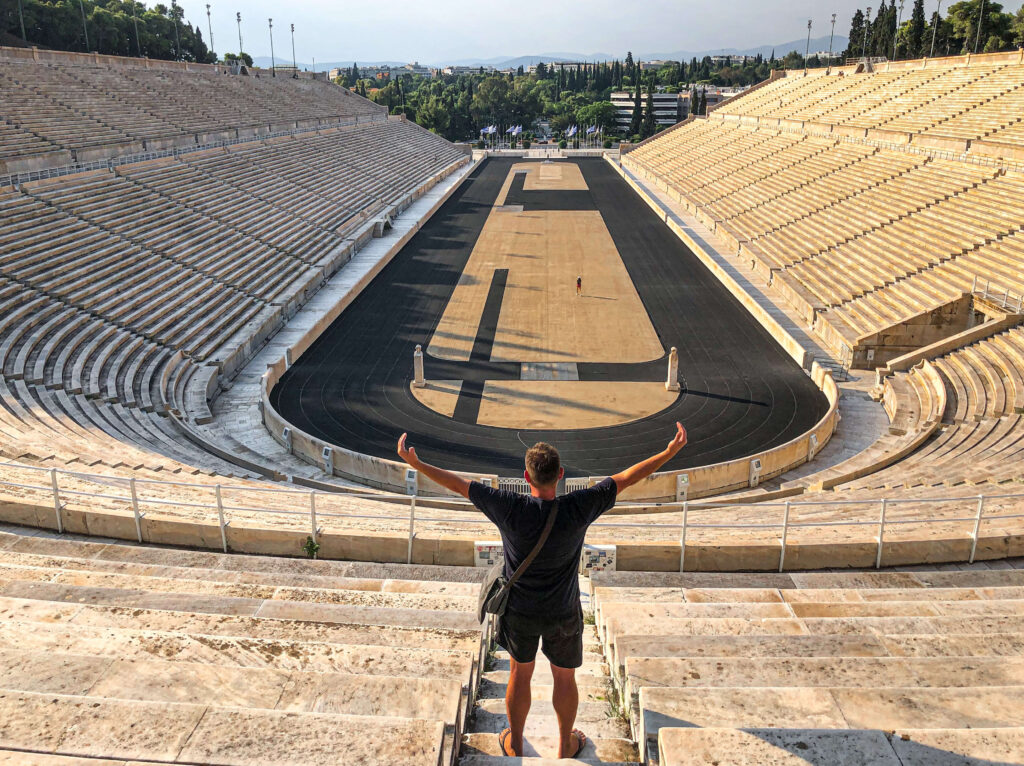
The Panathenaic Stadium was chosen to host it in Athens in March of 1896. The enormous expense of reconstructing the Stadium was undertaken by Georgios Averoff, whose marble portrait statue stands to the right of the entrance. During the games, the Greek athlete Spyridon Louis won the Marathon race, bringing a whole new level of joy to the country. From that moment onwards The Panathenaic Stadium hosted diverse events, including the most memorable Olympics which took place in Athens in 2004.
Why go? Back in the ancient times that’s where the Panathenaic Games were held. These celebrations happened every four years to honour the goddess Athena. For centuries this venue was home to sport disciplines such as running and horse racing but later extended to variety of athletic events. These days, you can enter the premises and move freely around the stadium.

To be honest, sitting on the white marble simply takes you back to its glorious days. If you climb up to the top row of the stadium and walk around, you get the most impressive views of Mt Lycabettus on one side and the Acropolis on the other. If you don’t want to pay for the entrance, you can view it from the front gate as a large part of the stadium is visible from the outside. If you want to feel like an elite athlete in training, you can join the daily run every morning from 7:30am – 9:00am.

Did you know? This amazing venue continues to hold significant cultural, music, sporting and ceremonial events. During an Olympic Games year, the Olympic flame travels from the ancient site of Olympia moving around Greece before finally arriving in the Panathenaic Stadium for an official hand-over ceremony to the new host country.
The Panathenaic Stadium include the following sites:
- Entrance
- Temple of Tyche/Fortuna
- Royal Boxes after 1908
- Seats with names of de Coubertin and Brundage
- Royal boxes of 1896
- Two sided Herms
- Part of Ancient Parapet
- Vaulted passage
- Site of the Tomb Herodes Atticus
- Exit
- Portrait of Georgios Averoff
Useful Information:
- Entrance – included in Acropolis Ticket
- Opening hours – 8:00 to 17:00
- Time – 1h
National Gardens of Athens
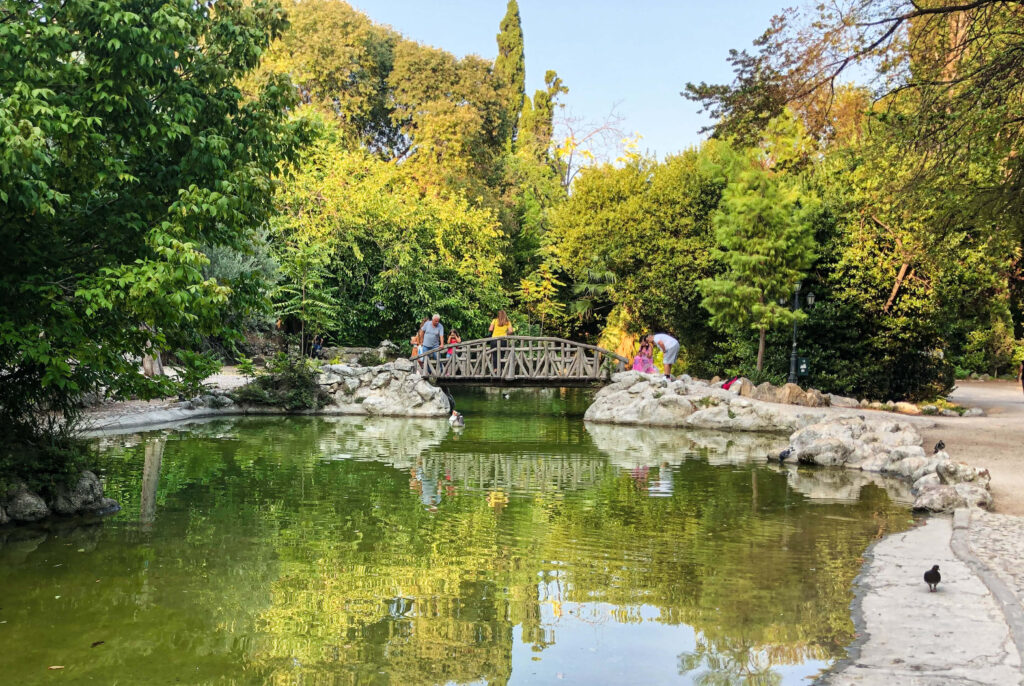
The National Gardens of Athens are located between the Panathenaic Olympic Stadium and Syntagma Square. When Queen Amelia, who was a wife of King Otto and the first queen of Greece arrived in Athens, she ordered to create these gardens somewhere between 1838 and 1840. In the heart of the National Garden, there is The Zappeion Exhibition Hall, these days used for meetings or ceremonies and named by Evangelis Zappas.
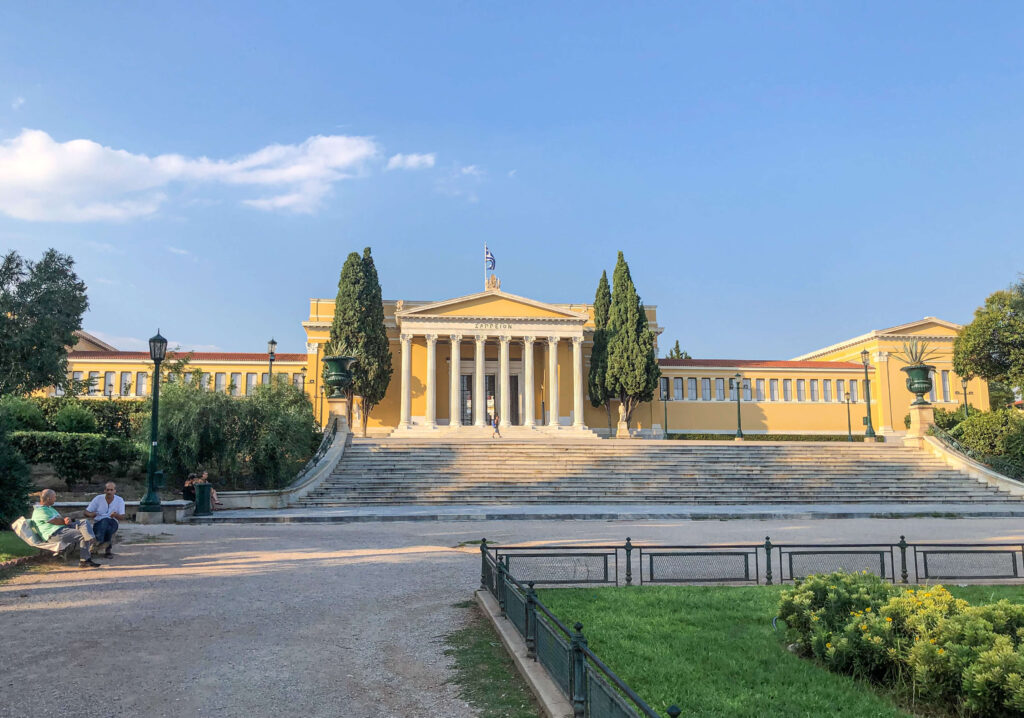
As he participated in the Greek War of Independence (1821–1832), he gave a lot of his own funds to make sure the Olympic Games were held at the Panathenaic Stadium. Although he didn’t live long enough to see them happen, he left instructions to create the ever first building to serve the Olympic needs. According to his wish, the Zappeion was build nearby.

The person responsible for planting the National Gardens was Friedrich Schmidt, a German architect. Not only did he shape the area with amazing structures but also he imported over 500 different plants and animals such as peacocks, ducks and turtles. Although the idea seemed brilliant back then, most of the new arrivals couldn’t get used to a hot Mediterranean climate and they didn’t survive.

Initially, the gardens of Athens were named the Royal Gardens. That’s because they was fenced and only the royal family had the right to walk there. When Greece regained its independence in 1975, the park was named the National Garden and opened to the public. Currently, it covers an area of almost 16 hectares and is full of narrow labyrinth paths, wooden benches and the small ponds in between. It also has 7 entrances and the Palm Alley with 12 palms planted by the Queen Amelia.
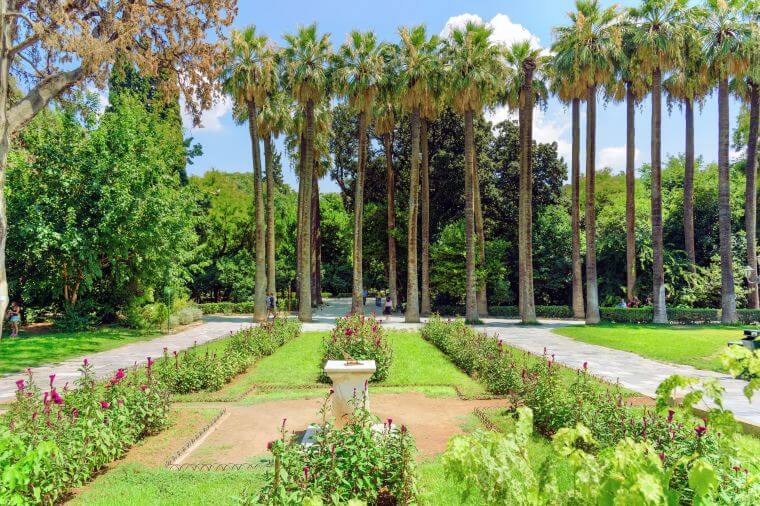
Why visit? The National Garden (Éthnikos Kípos) in Athens is one of the greenest places in the city. That’s where the locals escape to unwind after a long day. When a hot sun gets too much, the National Garden allows you to cool off in the shade of its trees. There’s nothing more relaxing than listening to the birds singing and soothing eyes with everlasting greenery. The park is also a great idea for a family trip as it hosts a mini zoo (wild goats, peacocks, chickens and other animals, playground, children’s library and a coffee shop.

The integral part of the National Gardens is the Botanical Garden with wonderful collection of plants from different parts of the world. That’s also where you find many ancient remains built to honour the national heroes such as poets or governors. When strolling through the park, it’s worth paying attention to the beautiful ancient mosaics, which although somehow neglected, still reflect the history of the city.
Useful Information:
- Entrance – free (except Zappeion)
- Opening hours – 8:00 to 20:00
- Time – 30 min
Syntagma Square, Greek Parliament and Guards
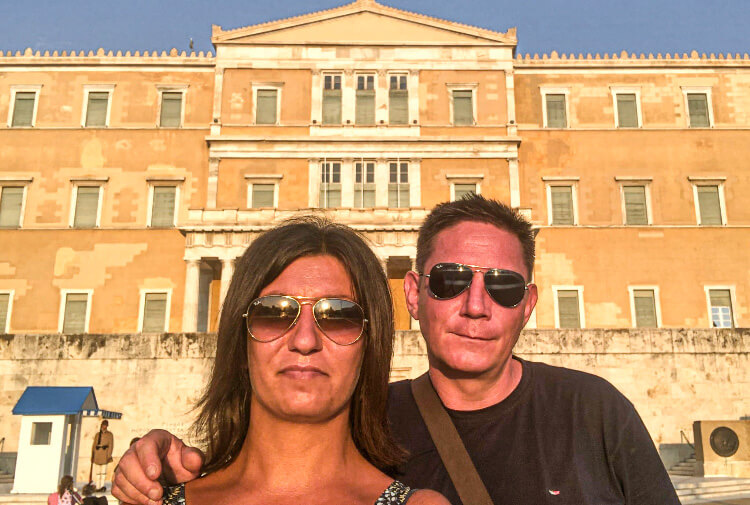
Syntagma is a central square in the city of Athens, located near the National Garden in front of the Greek Parliament building and Omonia Square. Because Syntagma Square is where the Athenians rose up against King Otto on 3rd September 1843 demanding a constitution, it’s also known as Constitution Square. After the war, he became the first king and his wife, Queen Amelia the first queen of Greece. The Syntagma Square was built in 19th century when the capital of Greece was moved from Nafplio to Athens.
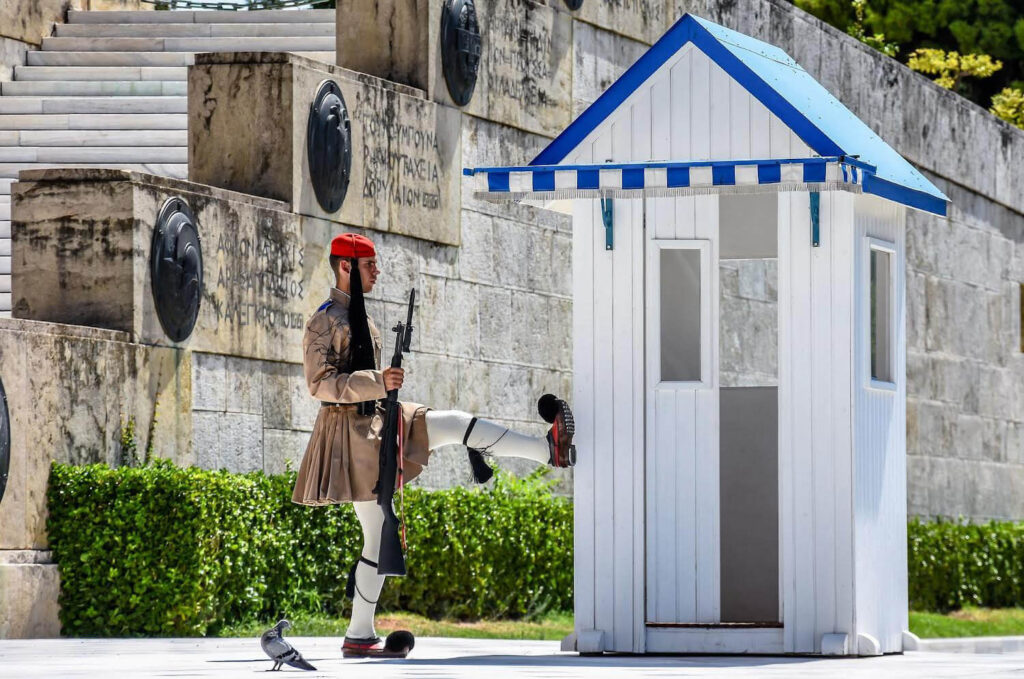
Did you know? Syntagma Square is where all public protests and demonstrations have taken place. In December of 1944, just after the departure of the occupying Nazi troops, a people’s rally at the square was marred by the killing of several Greek citizens from British fire. This tragic incident became the precursor of the bloody Greek Civil War, which raged from 1946 to 1949.
During the Greek crisis between 2010 and 2012 the square became the central point for protests. for those who opposed the harsh austerity measures the bailout program brought to the country. When the economical situation in Athens was getting worse, the square was turned into a field of tents that occupied the area. It’s believed it attracted between 10,000 to 50,000 citizens who protested with anger against the government decisions.
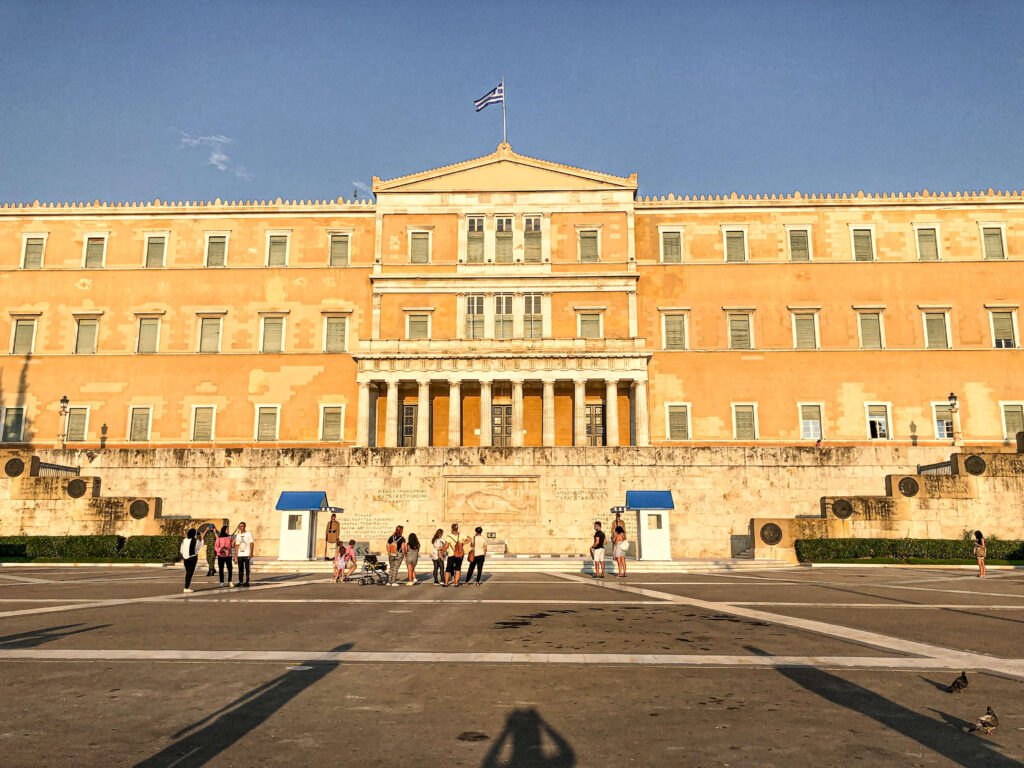
What to see there around the Syntagma Square? It’s where you find the Old Royal Palace, which has been home to the Greek Parliament since 1934. The palace was designed by architect Friedrich von Gärtner, under commission from King Ludwig I of Bavaria and completed in 1843. After suffering fire damage in 1909, it entered a long period of renovation.
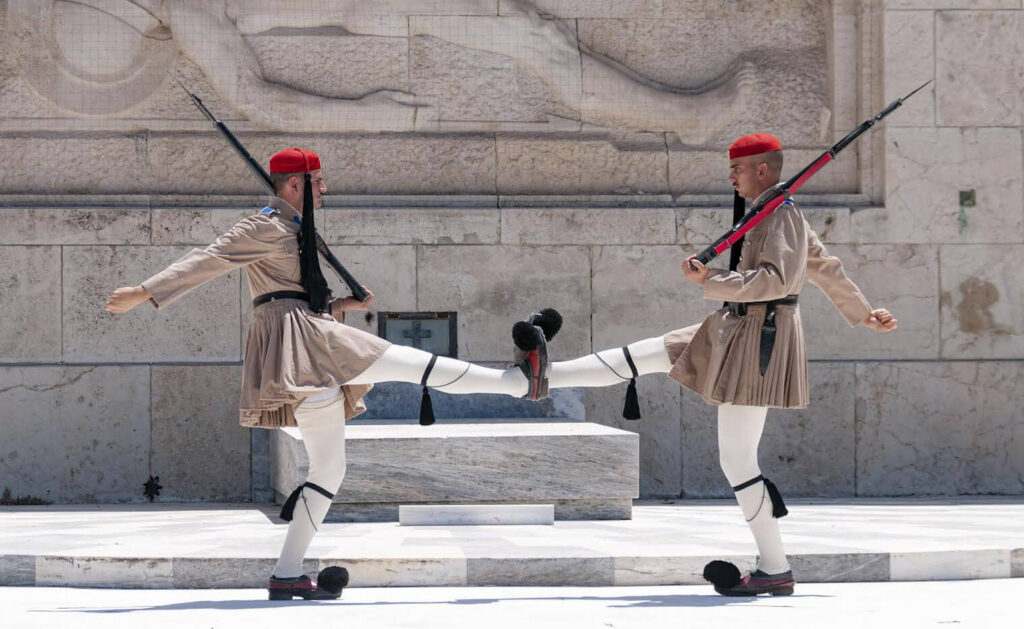
While the King and his family moved to the Crown Prince’s Palace, one block to the east on Herodou Attikou Street, some members of the royal family remained there until the abolition of the monarchy in 1924. Since then, the building was used of variety of purposes including a shelter for Greek refugees, hospital during World War II, museum for the personal effects of King George I of Greece until it became the house of the Hellenic parliament in 1934.
These days foreign visitors can visit the Hellenic Parliament for free. During the guided tours they discover the Assembly Hall, as well as to learn about Modern Greek history, the form of government in Greece, parliamentary procedures and the history of the Hellenic Parliament building.
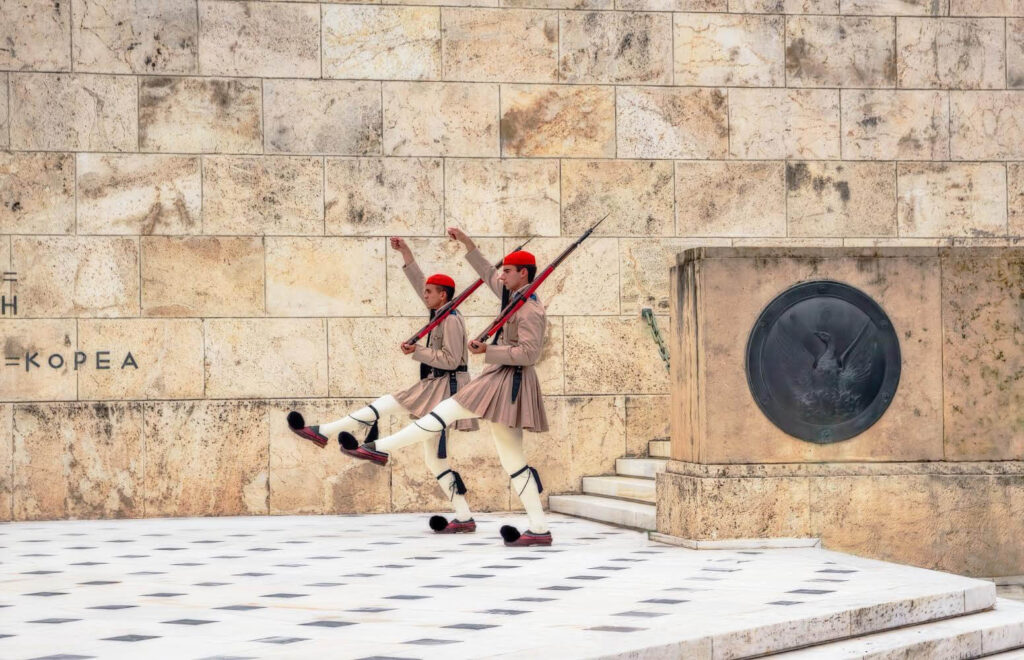
What else to see around Syntagma Square? Right in front of the Hellenic Parliament there is the Tomb of the Unknown Soldier. This place is dedicated to Greeks soldiers who died during the Greek War of Independence and guarded by a unit of the Hellenic Army, known as the Evzones of the Presidential Guard. These guardsmen are selected according to their height, physical condition and psychological state.
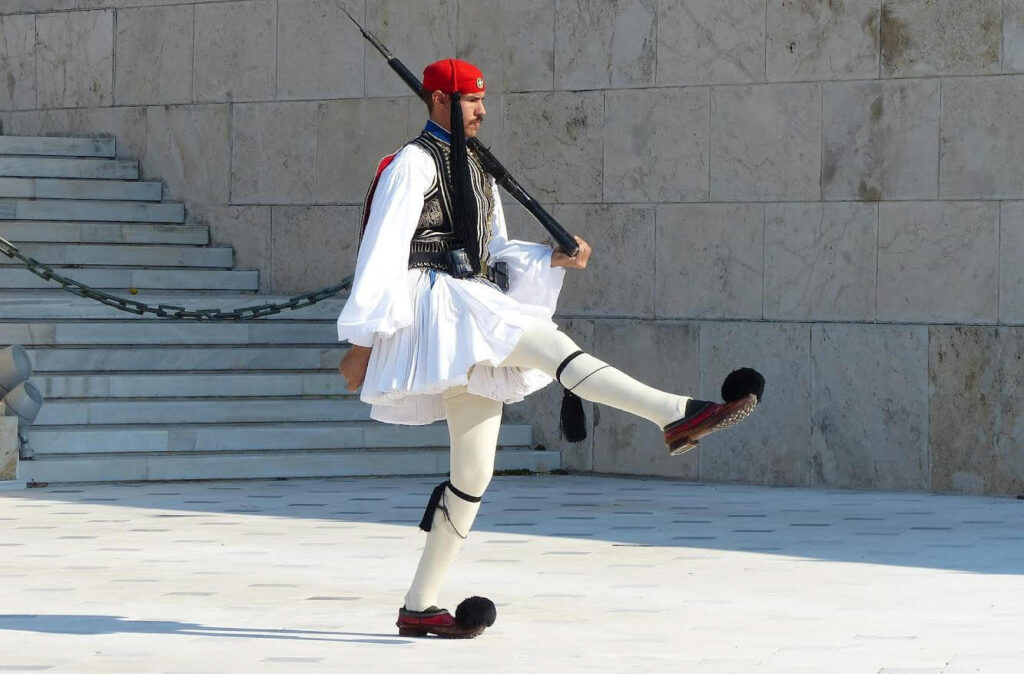
While on duty for one hour they are dressed in traditional kilt-like clothes (foustanella) and accompanied by the weapon. During this time they have to stand perfectly still until it is time to switch with another guard. Apart from this, the soldiers must also not make any face or eye move and must not show any expression. They don’t, however mind the tourists coming closer to take a picture. The Presidential Guard Change is something you don’t want to miss. Although they change every hour daily, the most spectacular ceremony with official customs takes place on Sunday morning at 11 am.
Useful Information:
- Entrance – free from outside
- Opening hours – 24/7
- Time – 30 min
Archaeological Site of Lykeion
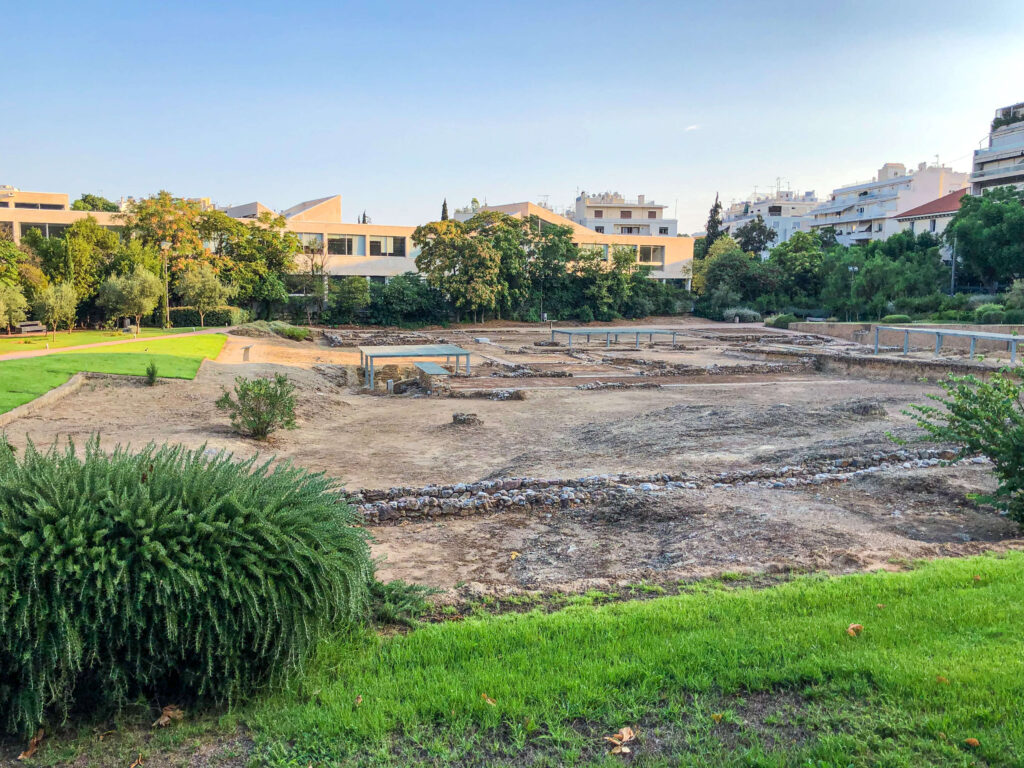
Archaeological Site of Lykeion, often called Lyceum is located within walking distance from Syntagma Square. Although there isn’t much left of the site, the remains of the legendary Gymnasium of Lykeion were discovered during rescue excavations in 1996. Back in the days it used to be a temple dedicated to Apollo Lycea where Aristotle’s school of philosophy was later founded in 334 BC and continued to function as such until it was destroyed by the Roman general Sulla 86 BC.
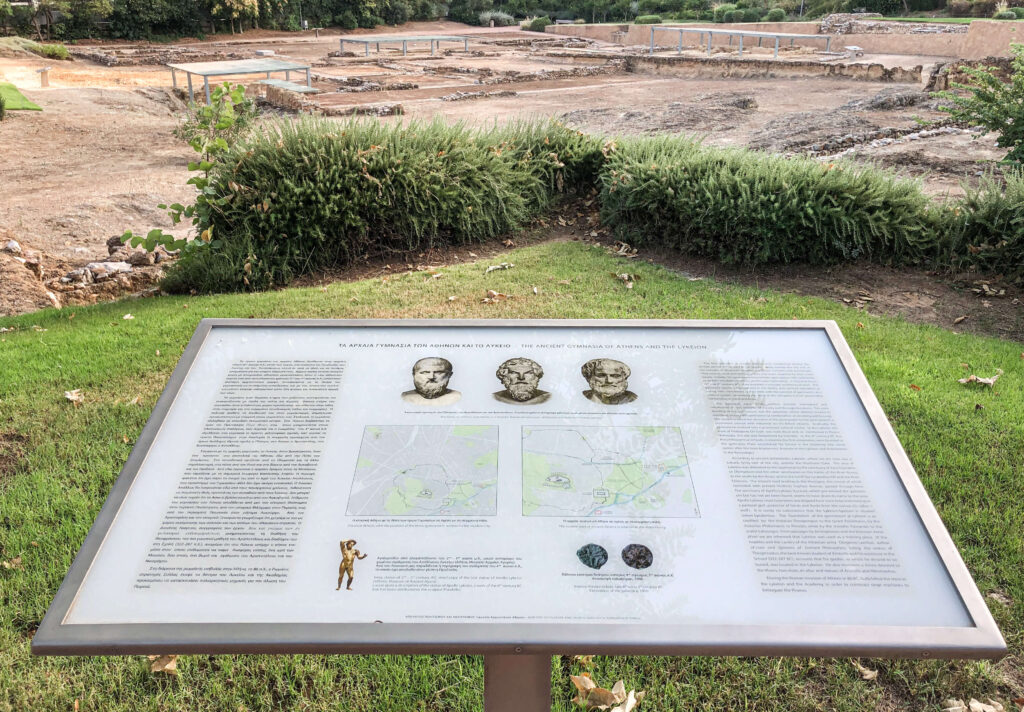
This archaeological site is important because it’s where Aristotle taught all his scientific and philosophical theories. Although he was the best student of Plato, he held different views on number of fundamental ideas. For that reason Aristotle started the school of his own where he developed personal ideas based on the method of inductive and deductive reasoning for observing the world.
Useful Information:
- Entrance – Acropolis Combined Ticket
- Opening hours – 8:00 to 20:00
- Time – 15 min
Monastiraki

Monastiraki, which means ‘little monastery’ is an Athenian district located under the Acropolis and right next to the Roman Agora. Because it’s the second oldest district of Athens, it’s also where tourists and locals tend to hang around. The Monastiraki Square which stands in the middle gets extremely busy during high season. Although it’s a central point for millions of tourists travelling between the ancient attractions, it’s also a crossing point for the locals commuting to work.
To be honest, Monastiraki is considered one of the most charming parts of the capital with plenty good restaurants serving traditional Greek food. That’s also where underneath the square cobblestones runs an ancient river and local merchants sell their products in the streets, including the vintage ones. When you stand in the middle of Monastiraki Square, you get to experience some of the best views of Acropolis, see street artists perform and locals greeting each other on every corner.
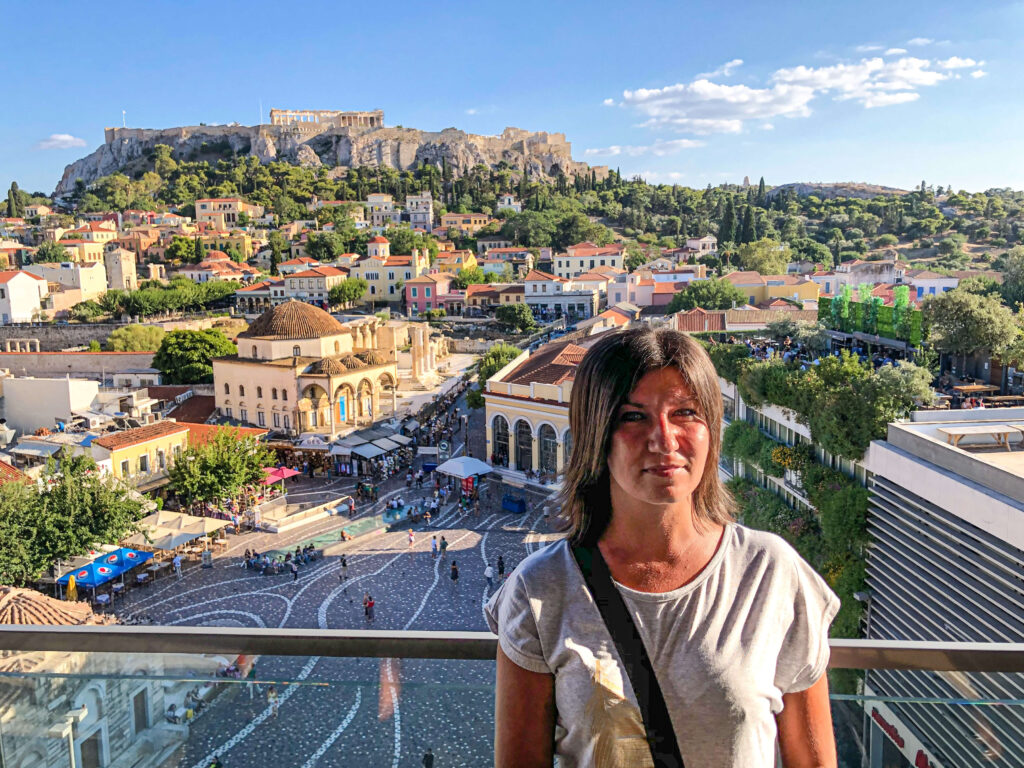
What to see around Monastiraki? There are a few main buildings worth checking out:
- Church of the Pantanassa known as the Little Monastery which gave name to the area.
- Tzistarakis Mosque built during the Turkish occupation in 1759 and named after the Ottoman governor of the city, Mustafa Aga Tzistarakis. When Greece regained its independence this mosque was taken over by the state and turned into the Museum of Greek Folk Art housing a ceramic collection.
- Hadrian’s Library standing next to the square.
- Monastiraki Flea Market, which is the most famous bazaar of Athens.
- A for Athens rooftop bar, the best place to see the Monastiraki Square and Acropolis from above!

Why visit Monastiraki? This charming square has one of the oldest tube stations and it’s a car free area. That comes in handy if you plan on shopping at the local flea market. When you walk around, you instantly notice how magical Monastiraki is! That’s where the history clashes with modern lifestyle bringing out the best of what the area has to offer. Because it’s the second oldest district of Athens, Monastiraki is very lively with colourful buildings and narrow streets perfect for strolling around.
Useful Information:
- Entrance – free
- Opening hours – 24/7
- Time – 20 min
- A for Athens – 1h (ideally before sunset)
The Monastiraki Flea Market

The Monastiraki Flea Market is the most famous shopping market in Athens, located on the Avissinias Square just a short walk west from the Monastiraki Square. Although it’s open every day, Sunday is when it gets extremely busy. That’s also where you find plenty of street stalls offering pretty much everything from fake to original.

If you’re after a nice souvenir from Greece, you should visit this inarguably best place for second-hand shopping in Athens. That’s where the tourists come looking to buy vintage jewellery, gorgeous antiques, handcraft artefacts, leather goods, electronics, clothing and more bizarre items. Unfortunately, we visited on the weekday and most of the shops were closed. Instead, we did manage to see how beautiful they were decorated by the local street artists.
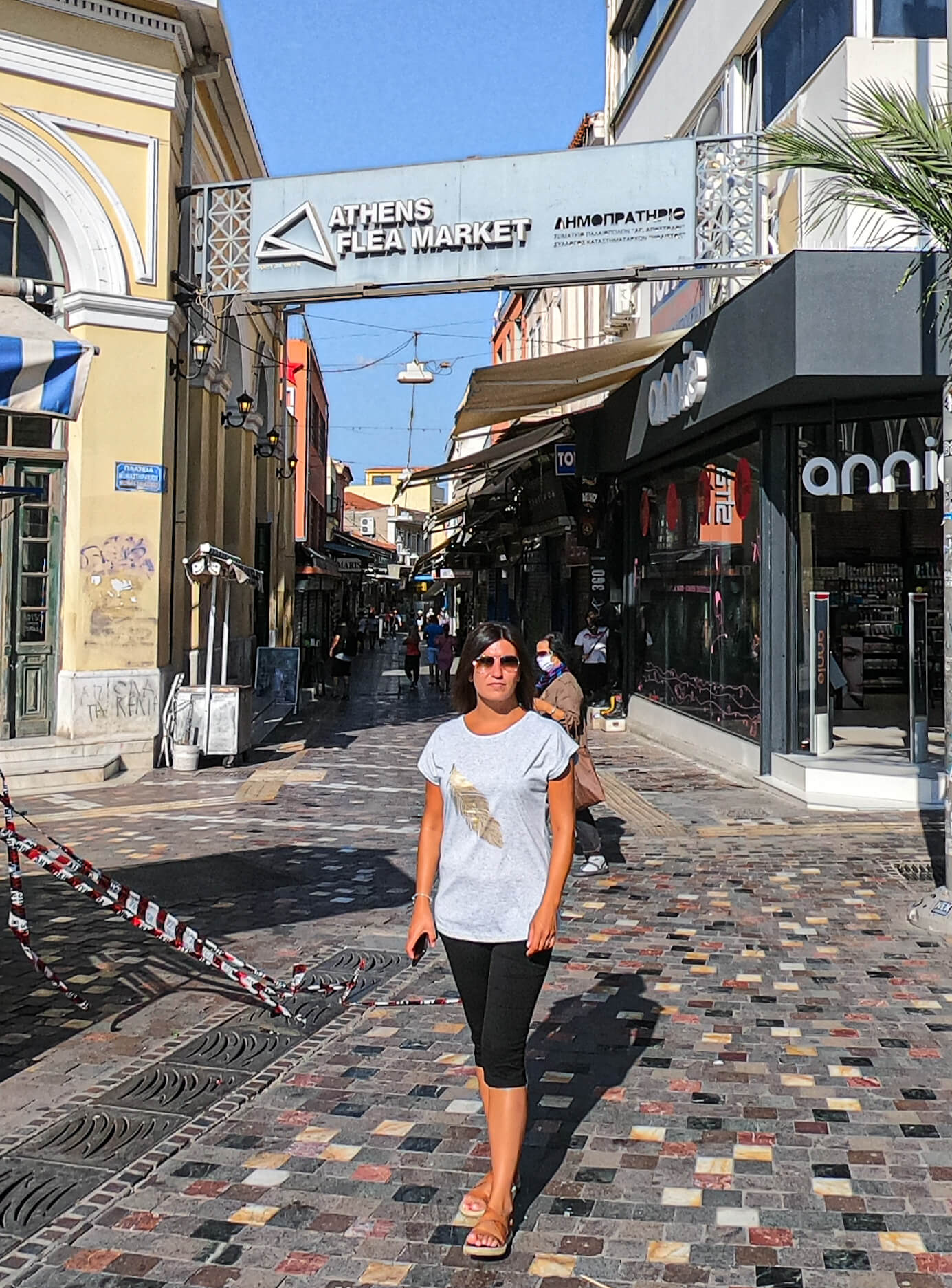


What to buy in Athens?
- Anything From Olive Trees – the Greek symbol of peace and prosperity. Used in cooking, medicine, beauty and olive wood manufacturing. The most sought after products are the Greek extra virgin oil for your essential cooking, organic cosmetics such as creams and shampoos and of course the handmade kitchenware from the olive trees.

- Ouzo – the national drink of Greece made as a dry anise-flavoured aperitif.
- Worry Beads or Kompoloi – the traditional Greek jewellery used to reduce the stress level and help you relax. The most popular are the amber and coral beads joint together on a silky string. Back in the days they were used by old men as they played with them. You can still find the Greeks moving the beads between their fingers anywhere around Greece.
- Mati Charm Talisman – The Blue Eye is a piece of blue jewellery that resembles an eye. It’s believed to protect you from the evil powers. Almost every Greek has one!
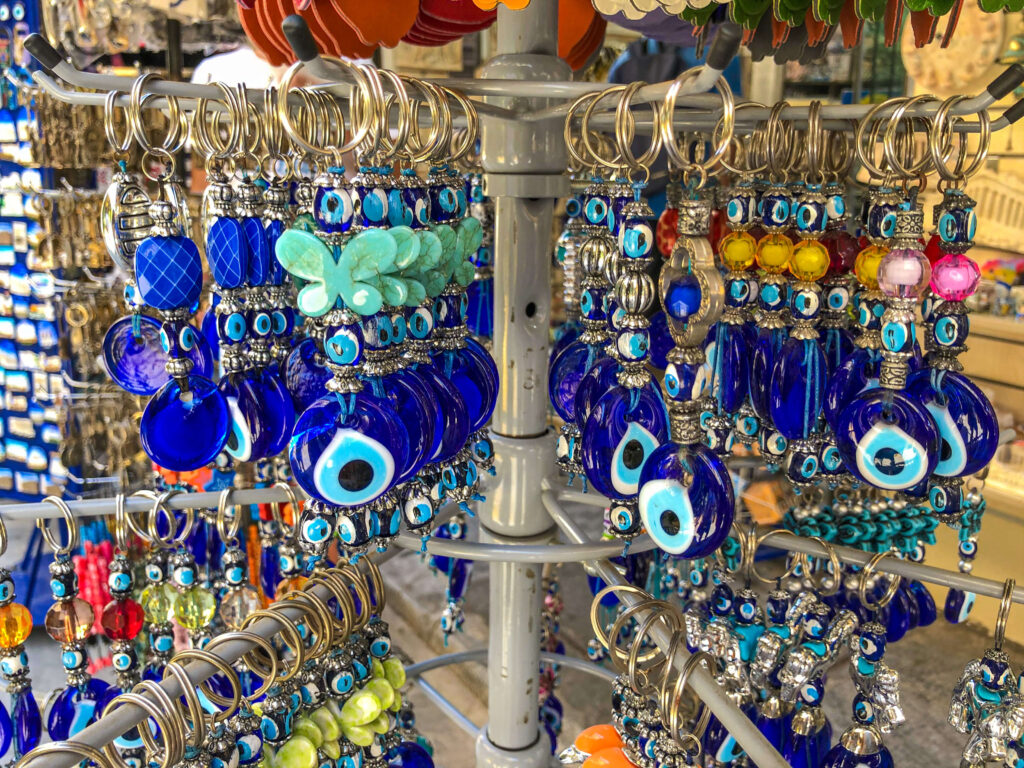
- Backgammon or Tavli – the traditional Greek board games often played by the young and old people in local coffee shops. There’s a wooden frame, 30 buttons and two dices for two players. It’s very easy to learn the Portes, Plakoto or Fevga game.
- Karagiozis Figurine – the symbol of poor Greek people during the Ottoman occupation trying to cultivate the folk tradition. It’s such a lovely puppet!
- Leather Sandals – handmade locally and easy to find anywhere in Athens. It’s classical Greek style footwear that is so comfy to walk.

- Handmade Ceramics – produced locally in Athens or on the Greek islands. The capital has long been a centre for pottery and ceramics which originate from the Athenian district of Kerameikos.
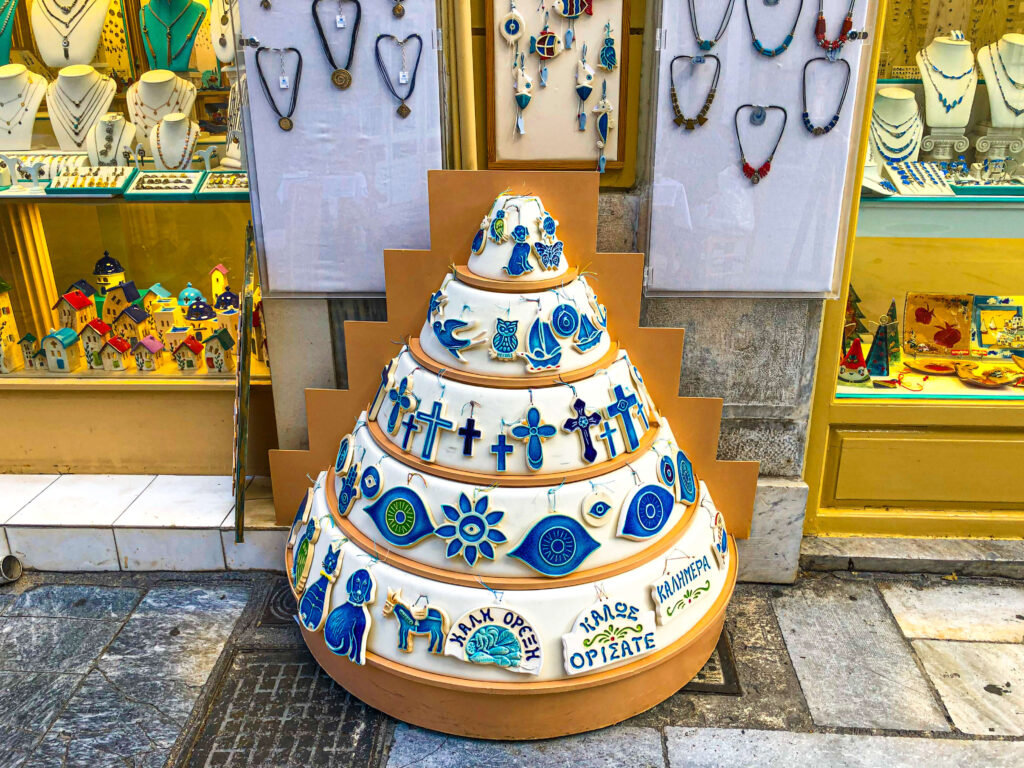
- Bouzouki – traditional music instrument used to play the live folk music in local taverns.
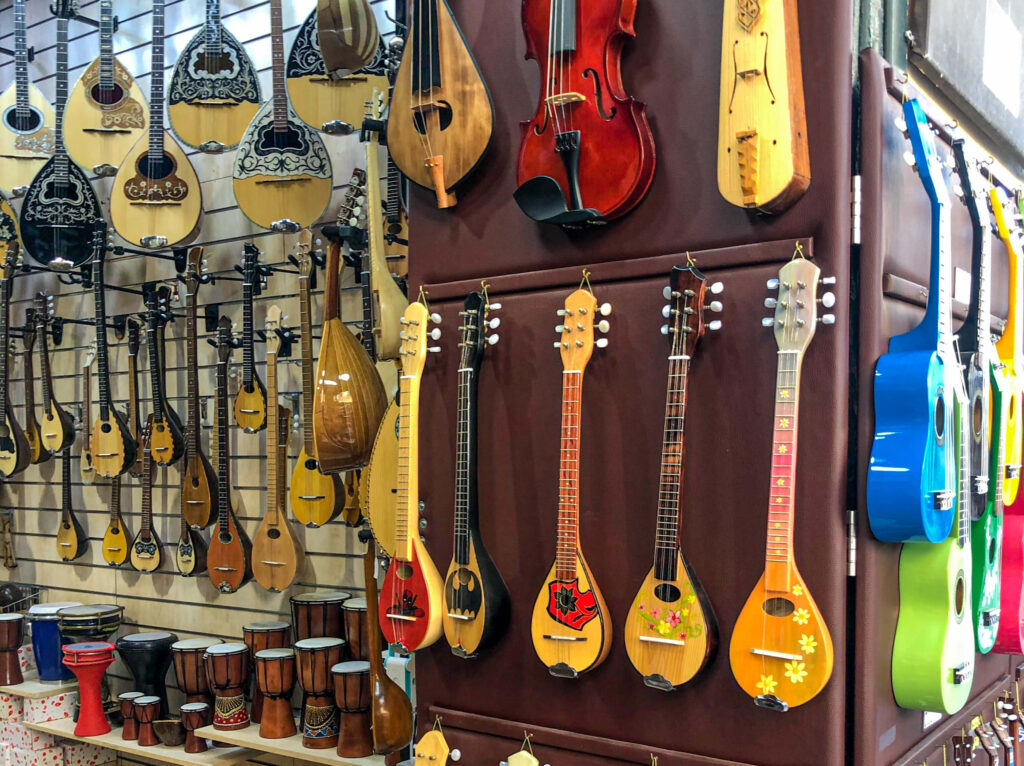
Useful Information:
- Entrance – free
- Opening hours – Sunday, reduced on weekdays
- Time – 40 min
Plaka

Plaka is one of the top attractions to see in Athens and no wonder why. It’s located between Syntagma and Monastiraki, right under the hills of Acropolis. Because it’s so close to this ancient mountain, it’s often called the ‘Neighbourhood of the Gods’. Considering Plaka is oldest part of Athens and the second oldest part of Greece, you experience the architecture of streets and buildings as they’ve been since 3,000 years ago.
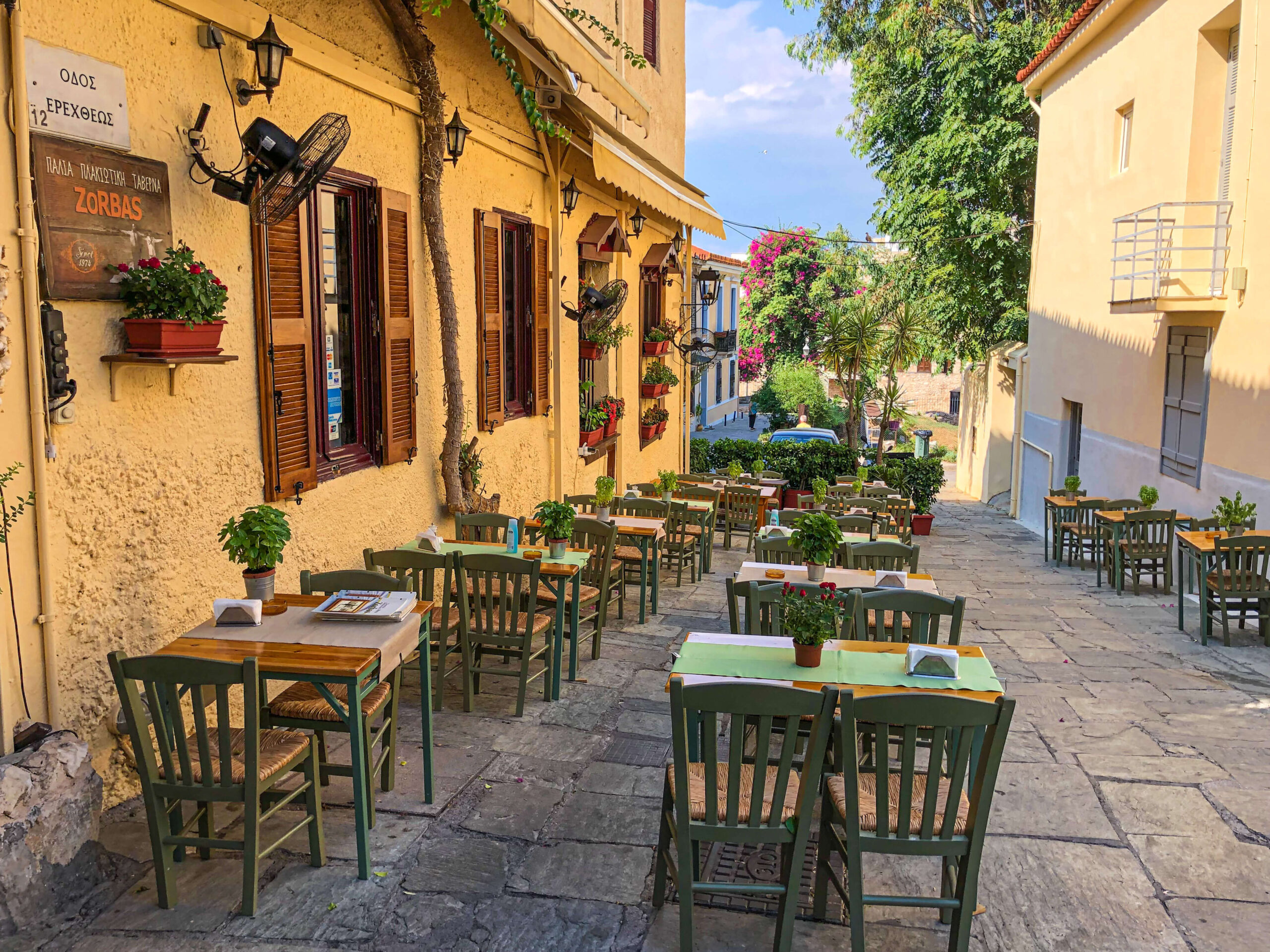

There’s no doubt that, both Plaka and Monastiraki are the most popular places to stay in Athens. That’s where not only you find the oldest house in Athens, the Benizelos Mansion (now converted into a museum) but also the oldest road, the Adrianou Street being used to this day. It’s like not much has changed here since the Greek Gods reigned this part of the world.
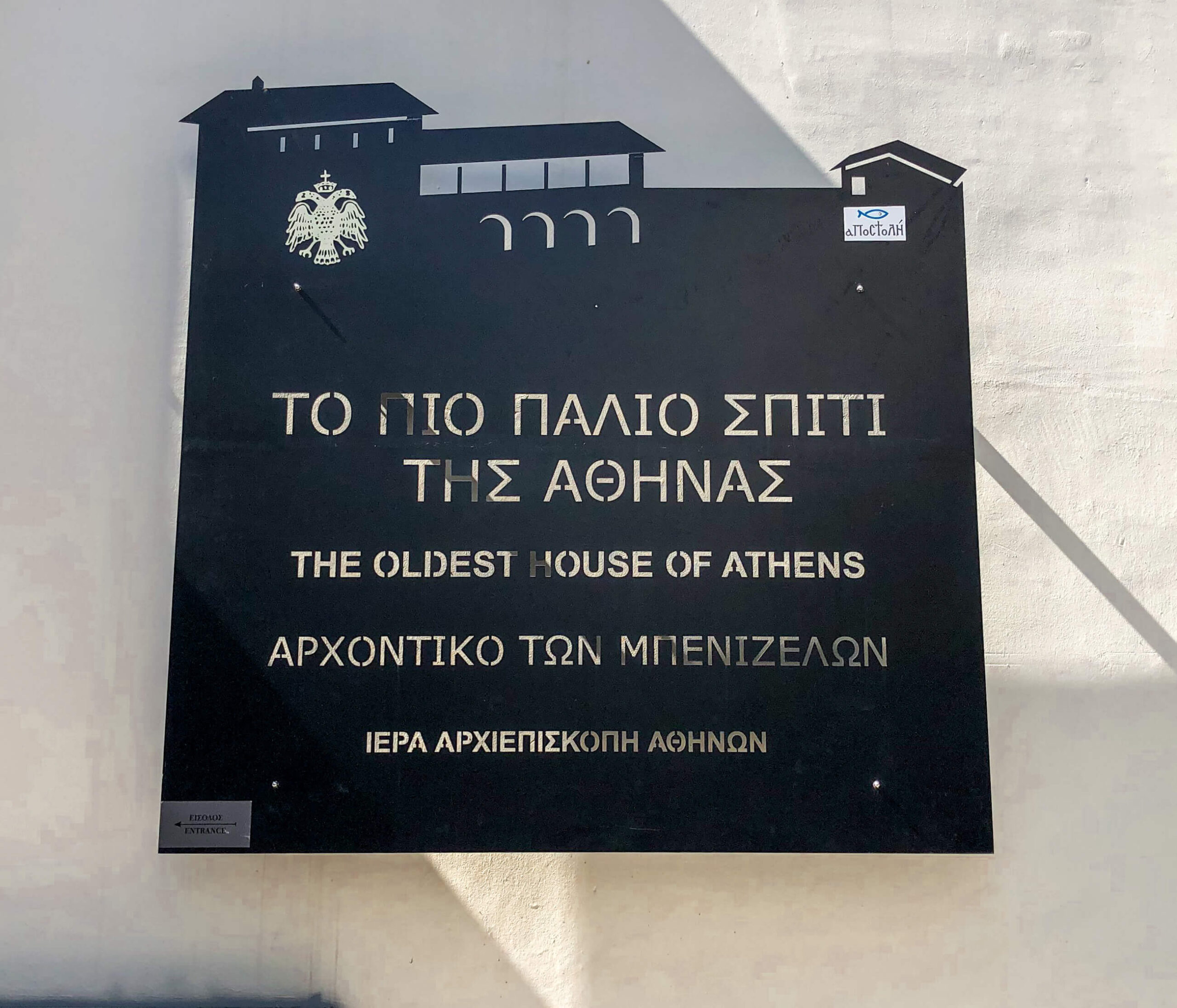
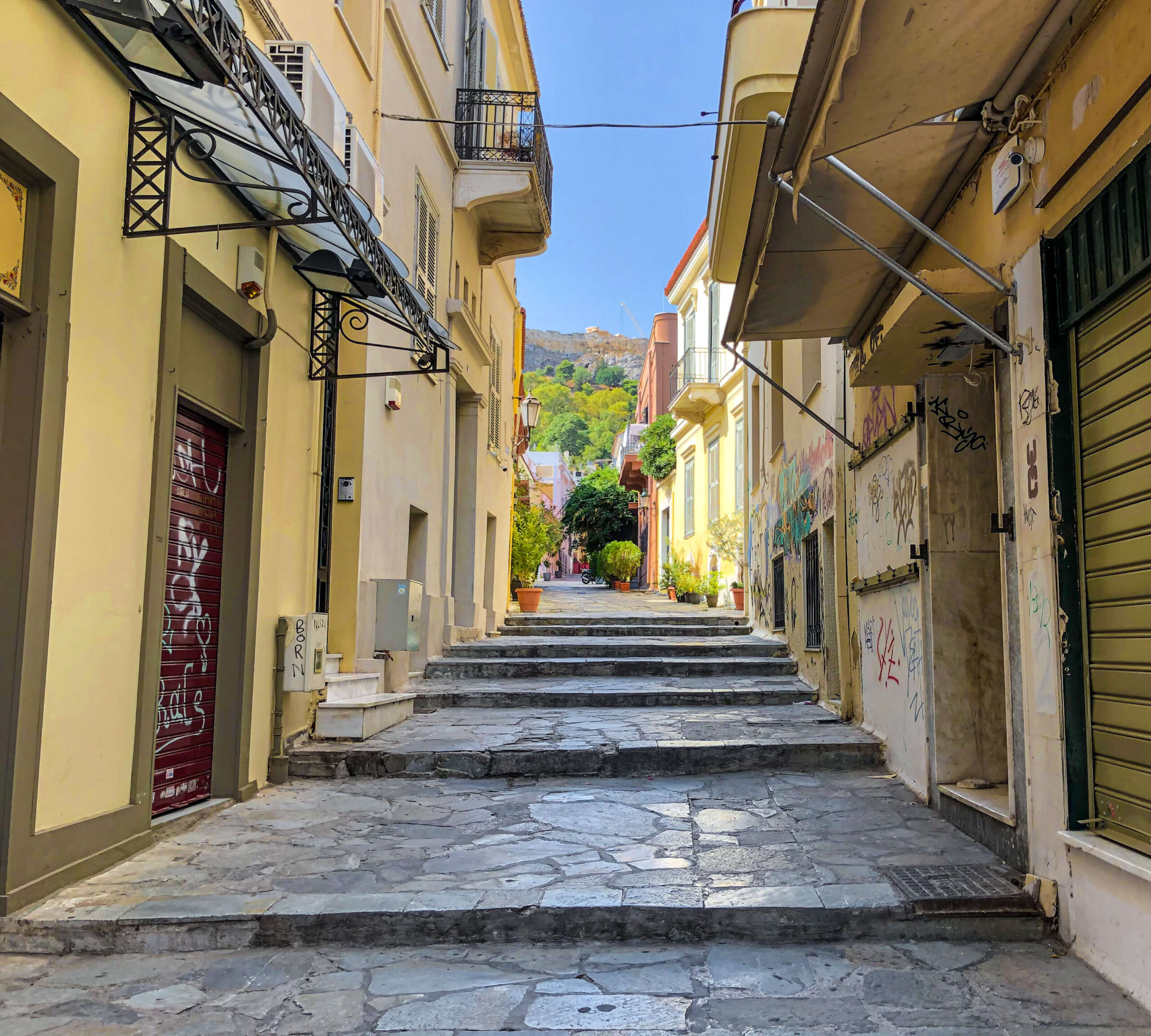
Everyone agrees that the nicest parts of Plaka is a narrow street called Mnisikleous, or better known among the locals as the ‘Plaka Stairs’. Located on the slopes of Acropolis, they are set on the hillside and completely lined by the cafes and tavernas on both sides. Because the seating is arranged creatively and quite compactly right up the steps, it makes a popular spot for locals as well as tourists to have some food or a drink.
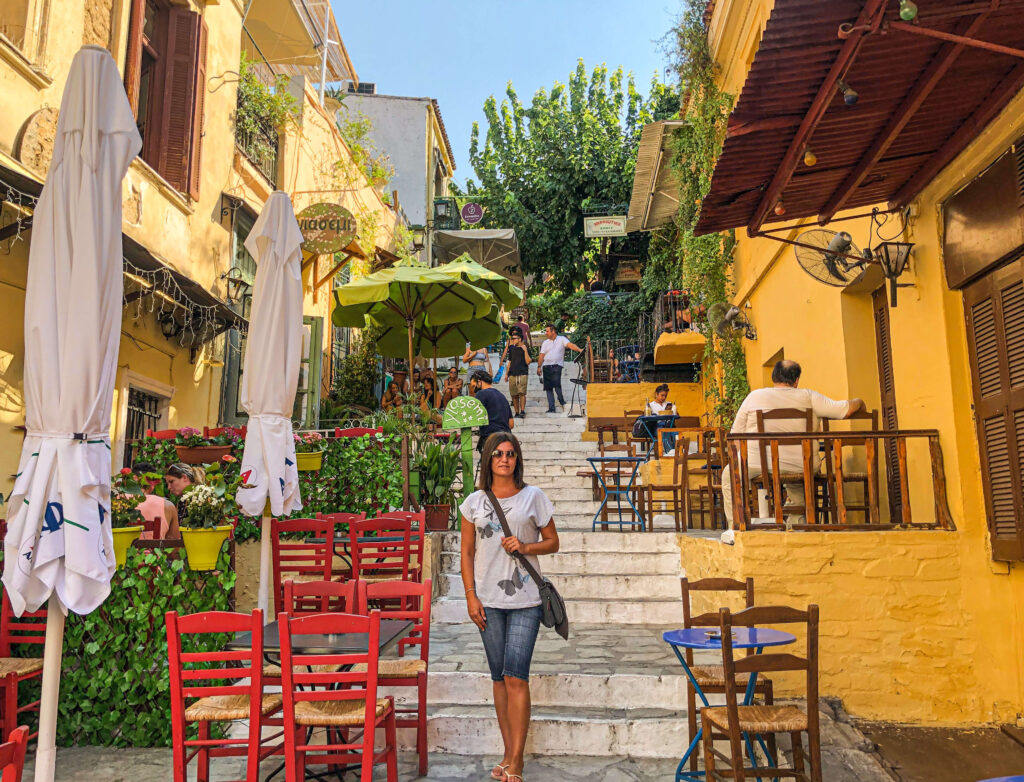
When you visit the Plaka Stair, you might as well stay at the Anafiotika Café for a very unique dining experience. As you instantly notice the steps are busy with people passing through, eating or just lounging and chatting over a beverage. Regardless of the year season, everyone comes here seemingly from early lunch until late evening hours.
To be honest, there are so many nice places to dine in Plaka. With these that have been an integral part of the Greek capital’s culinary scene for almost half a century, along with newcomers that have breathed new life into the historic neighbourhood, the village-like Plaka district is a gastronomic haven. That’s where you find taverns to satisfy your appetite and provide the perfect ambience for an dining experience in the shadow of the Acropolis.
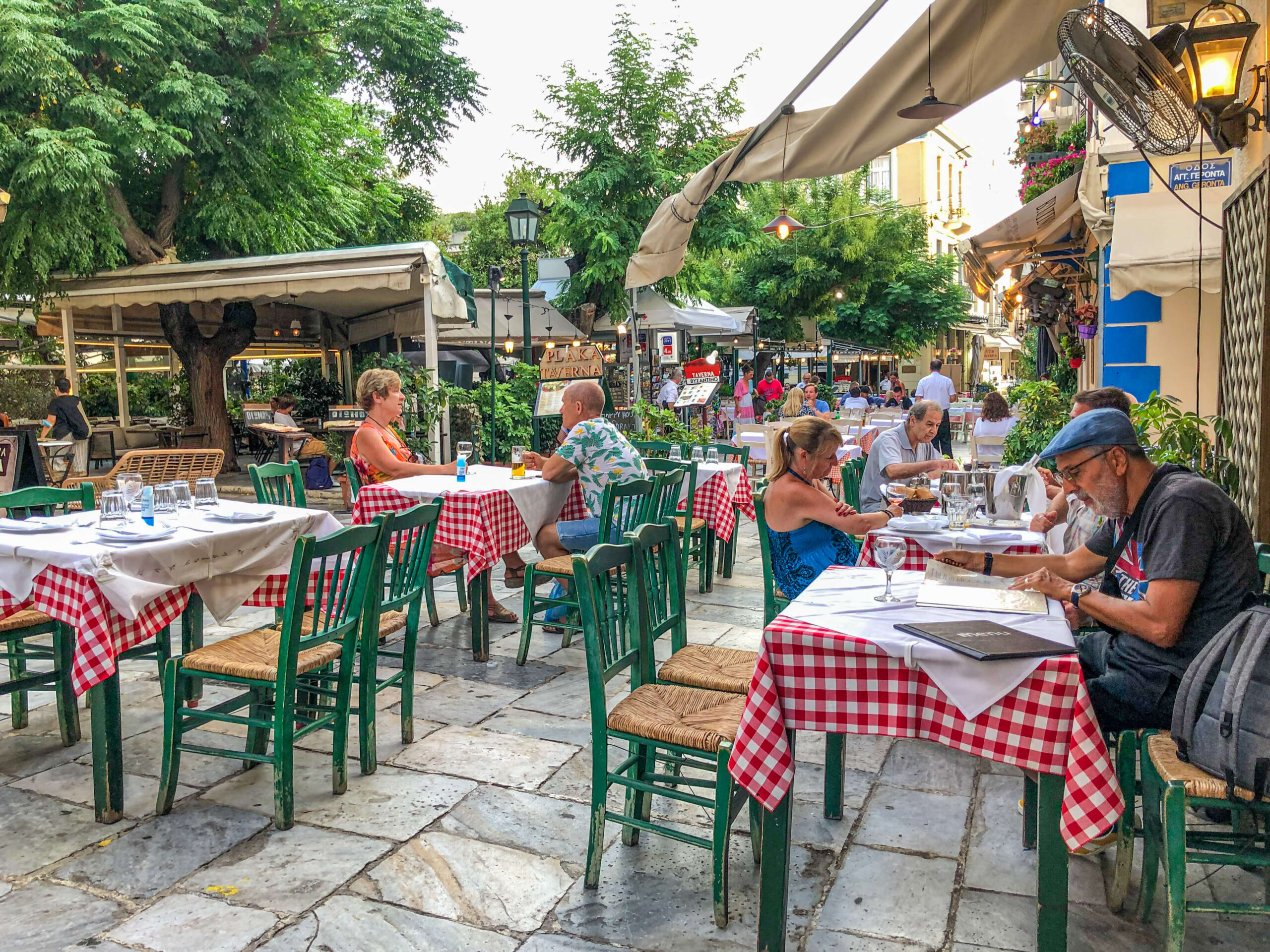


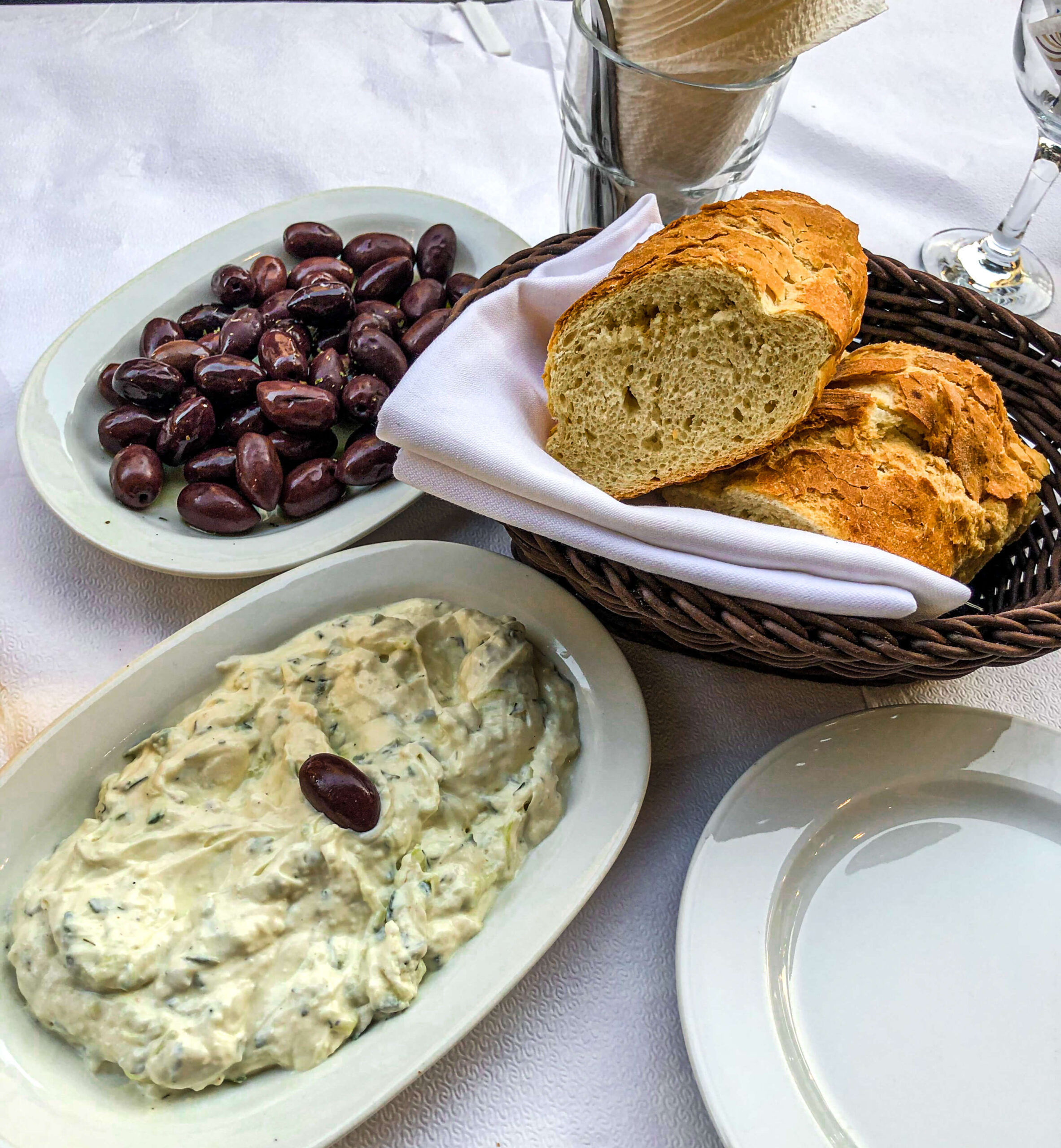
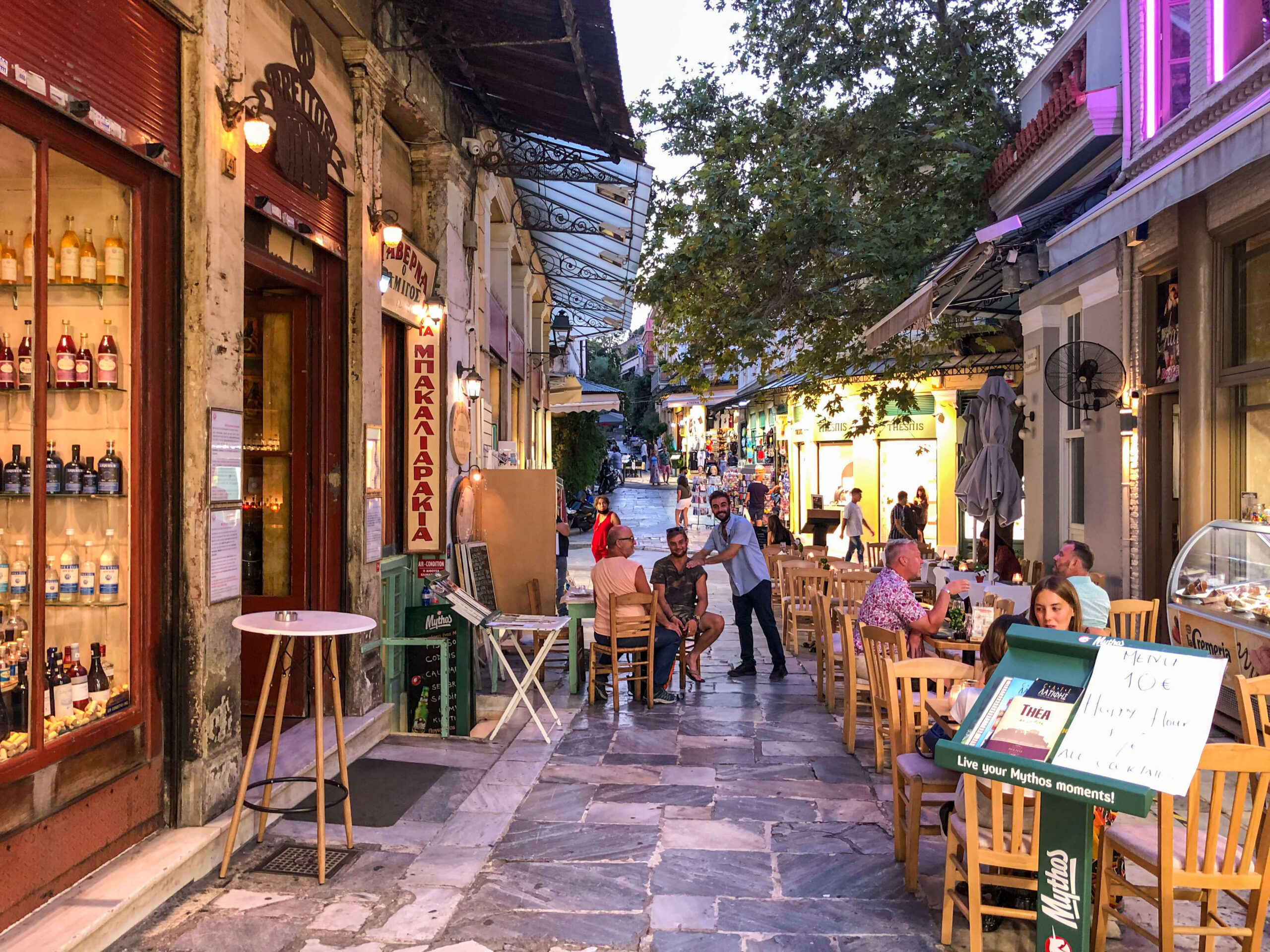
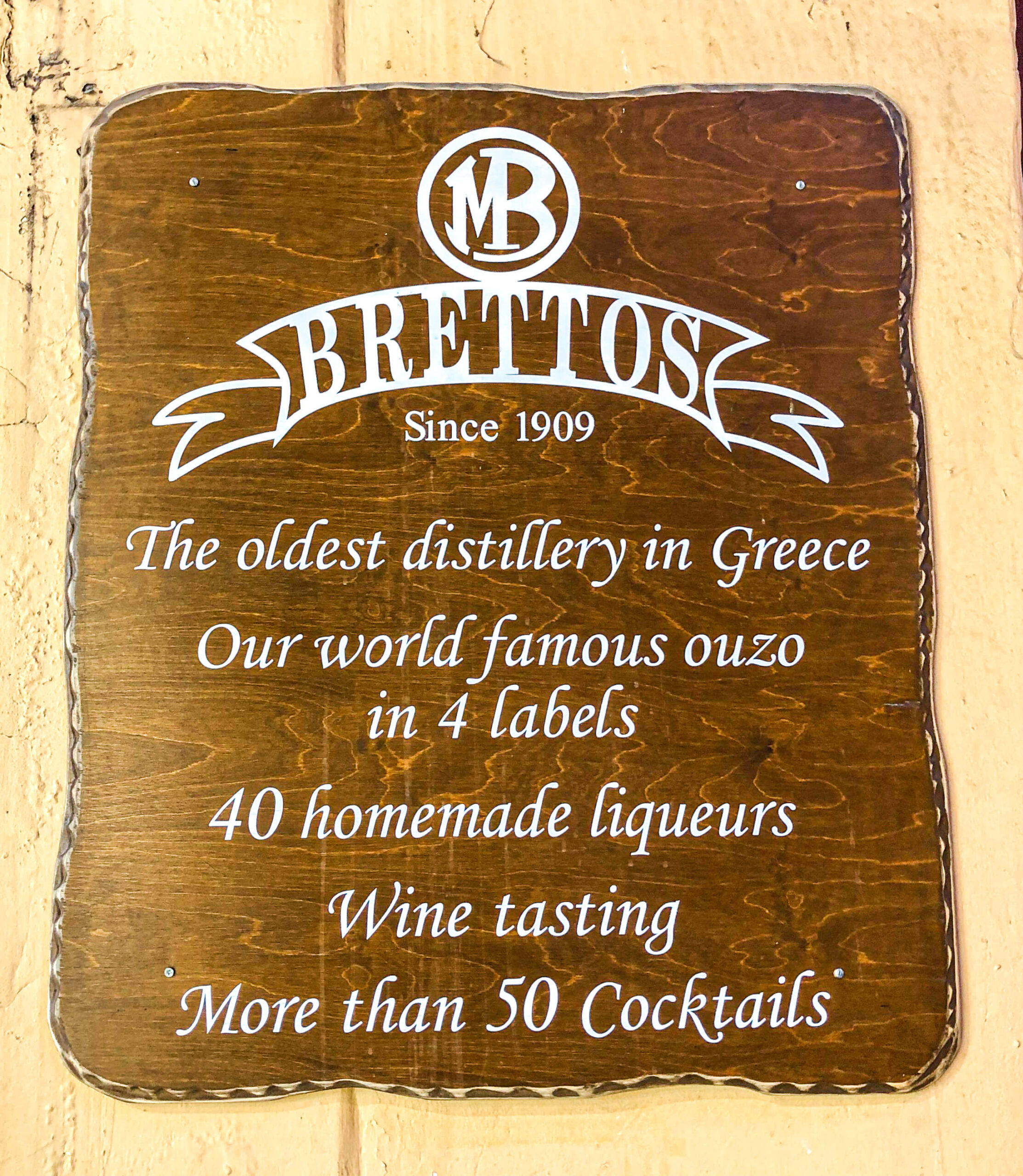

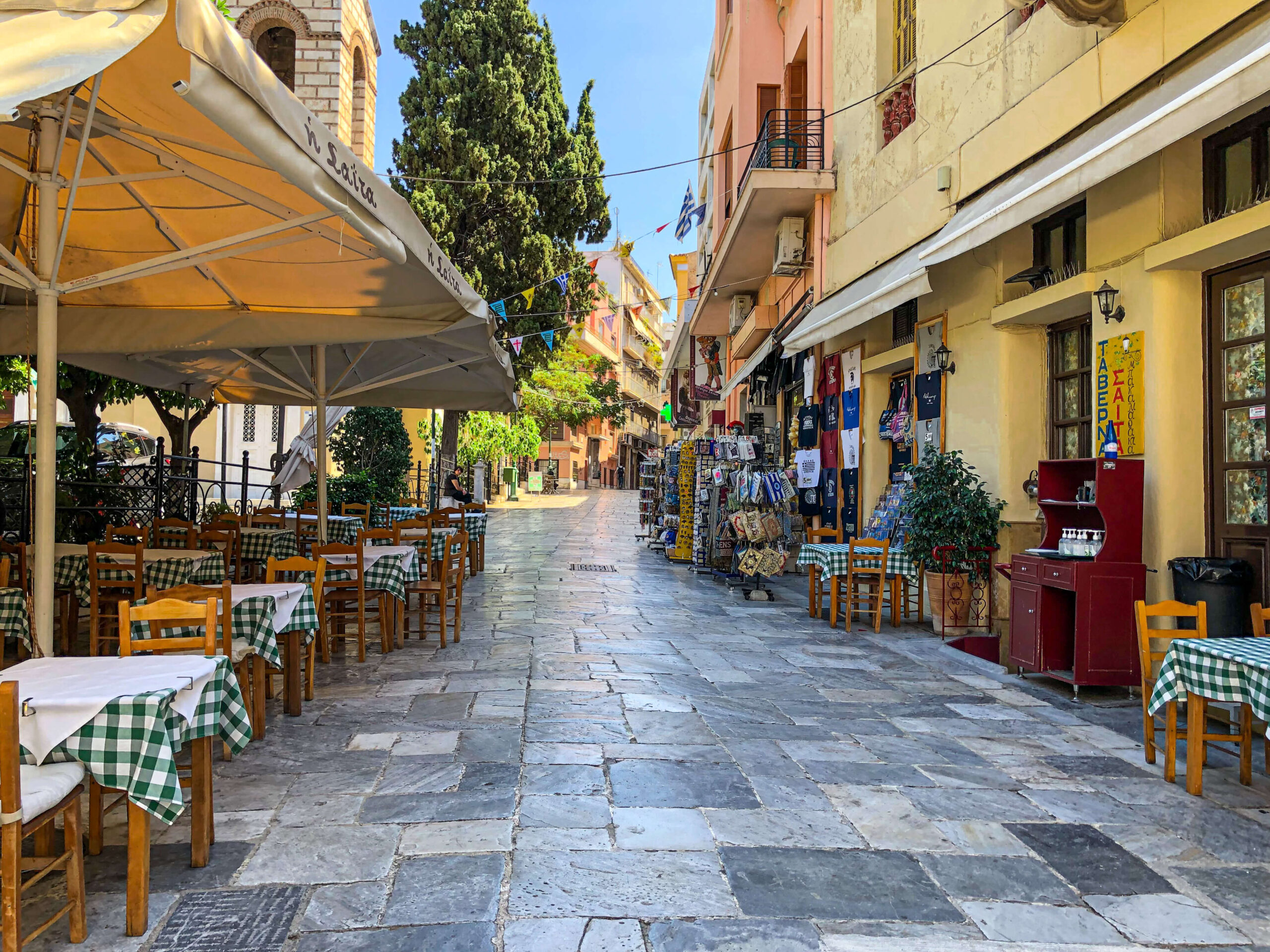
It’s fair to say that Plaka is full of neoclassical buildings which are quite similar to the ones found in Monastiraki. While Monastiraki always seems extremely busy, Plaka feels more authentic with plenty of locals hanging around. That’s where you find the narrow streets with lots of colourful shops selling pretty much everything. When you walk around you notice them hiding inside the ancient alleys.
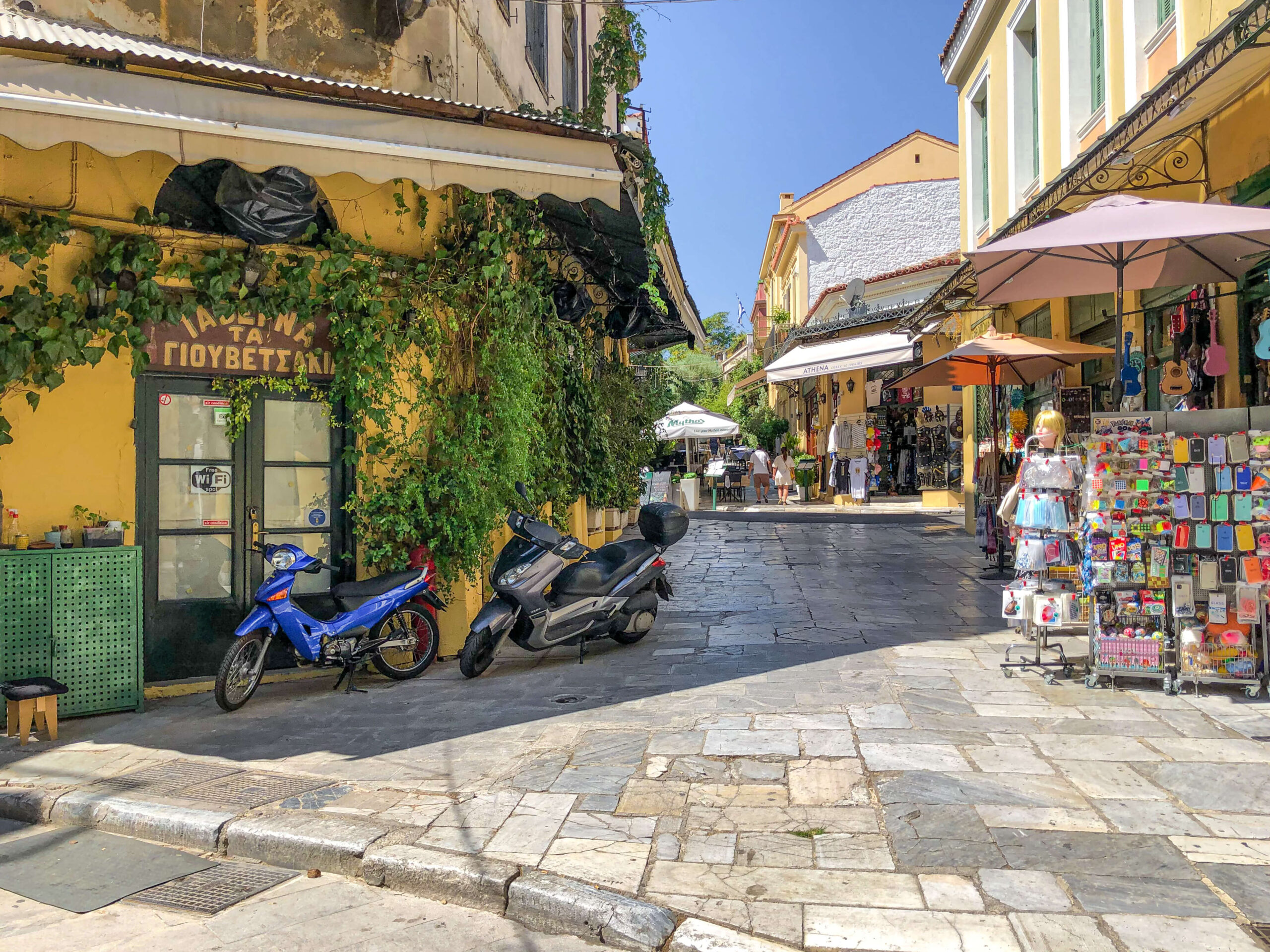
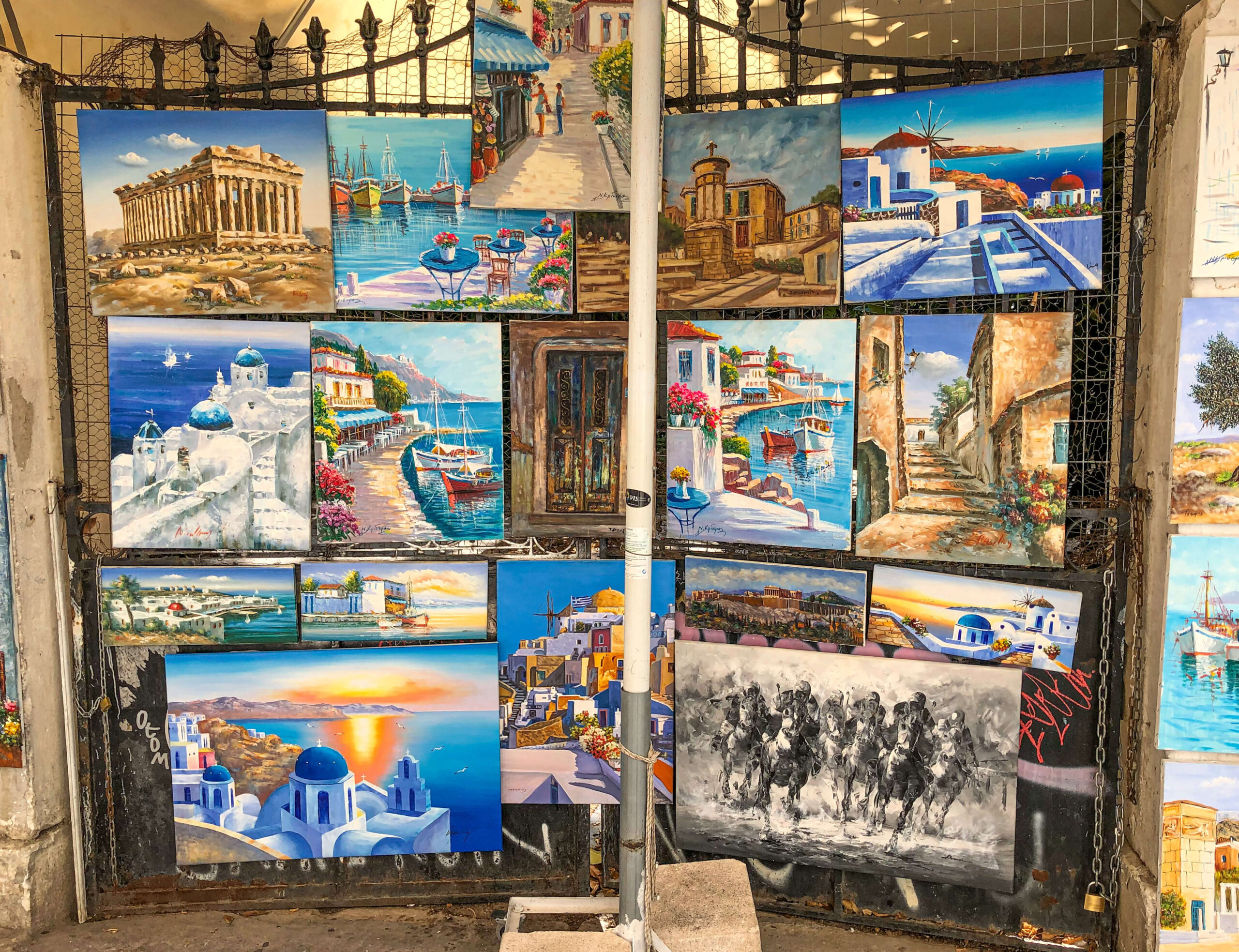

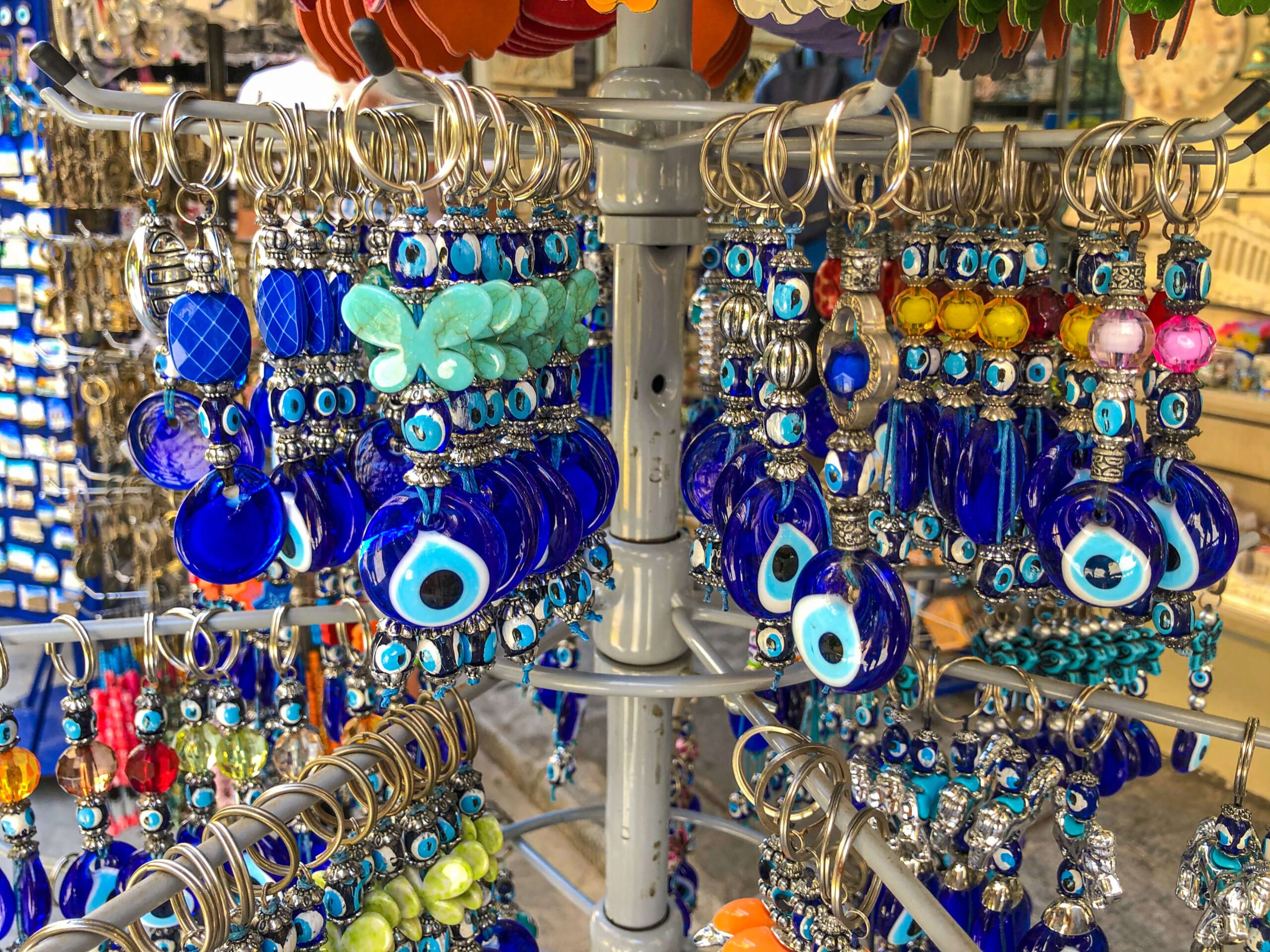
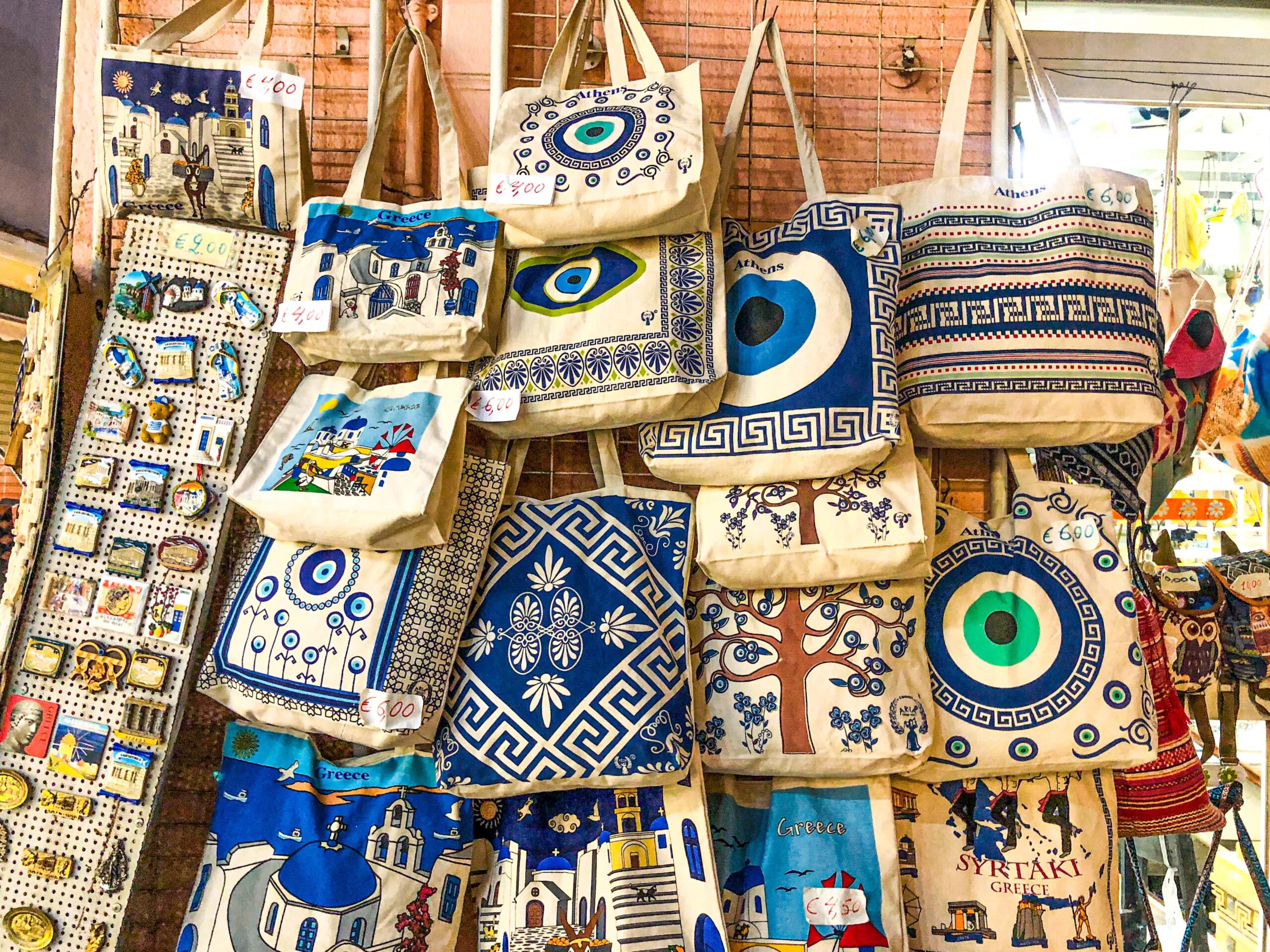

Besides those old streets and buildings, travellers can explore lovely little churches at almost every turn. Interestingly, some of the ancient Byzantine churches are below street level because most of them date back to the eleventh century. Plaka is famous for many things, which also include the outdoor cinema called Cine Paris. Why is different from a typical outdoor cinema? Well, while watching a movie, you are sat on the roof overlooking the Acropolis and nothing can beat such a view!
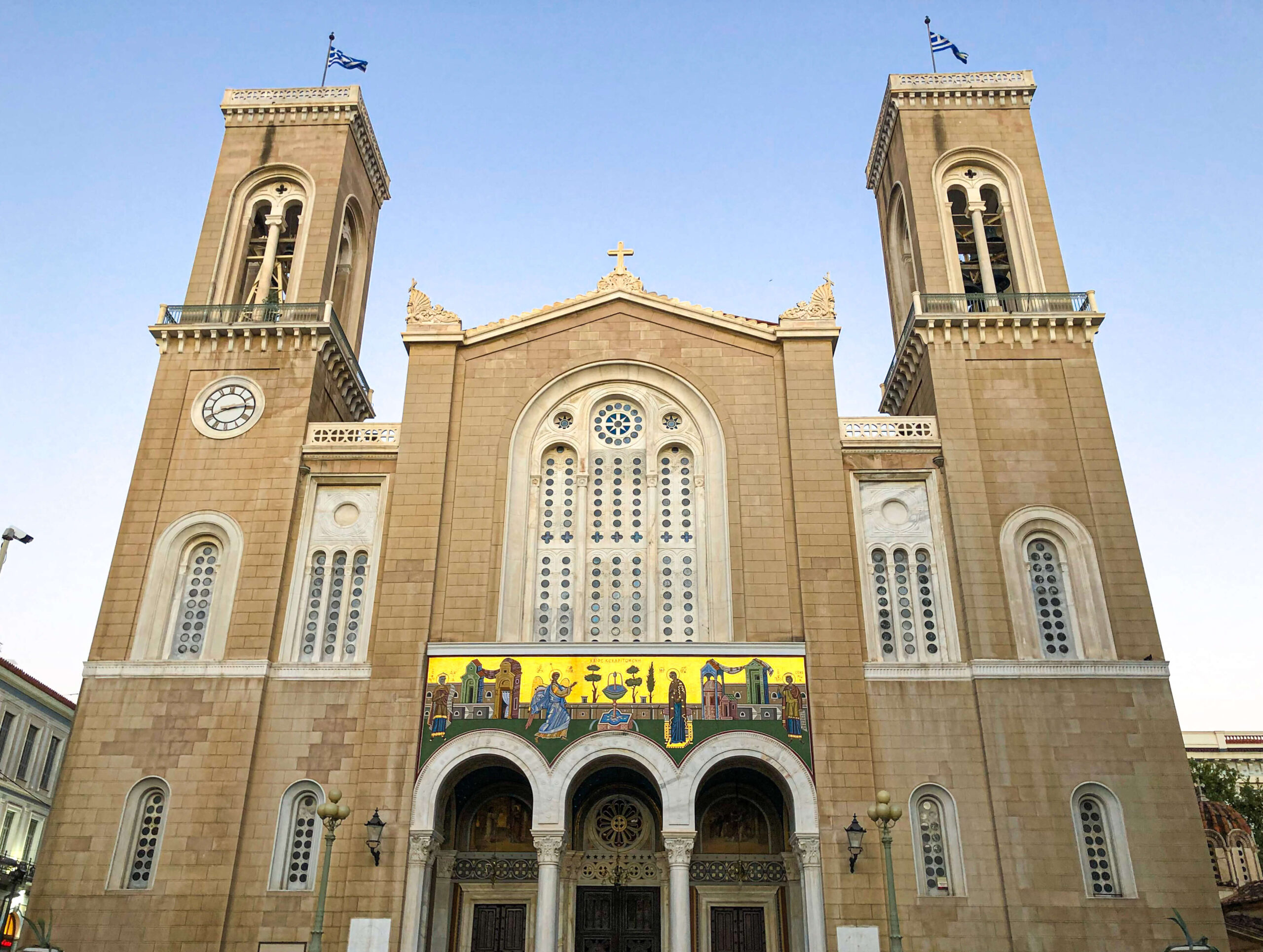

Why visit Plaka? It’s easy to spend an entire day strolling around Plaka as many of the cobbled stone streets are zoned for pedestrians only. And, it doesn’t take a great deal of imagination to think of exactly how it looked during ancient times! For more relaxing stroll, just get off the main street and make some time to walk around the little labyrinth-like streets leading you up and down the hill. It’s full of narrow winding streets, neoclassical buildings, quaint cafes and pastel-coloured houses.
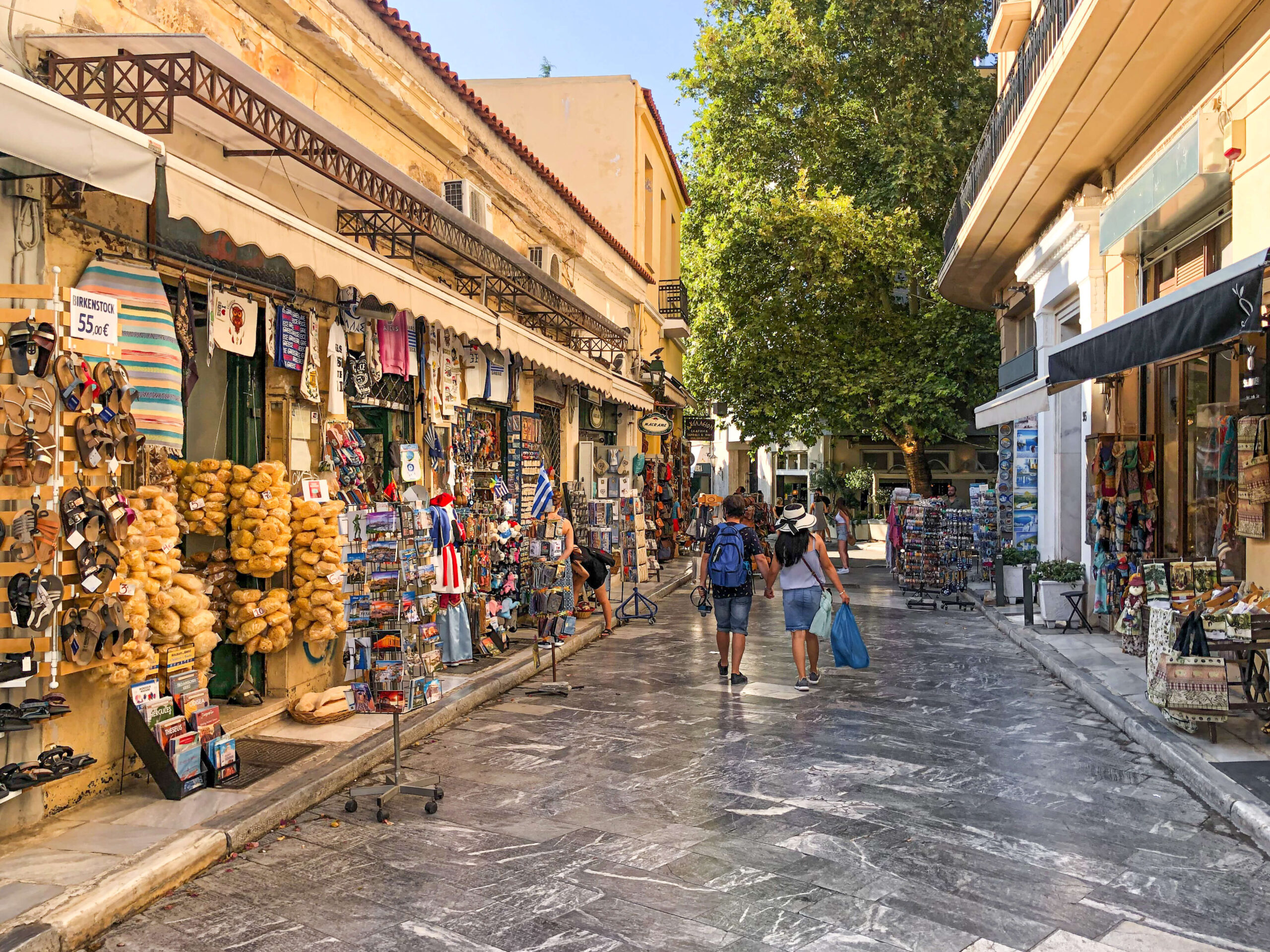
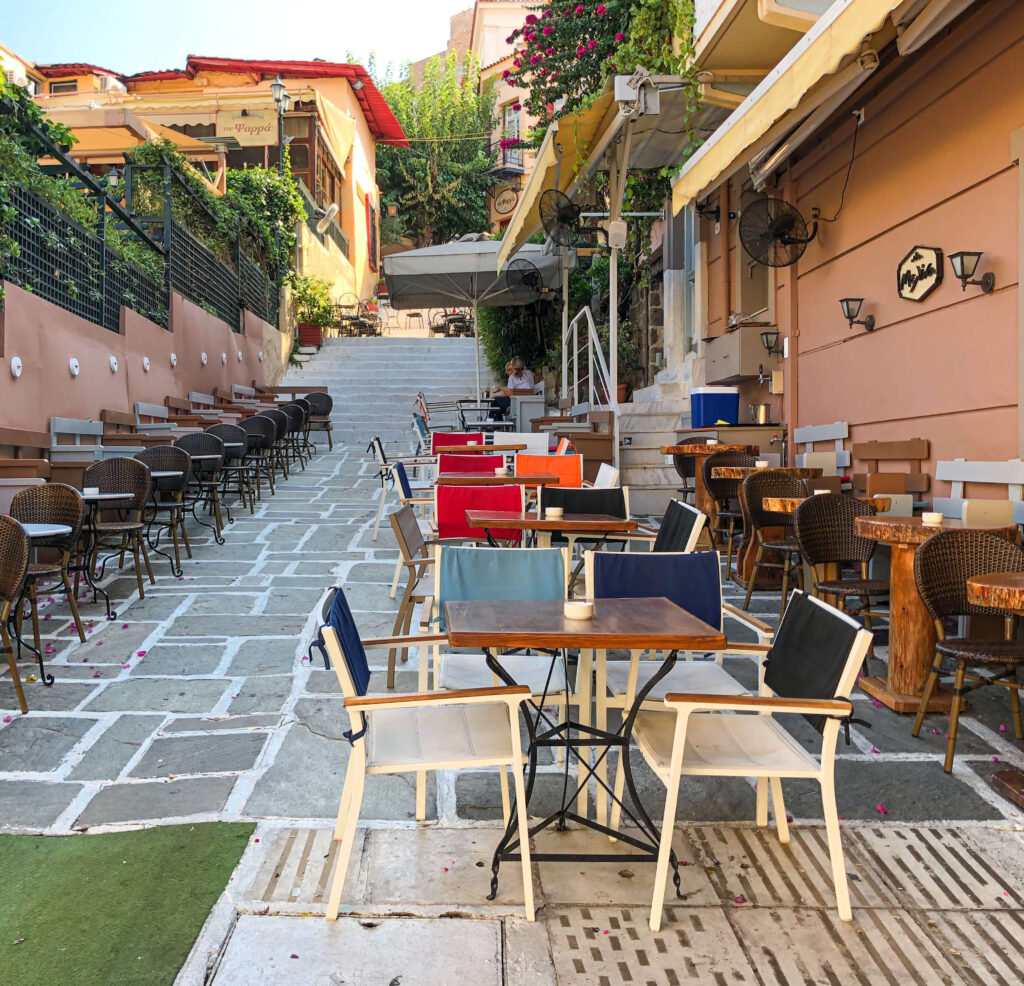
What else to see around Plaka?
- The Museum of Greek Folk Musical Instruments
- Frissiras Museum
- Jewish Museum
- Athens University Museum
- Children’s Museum
Useful Information:
- Entrance – free
- Opening hours – 24/7
- Time – 2h (including meal)
Anafiotika

Although Anafiotika is such a small part of Plaka, it’s considered the most picturesque neighbourhood to see in Athens. Because it’s located above Plaka and just below the Acropolis, it’s often overlooked by the visitors. This tourist attraction is nestled on the northern side of the Acropolis and there’s no street signs or any indications that this charming village exists.
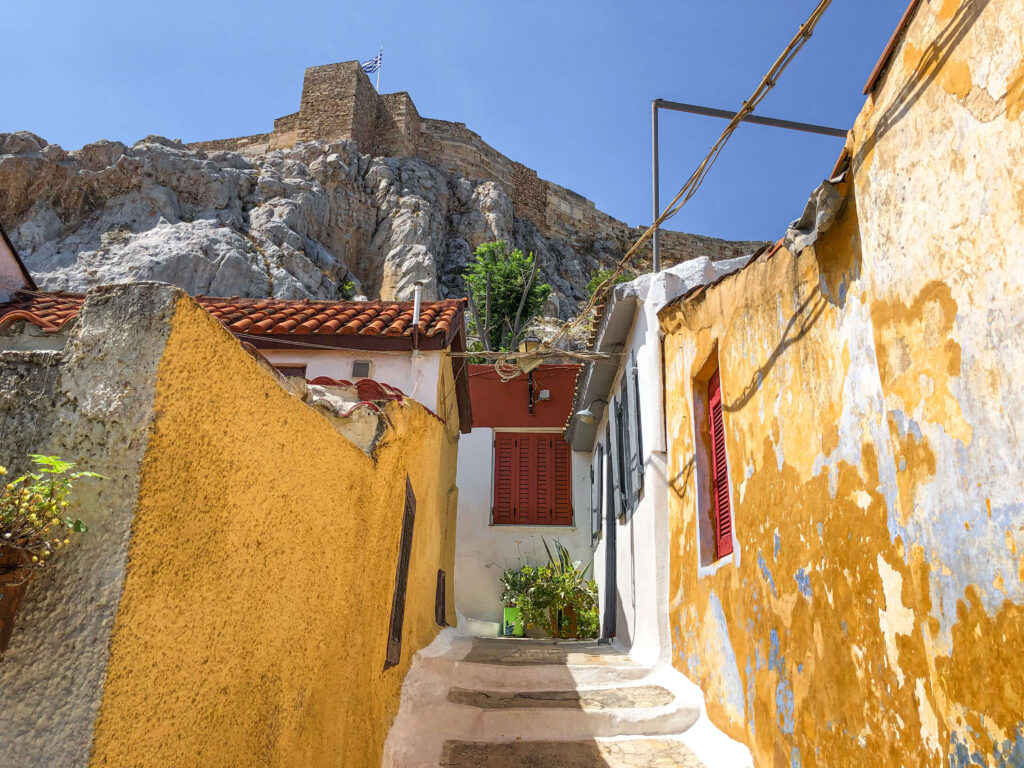
As it’s quite tricky to find, the best way to is to head for Prytaneiou Street where The Holy Church of St. Nicholas Ravagas is located. From there you should climb up the stairs towards Stratonos Street to reach the Church of Agios Georgio of the Rock (the Holy Church of Saint George of the Rock) which is basically built on the southern border of Anafiotika. When going up the hill, it’s worth stopping along the way and admire the most beautiful views of Athens with the majestic Lykavittos Hill at the background.
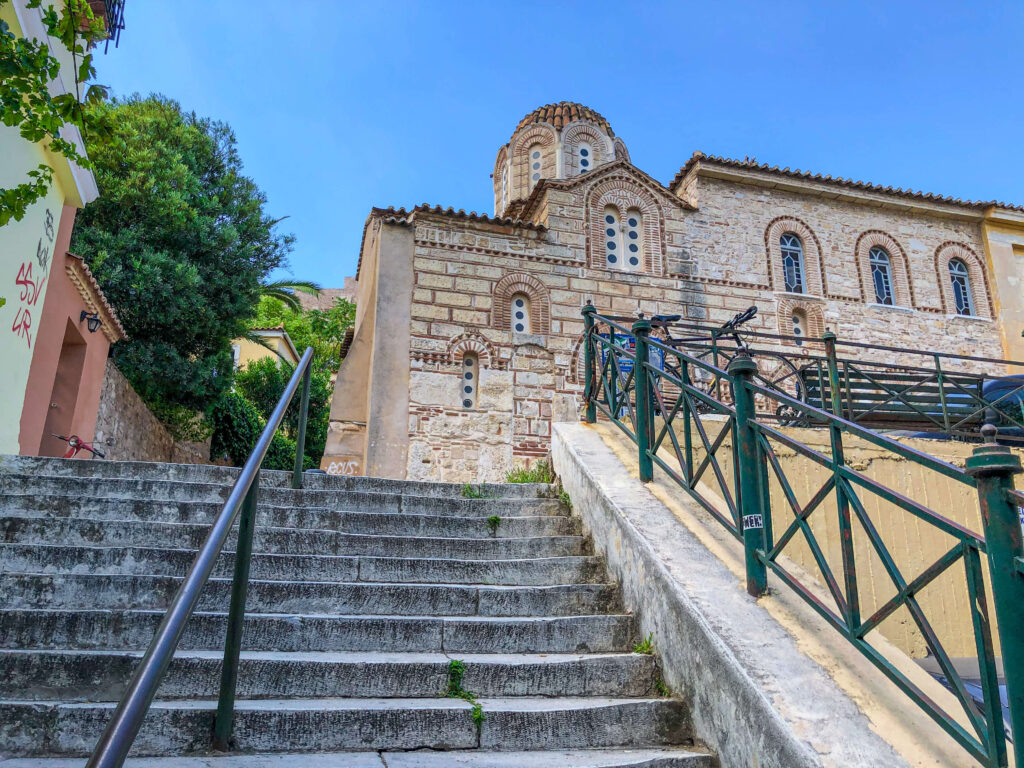


Anafiotika is somewhere tourists don’t come to shop or dine simply because you won’t find such places around. What they find are people greeting everyone with ‘Kalimera’ as they water their garden flowers or feed cats roaming the streets. This part of Athens is strictly a residential area with no fancy shops or glamour restaurants.
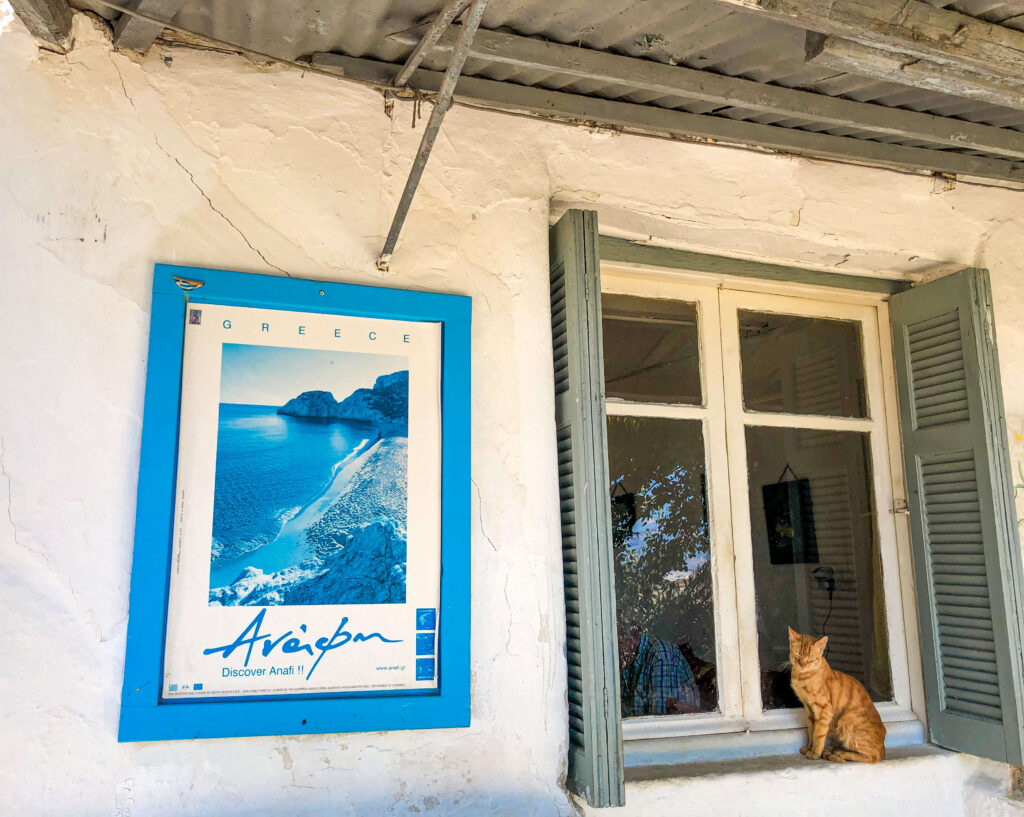

Why Anafiotika was built? In 1841 King Otto I invited skilled workers and tradesmen from around the country to move to Athens to help him transform the capital into a modern metropolis. Many of those who moved were carpenters and masons from the Cycladic Island of Anafi. When they settled down on the rocky slopes of the Acropolis, they built the exact replica of the their home island and called it Anafiotika, meaning the ‘Little Anafi’, hence the name.
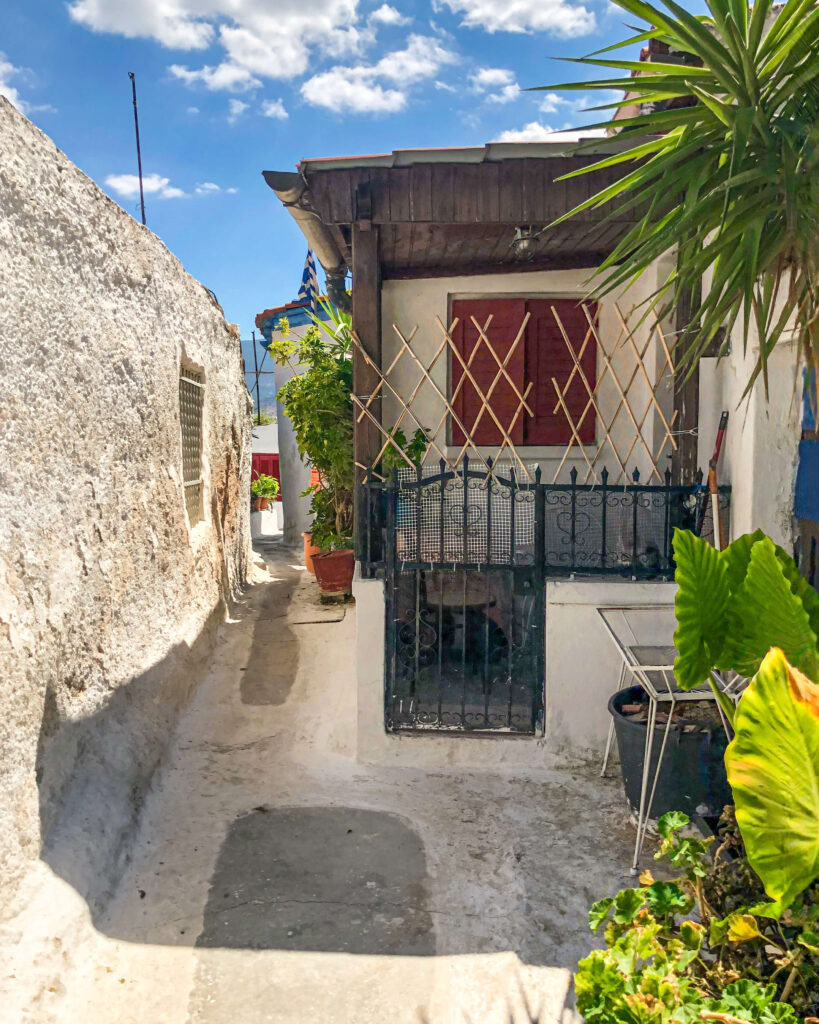
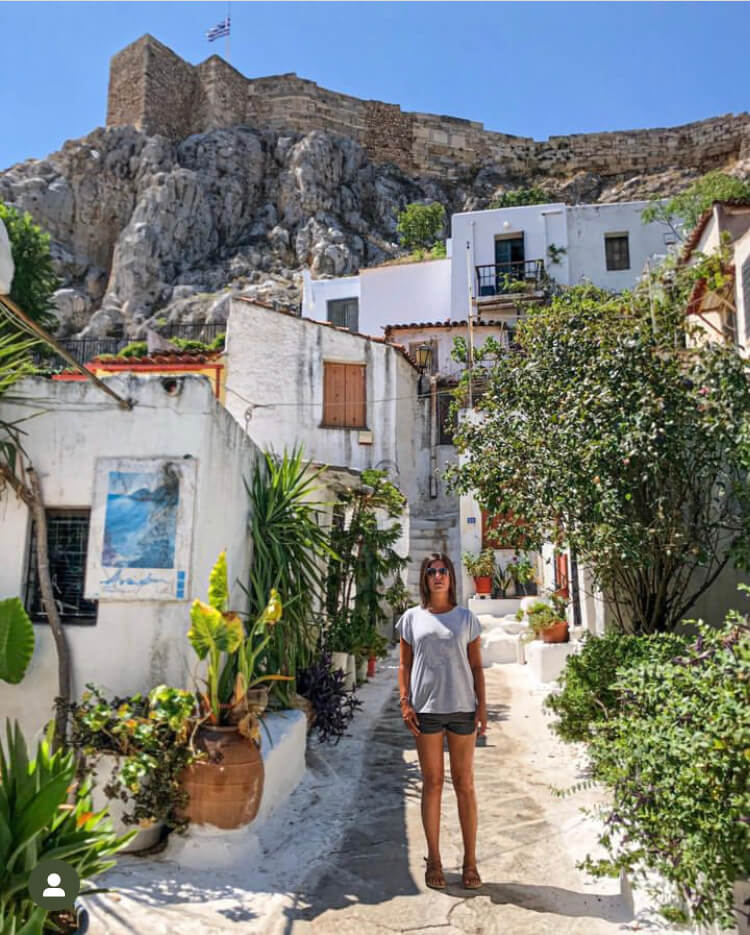
Certainly, the village of Anafiotika was built to resemble the architecture of the Cyclades islands. During its construction the workers mimicked their home style and put up the white-washed cubic houses made of stone with flat roofs and brightly painted shutters and doors. Some of those houses still have roof-top patios with gardens of potted plants and the occasional shade tree. These days Anafiotika retains its charm by an irresistible lure of Bougainvillea flowers, clay pots and roaming cats sitting in the sun.
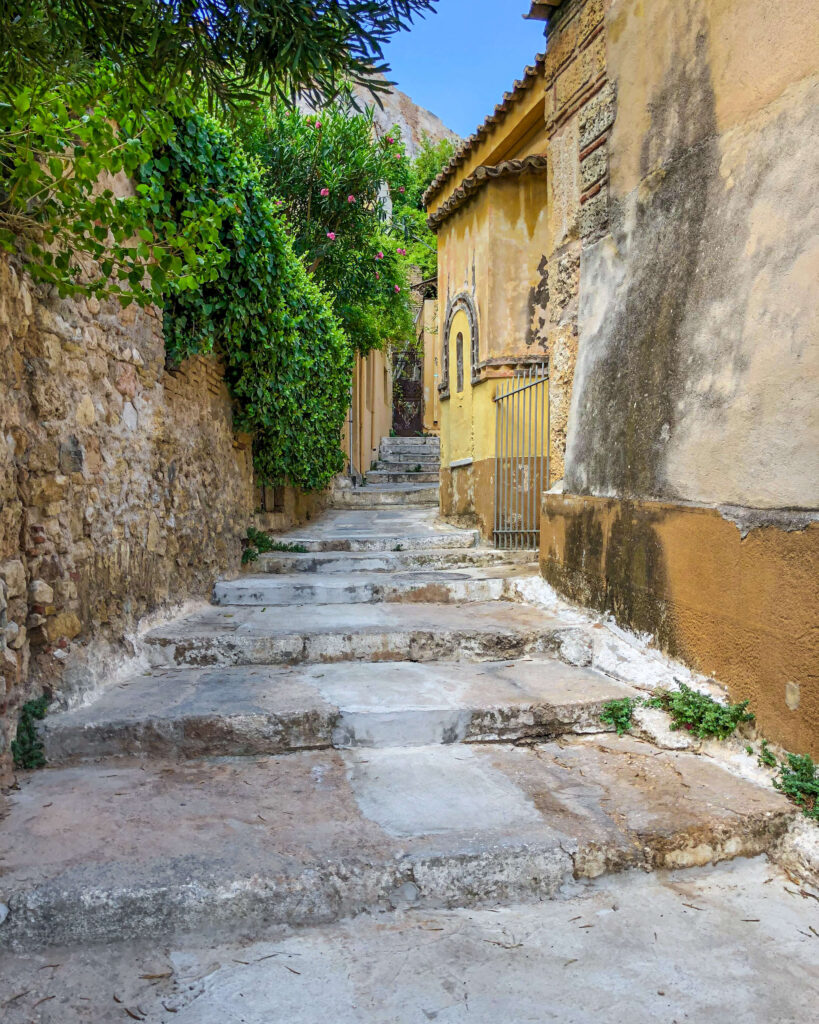
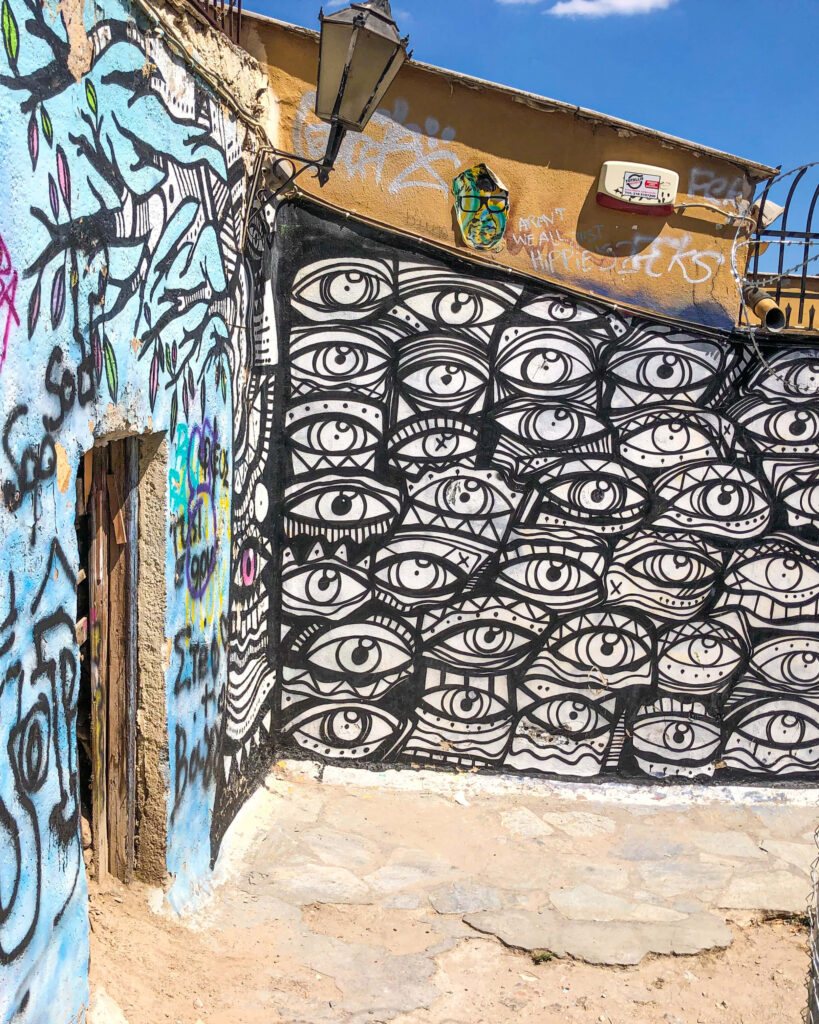
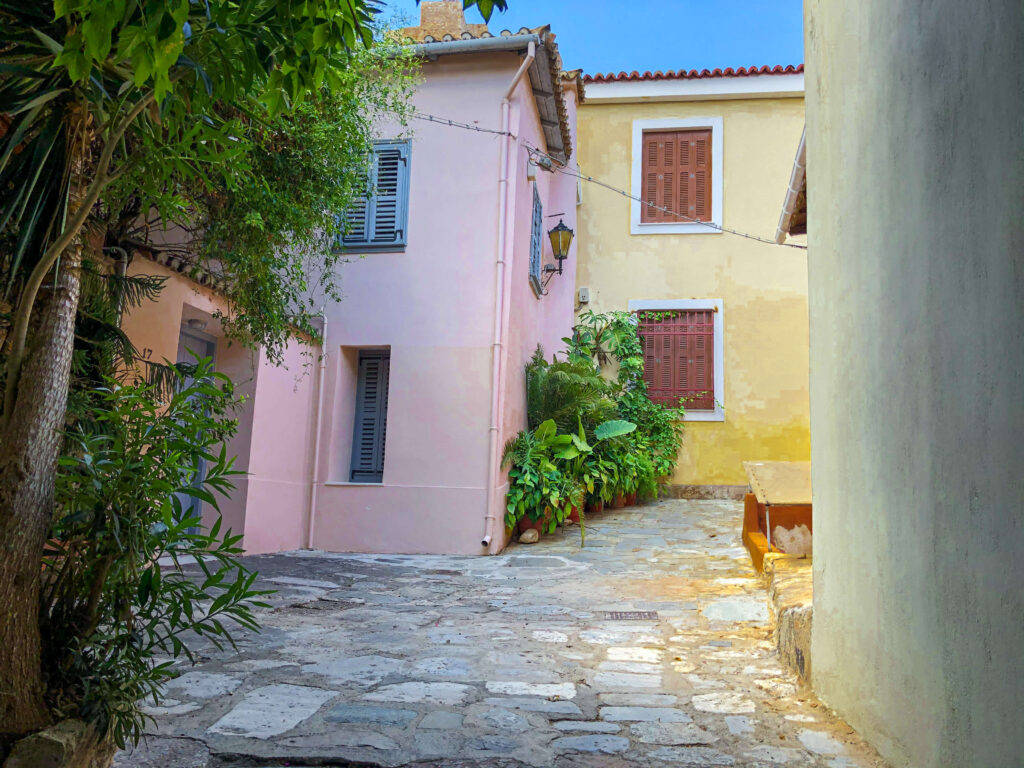
Even though Greece regained its independence in the 1800s, Athens still remained under the Ottoman law. One of them allowed the workers to build their houses anywhere they liked, although they could only do only at night (as they used to spend most of their days restoring the capital). Because of this most of the houses were constructed hastily and the layout of streets became such a maze.
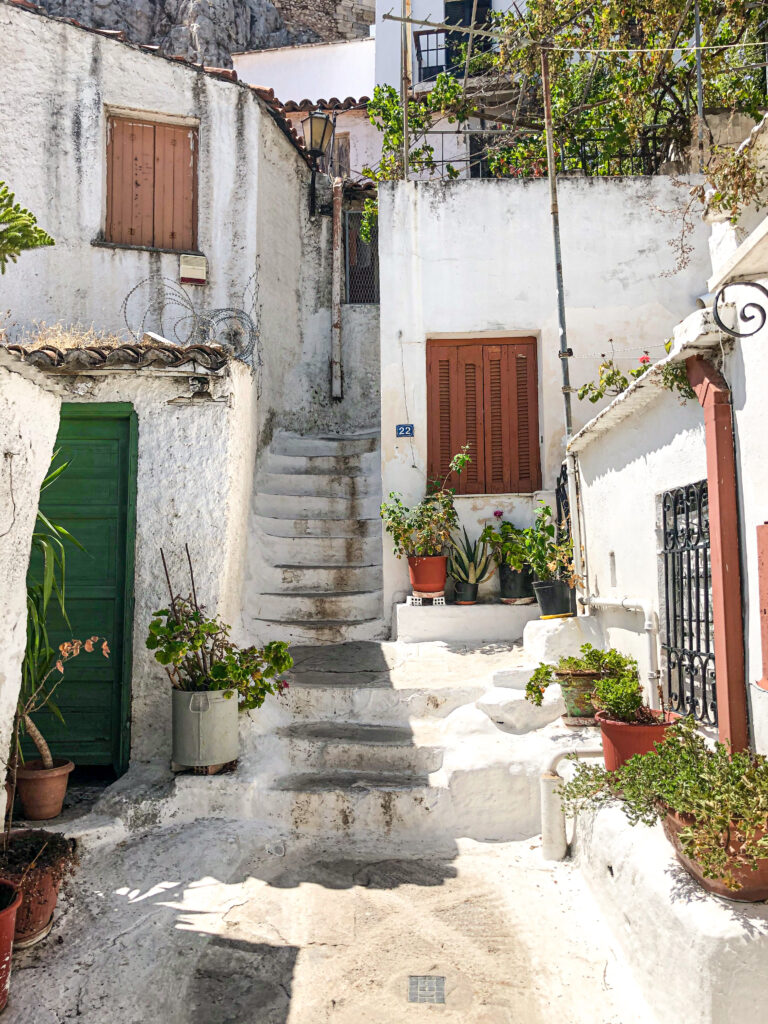
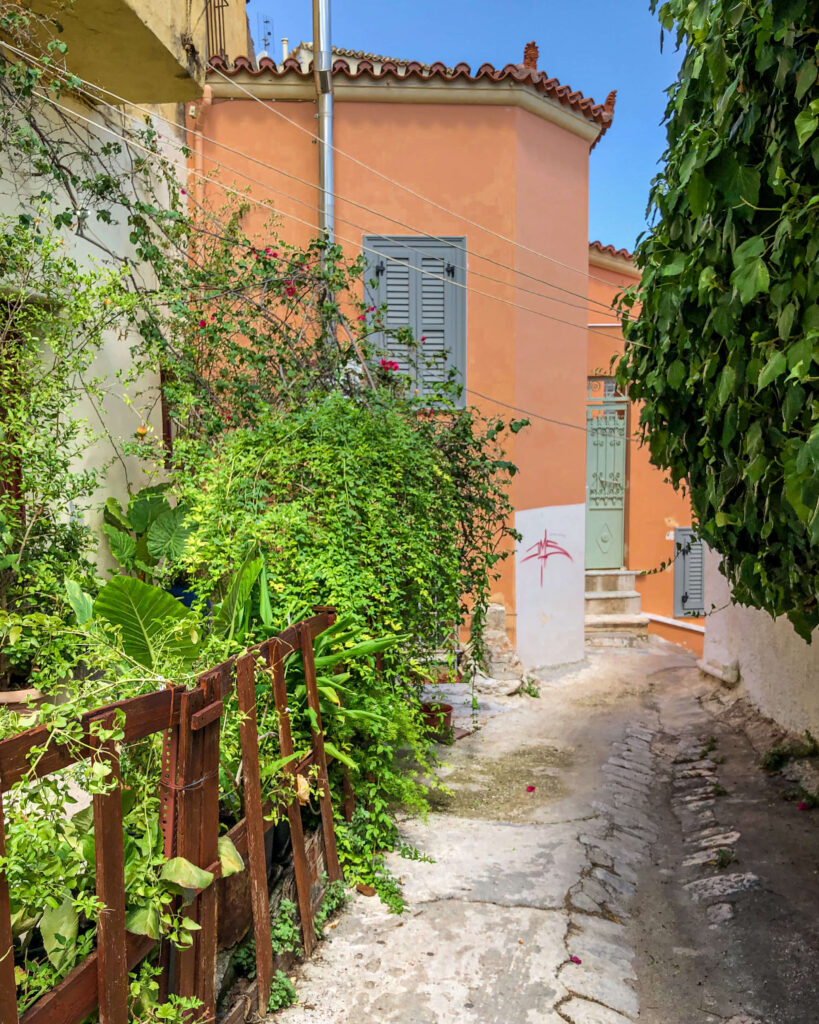
Unfortunately, most of the original village was destroyed in 1950s during the archaeological excavations around the Acropolis. What’s left today is only about 45 houses which remain true treasures of the Plaka. Some of them are still occupied by the original settlers while others have been converted into the guesthouses.
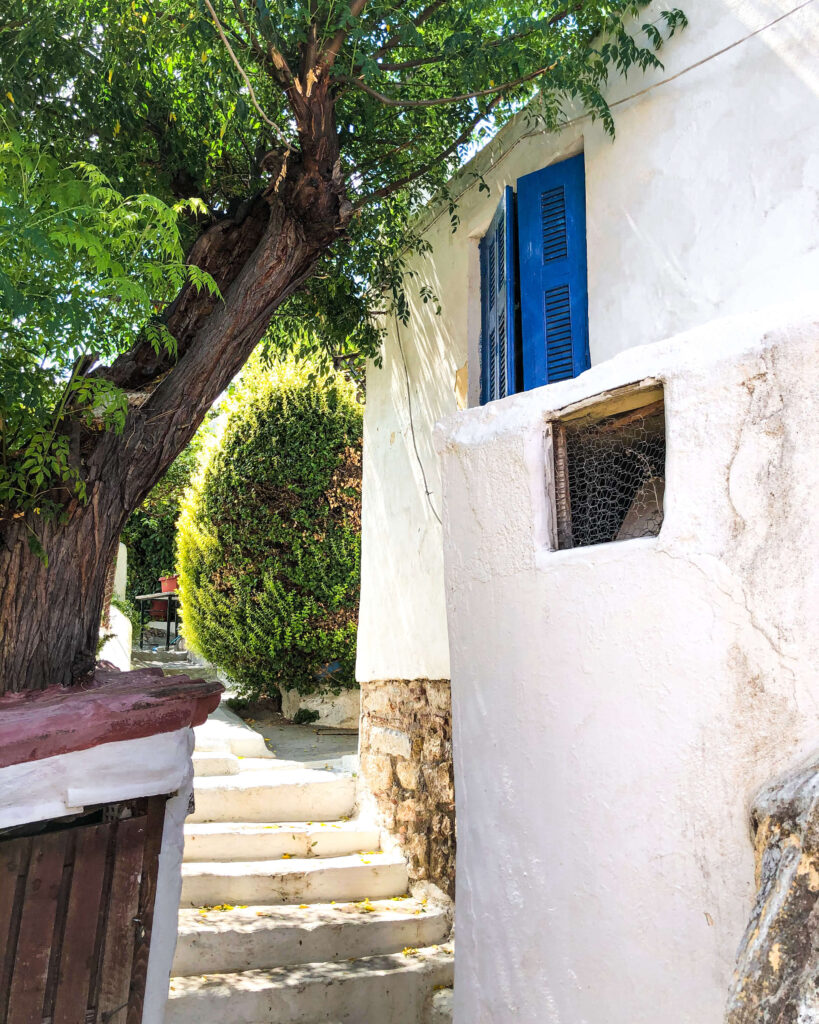
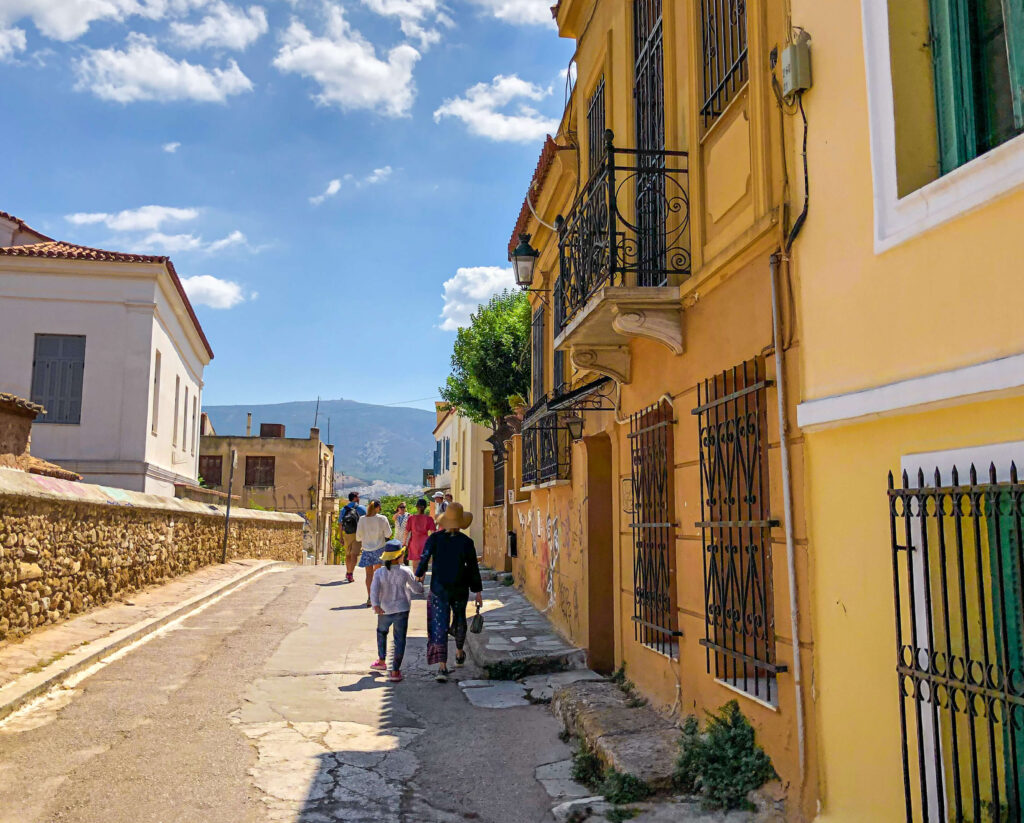

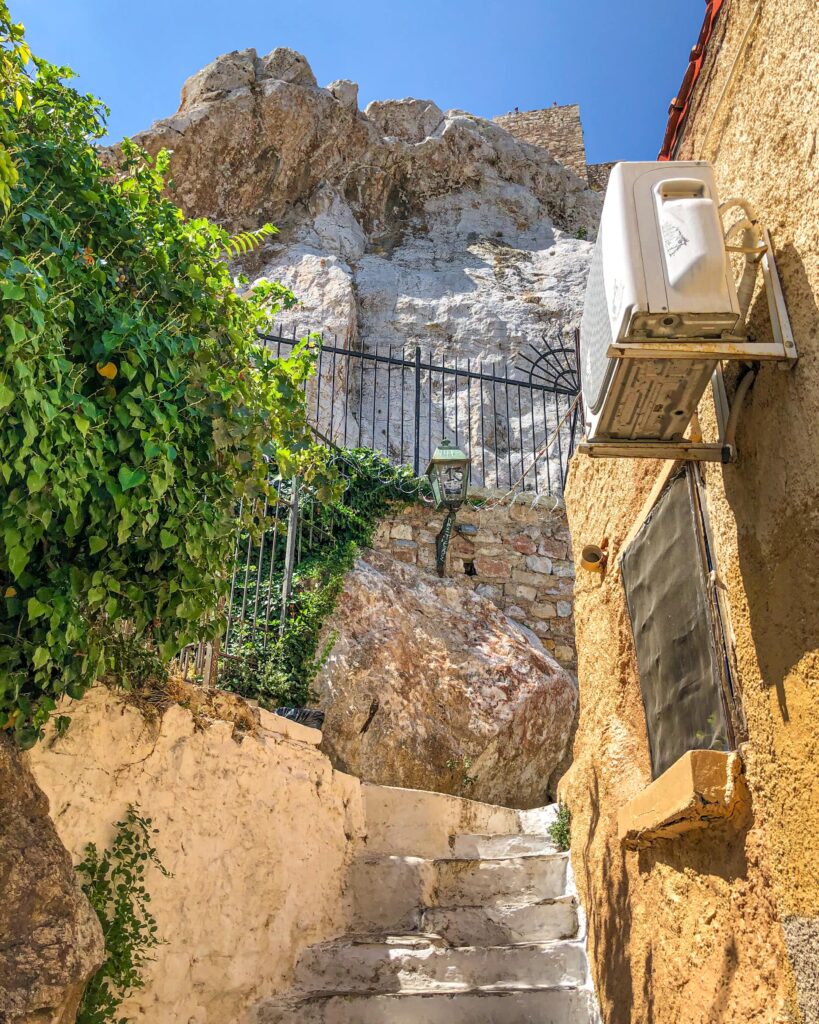
When you visit Anafiotika, it’s worth paying a visit to a few Byzantine churches located in this area. The one you see when you enter this area is the Church of Agios Georgio of the Rock (Holy Church of Saint George of the Rock) built on the southern edge of the village and still being in use. The second one is the Holy Church of Agios Simeon of Anafaia (the Holy Church of Saint Simon of the Anapheans). It’s nestled on the western border of the village and is home to an icon of Virgin Mary Kalamiotissa, who was thought to have miraculous powers. If you love art, you can also admire many street murals created by local artists all over Anafiotika, although the best ones are placed along the Stratonos Street.
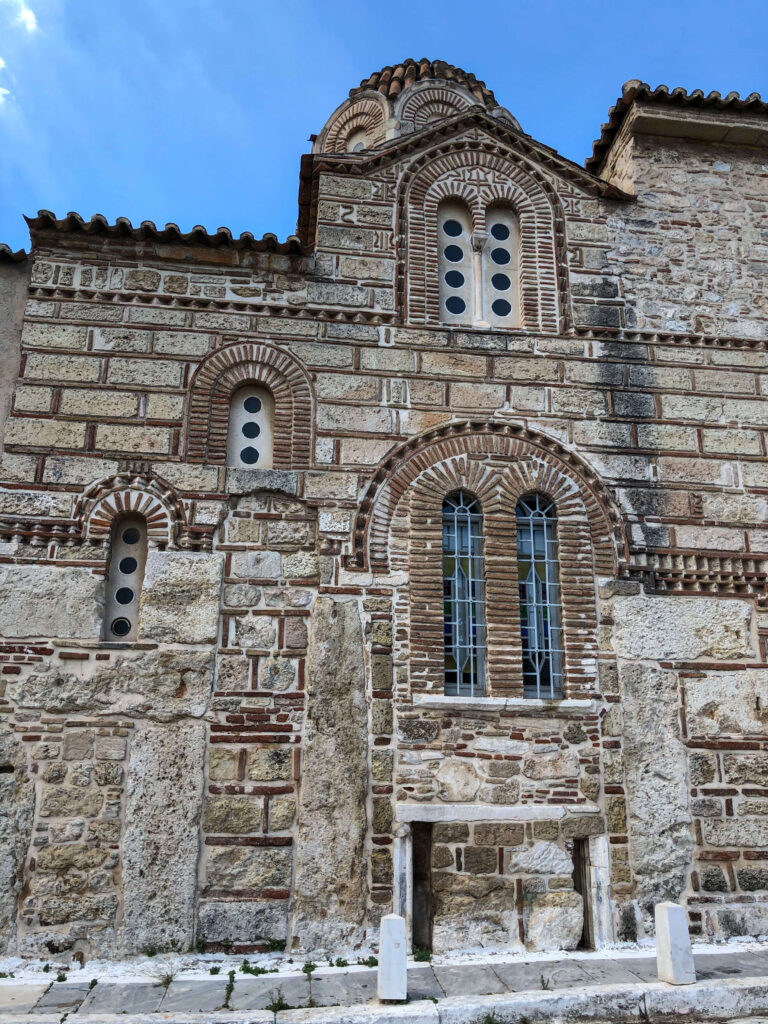
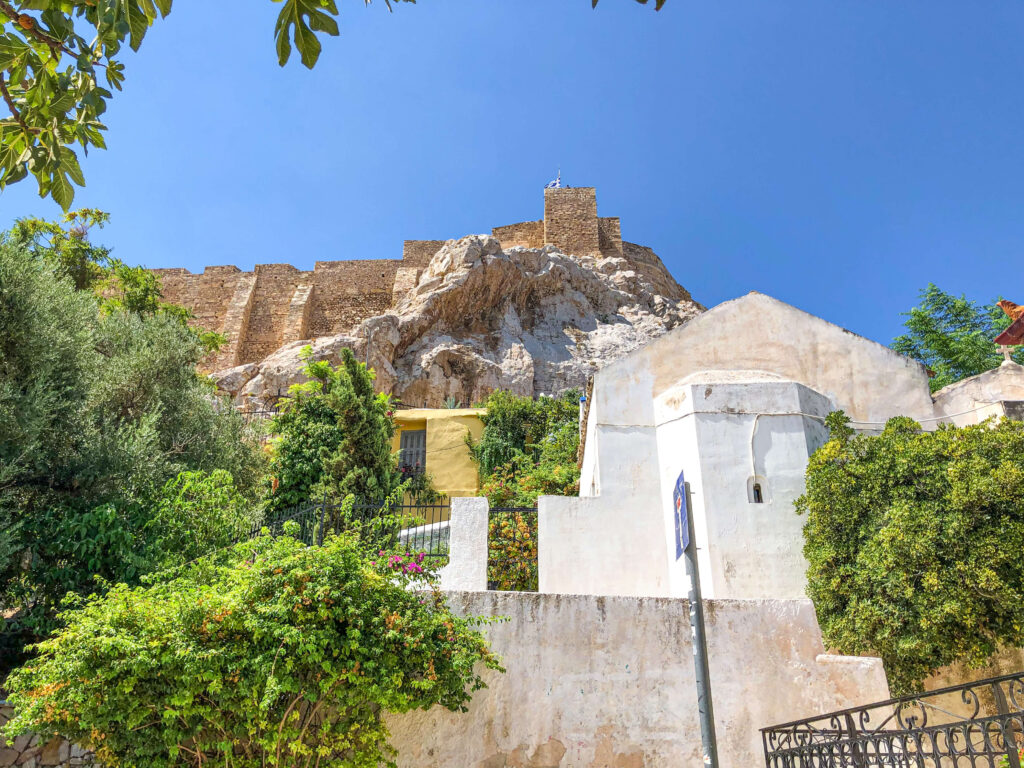
Why visit Anafiotika? When you walk around the winding roads which often have the dead end, you experience a feeling of being somewhere else, definitely not Athens! Plus, as you squeeze through the narrow streets paved with cobblestones, some barely an arm’s width you get to experience a taste of an island life with no need to leave the capital. Because it’s so isolated, it’s also a pure escape from bustling Plaka below.
Useful Information:
- Entrance – free
- Opening hours – 24/7
- Time – 1.5h
Omonia Square

Omonoia (Omonia) also known as the Concord Square is a district of Athens with the oldest square in city, located across the street from Syntagma Square. Because it’s the busiest part of the city with six streets intersecting there, it’s is also popular with locals visiting to do some shopping. It’s good to know that Omonia Square is home to one of the largest water fountains in Europe. You can surely imagine how impressive it is to see the 30-metre-wide Omonia fountain shooting the water 20 metres (66 feet) high into the sky.
To be honest Omonia is where most of travellers are likely to book their stay. That’s where you find most of the hostels for those on the budget and the backpackers filling the street during the high season. You may ask: is there anything to see around Omonia Square? To be honest, everything is based near the Panepistimiou Street and the tourists come to visit three neoclassical buildings called the ‘Athens Trilogy’:
- National Library
- University of Athens
- Academy of Athens
Did you know? Although Omonia is buzzing with life during the day, it quite often seem dangerous when the sun goes down. Since the Greek financial crisis of 2009, the area has been occupied by the homeless having nowhere to stay. Unfortunately, it’s also where the most crime is likely to happen. The locals consider this place full of pick pocketers and people selling different drugs in the streets. For those staying in the capital long enough, the view of the refugees from the neighbouring country like Albania becomes sort of normal in this part of Athens.
Useful Information:
- Entrance – free
- Opening hours – 24/7
- Time – 30 min
Kerameikos
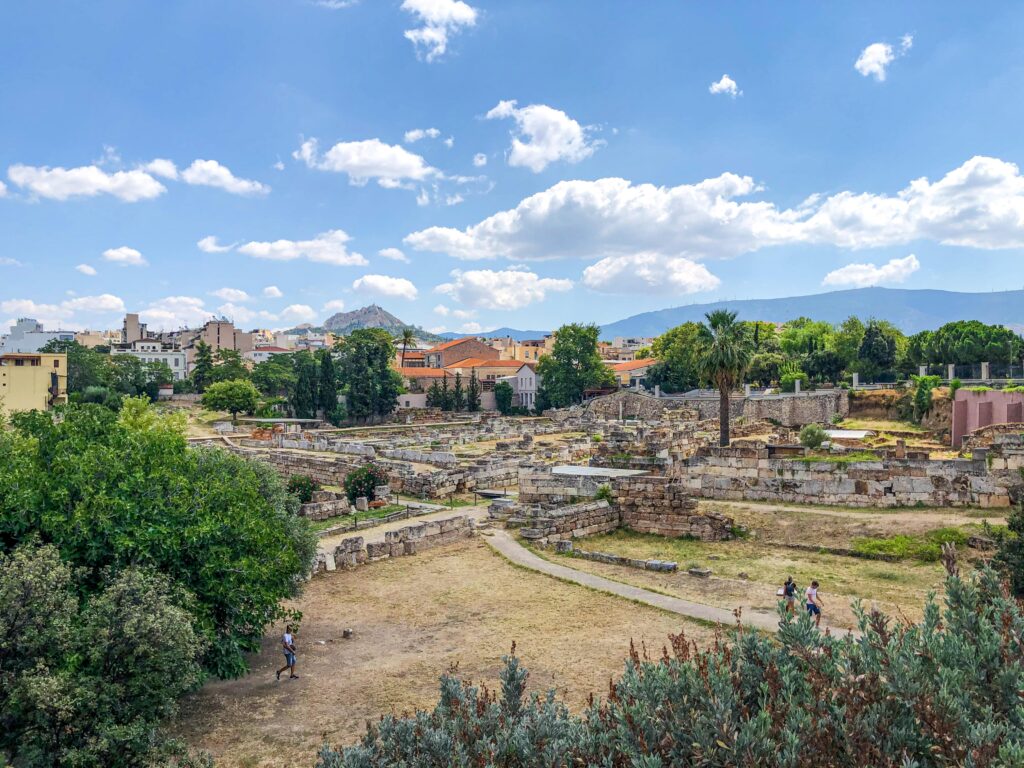
If you’re looking for something different to see in Athens, you should definitely visit Kerameikos. This archaeological site is located northwest of the Acropolis within a walking distance from Monastiraki. The name of the area derives from the Greek term ‘keramos’ (pottery in Greek, ‘ceramic’ in English) because there was many many pottery workshops around here in the past. Later on, Kerameikos was turned into an ancient cemetery that was continuously in use from the 9th century BC until the Roman times. Although it’s the least visited attraction in the capital, in my opinion it’s really worth exploring.

Back in the days Kerameikos was divided into two parts by the wall surrounding the city of Athens. The so-called Themistoclean wall had two gates, Dipylon and the Sacred Gate. While the area was split in two, the inner part was an inhabited area where the pottery was a way of life, while the outer side was the actual cemetery laying outside the city walls.
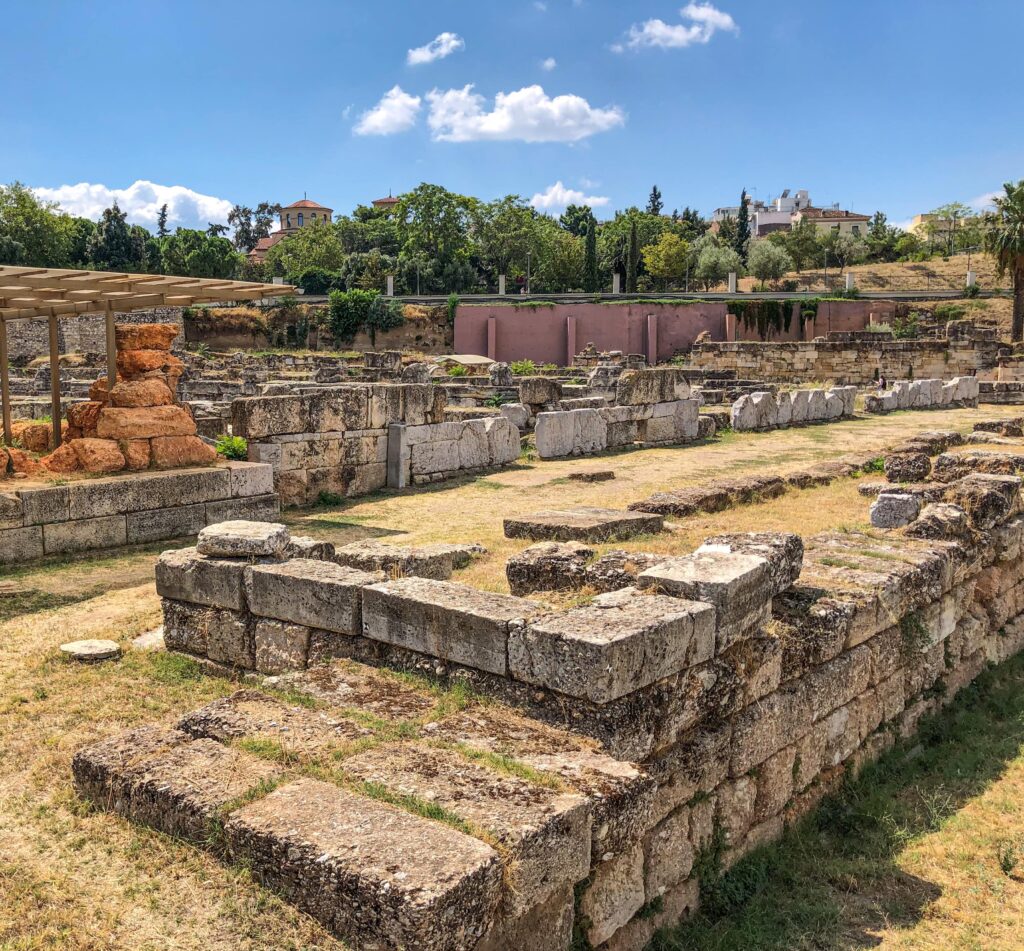


During classical times the Pompeion was constructed between two gates of Kerameikos. This public building served as a starting point for the long procession of the Panathenaic Festival which was the most important festival in ancient Athens. To honour of goddess Athena, the protector of the town a large sacrifice of 100 cows would take place before the procession. Unfortunately, the Pompeion was destroyed in 86 BC during the siege of Athens by Sullas, who was a Roman general.
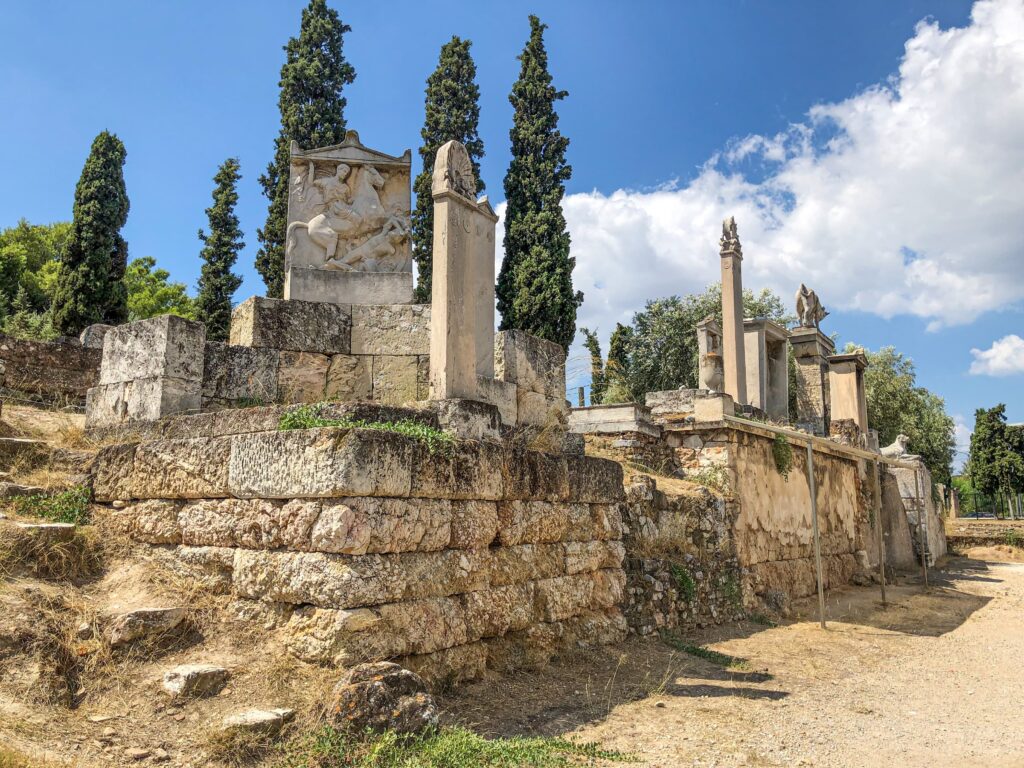


The archaeological excavations have been taking a place all around Kerameikos since 1870 which are now being continued by the German Archaeological Institute of Athens. To gather all the precious findings the Kerameikos Archaeological Museum has been constructed right by the entrance to the site. That’s where you find the columns of temples, marble statues, remains of public buildings, funeral offerings and thousands of tombs being put on display.
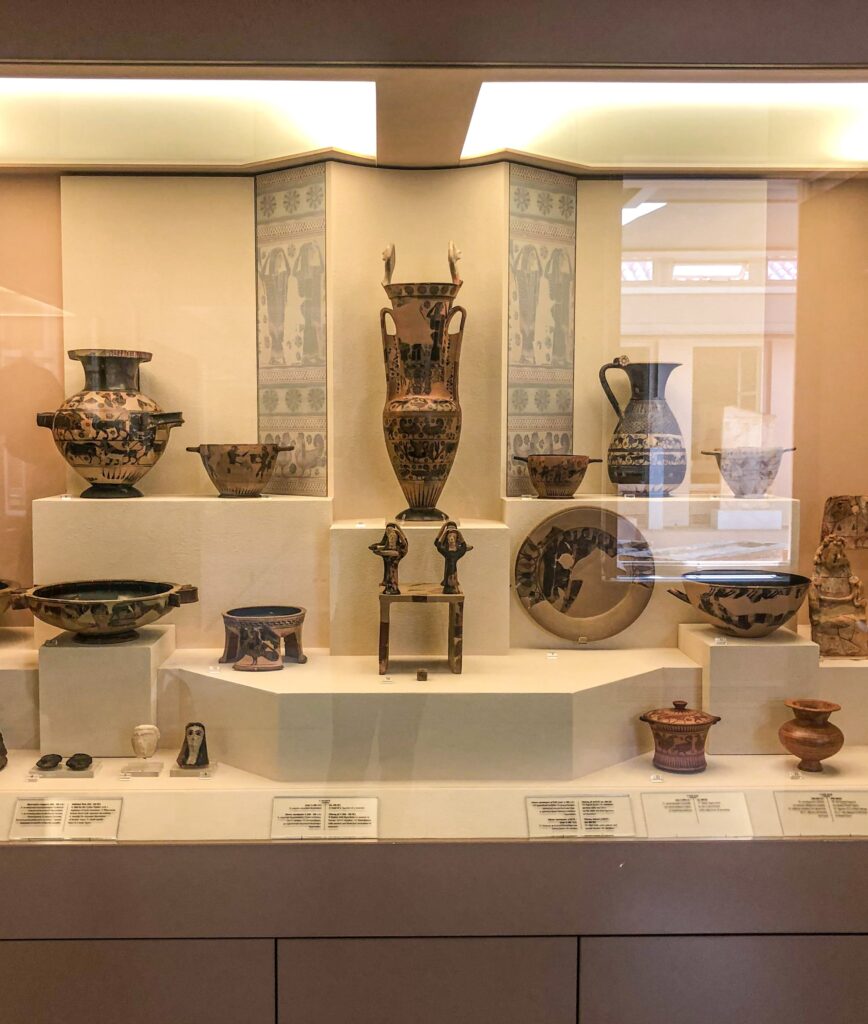

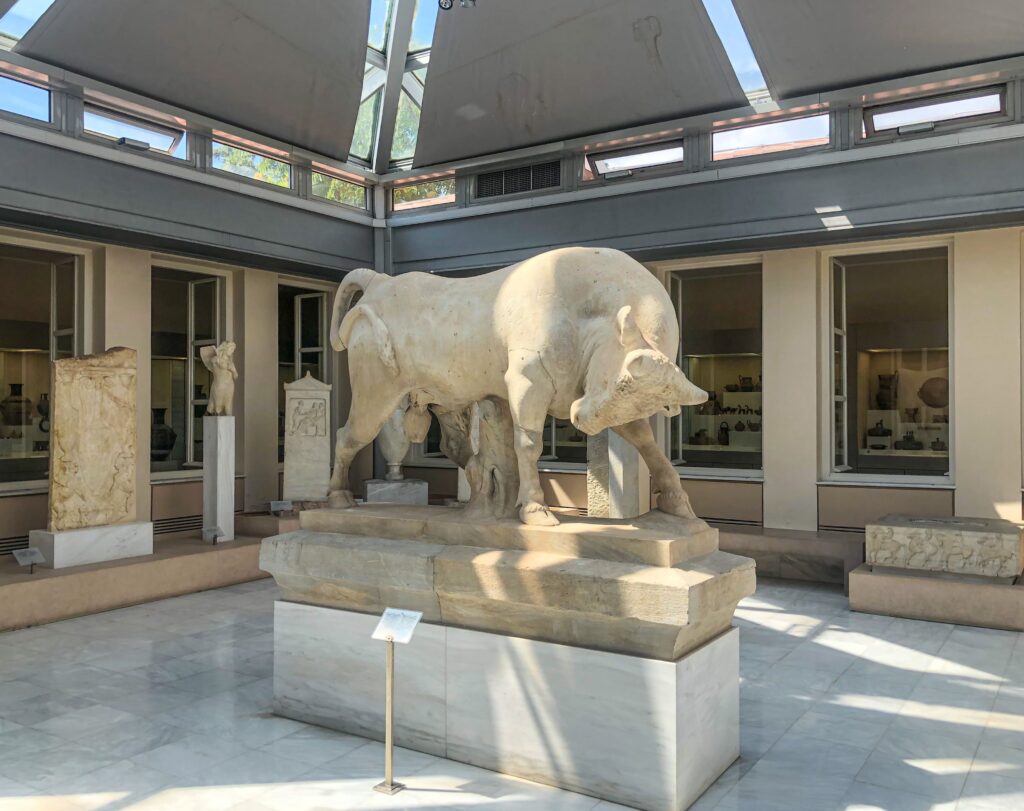
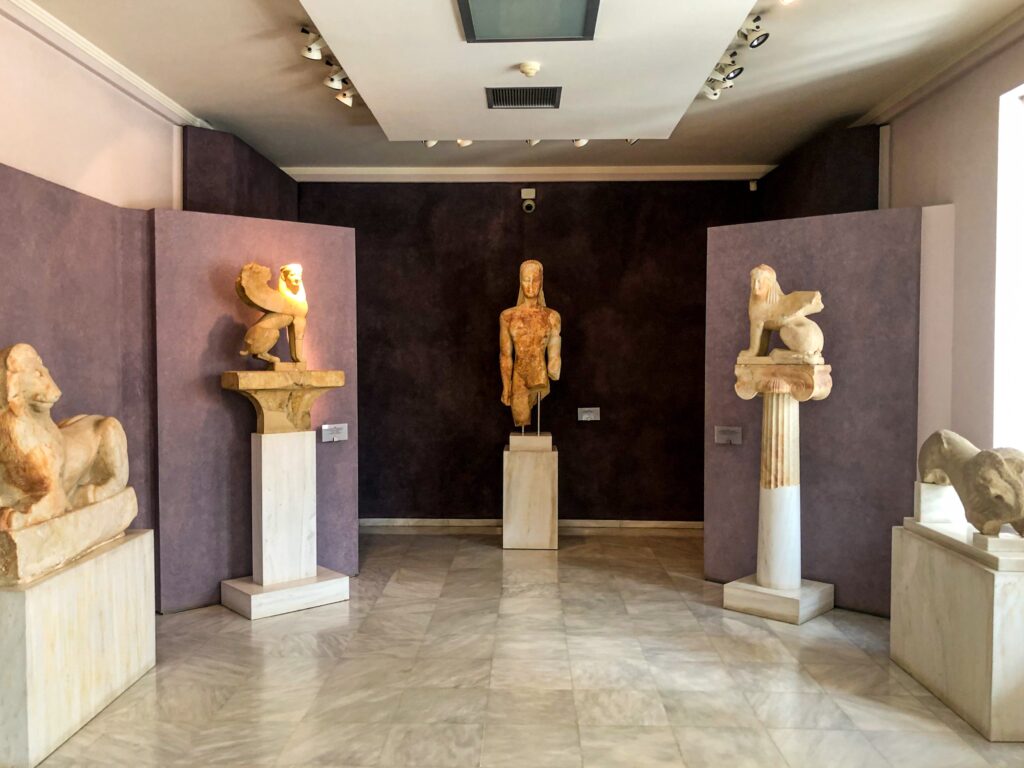
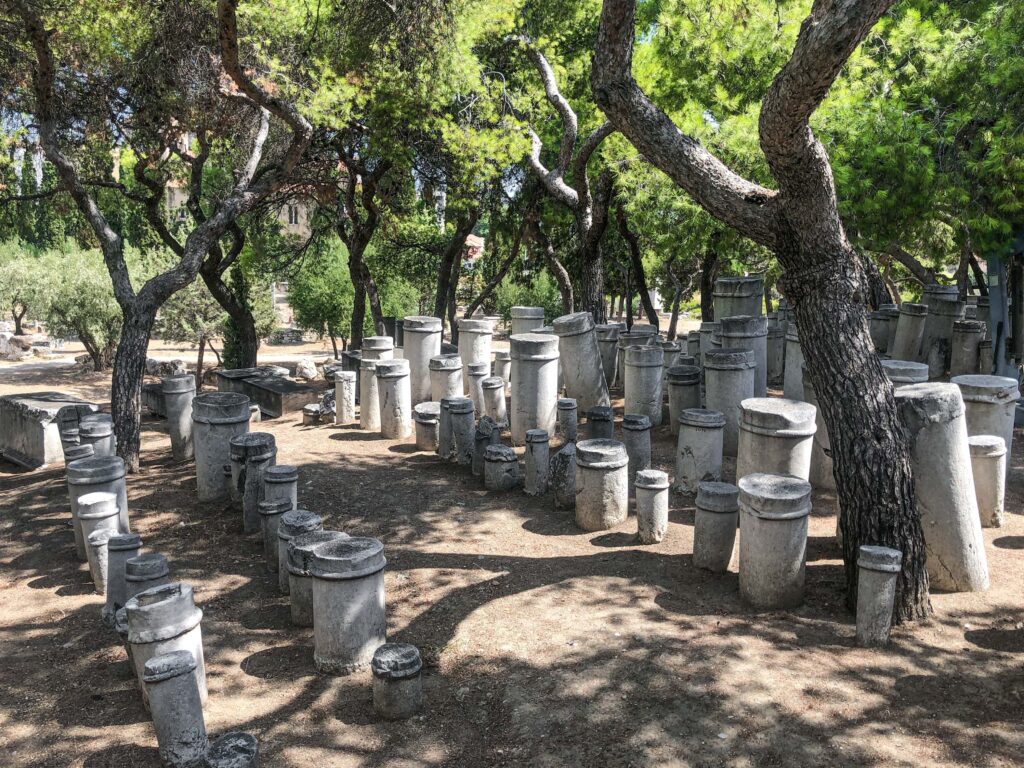
Why visit Kerameikos? The reason is that it’s the oldest necropolis located within the ancient city of Athens. Plus, this ancient place of burial became home to the Kerameikos Archaeological Museum where you can find out more about the ancient history of Athens. As you walk along the rocky paths, you notice that the graves are sort of drowning in the greenery and flowers. Personally I think it gives you an extremely melancholic experience and makes you appreciate life.
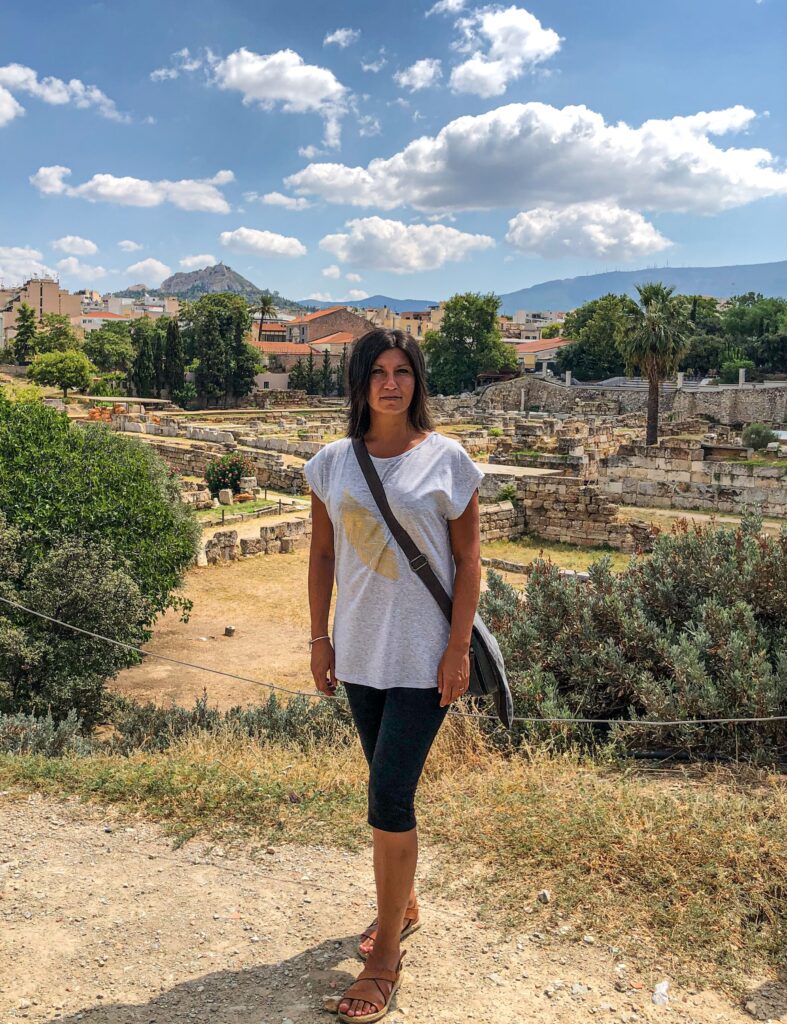
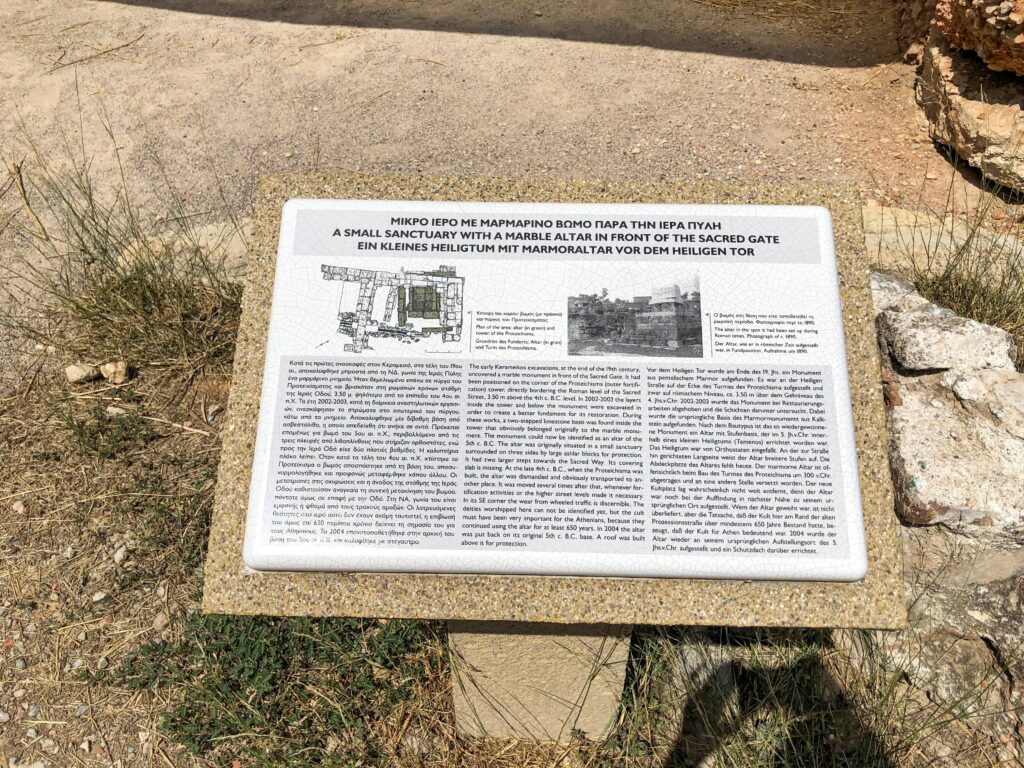
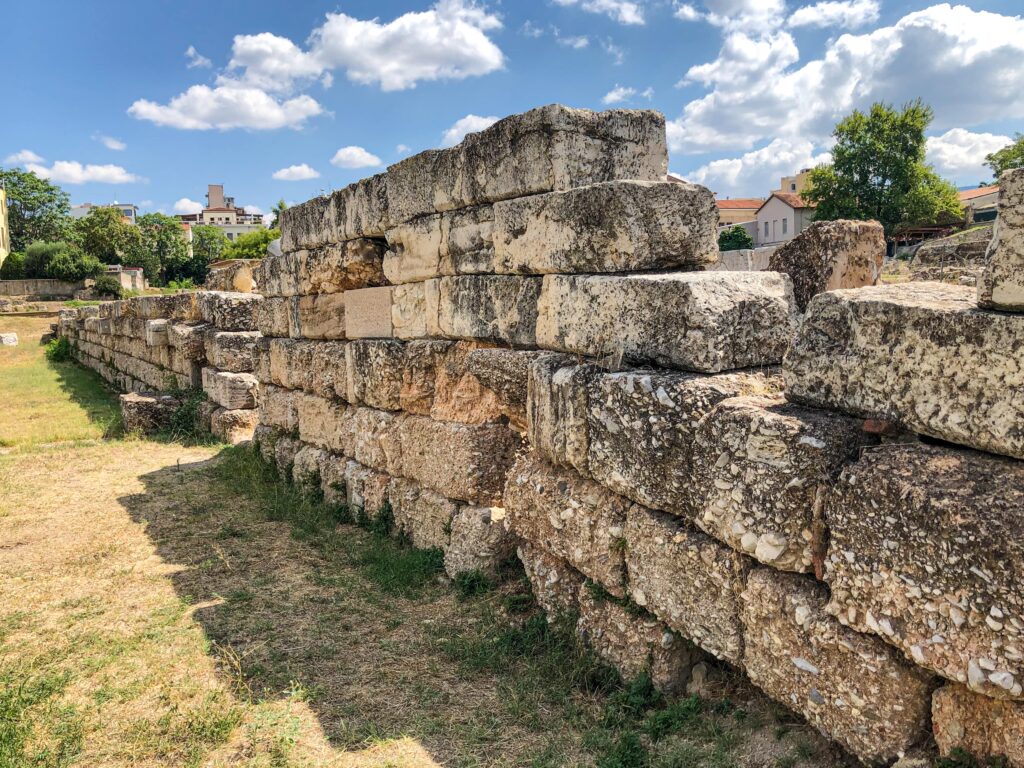
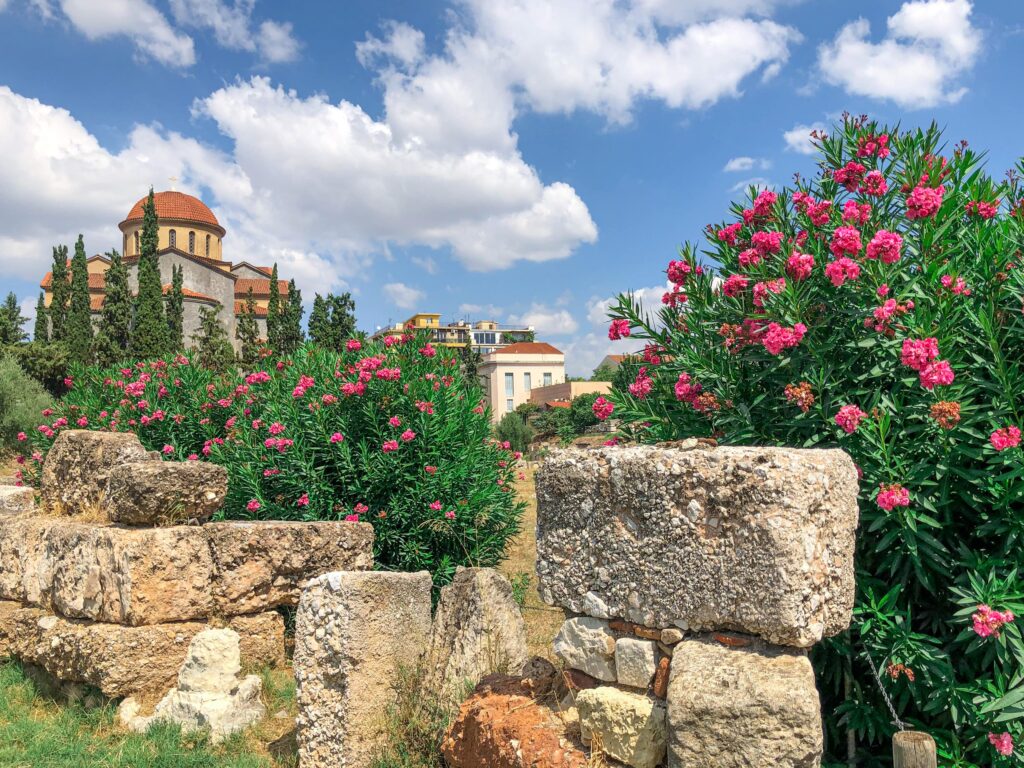
Useful Information:
- Entrance – Combined Acropolis Ticket
- Opening hours – 8:00 to 20:00
- Time – 1h
Hills of Athens
If you want to see Athens from above, it’s best to hike the seven hills the Greek capital is built on. The trip is so worth your effort as each of the hills has their own unique history and brilliant ancient myths associated with them. Although Athens is a huge metropolis, somehow a large part of it is focused within a small area. It’s thanks to the its hilly location you can enjoy the most incredible views from different parts of the city, both during the day as well before the sunset.
The seven hills of Athens:
- Acropolis
- Areopagus
- Philopappos Hill (or Hill of the Muses)
- Hill of the Nymphs
- Pnyx
- Mount Lycabettus
- Mount Anchesmos (or Tourkovounia)
Lykavittos Hill (Lycabettus Hill)

If you want to see the most impressive panorama of Athens, you should definitely visit the Lycabettus Mount. It’s the highest peak in Athens (300 meters above sea level) located on the opposite side from the Philopappos Hill near Kolonaki district. According to the legend Lykavittos was once a refuge of wolves (lycos in Greek), hence the name. Other myths suggest it was created when Athena dropped the limestone mountain which was later used to build Acropolis. At the top of the hill there is an observation deck with the Chapel of St. George and some cosy restaurants to enjoy a meal and drinks.





Although the Lykavittos Hill is easy to reach on foot, the road is winding and quite long. If you decide to climb, you’ll be surrounded by the greenery of pine trees covering the base of the mountain. If walking isn’t your cup of tea, there is the Teleferik Lycabettus Funicular Cable Car, which is the train taking you all the way up. The only downside is that it goes through the tunnel so you can’t really see anything along the way. The hill is also accessible by car or a taxi and the entrance is free.
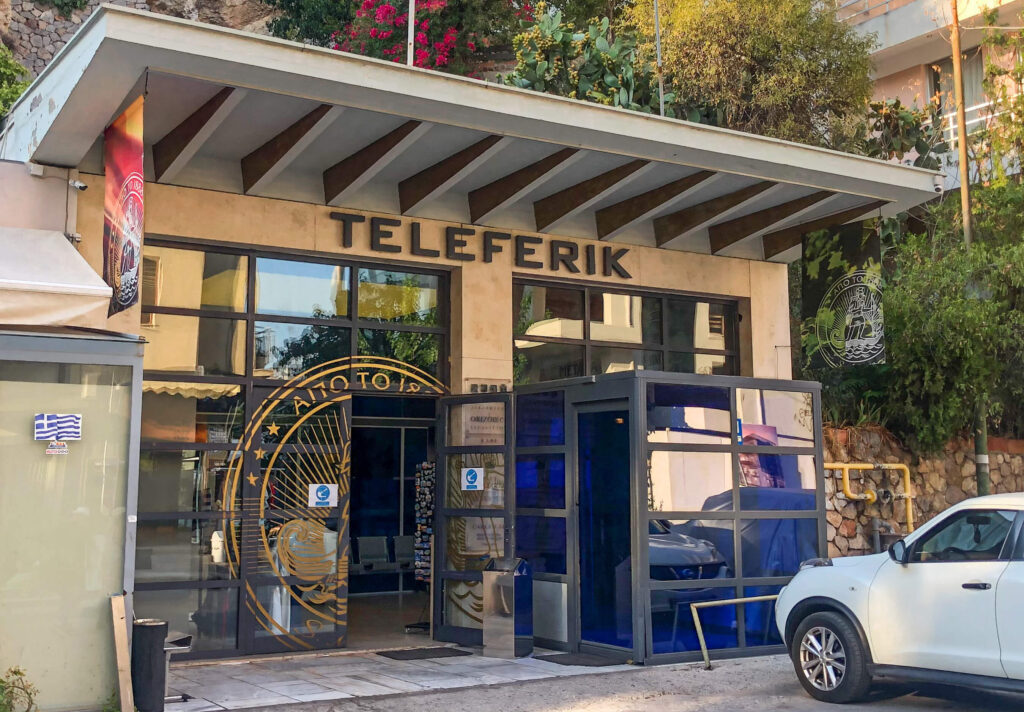
Why go? The view from Lycabettus Hill is simply breathtaking. Once there, you’re instantly stunned by the most beautiful views of Athens, including the Acropolis, Panathenaic Stadium, Ancient Agora, Temple of Zeus and more. It is as if you saw a jungle of the white concrete buildings filling every inch of the capital, which by the way is built on seven hills.
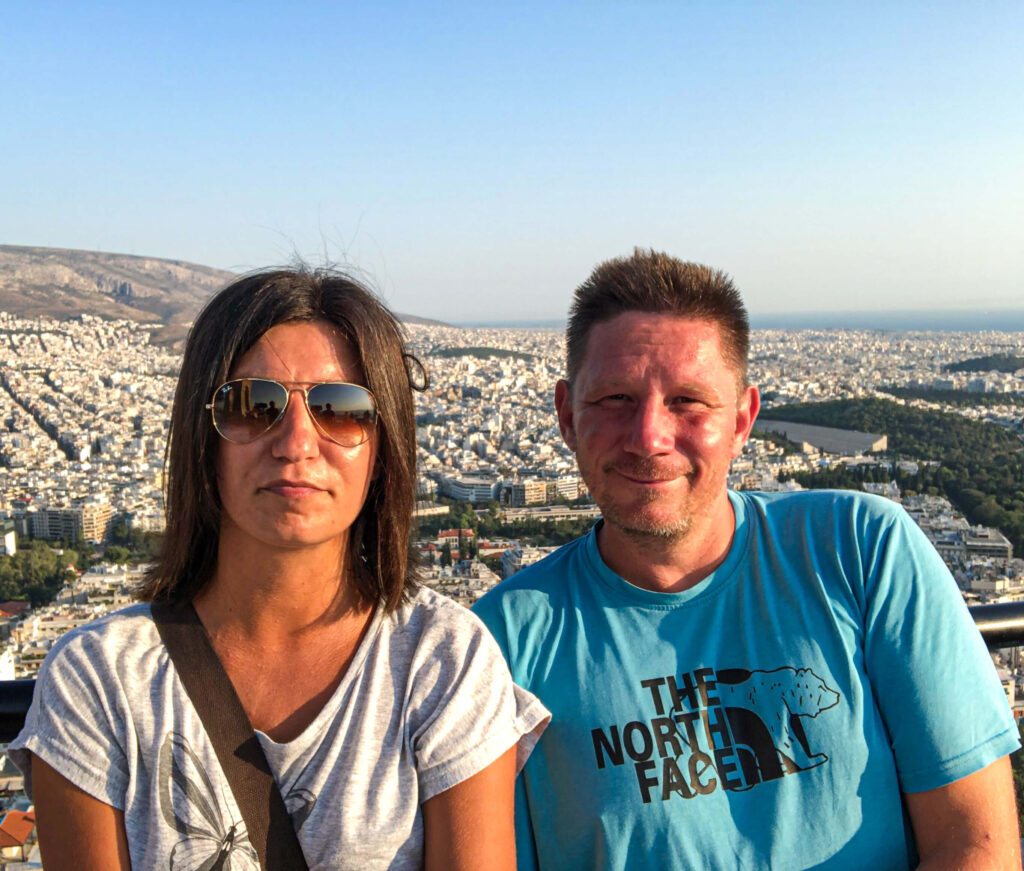
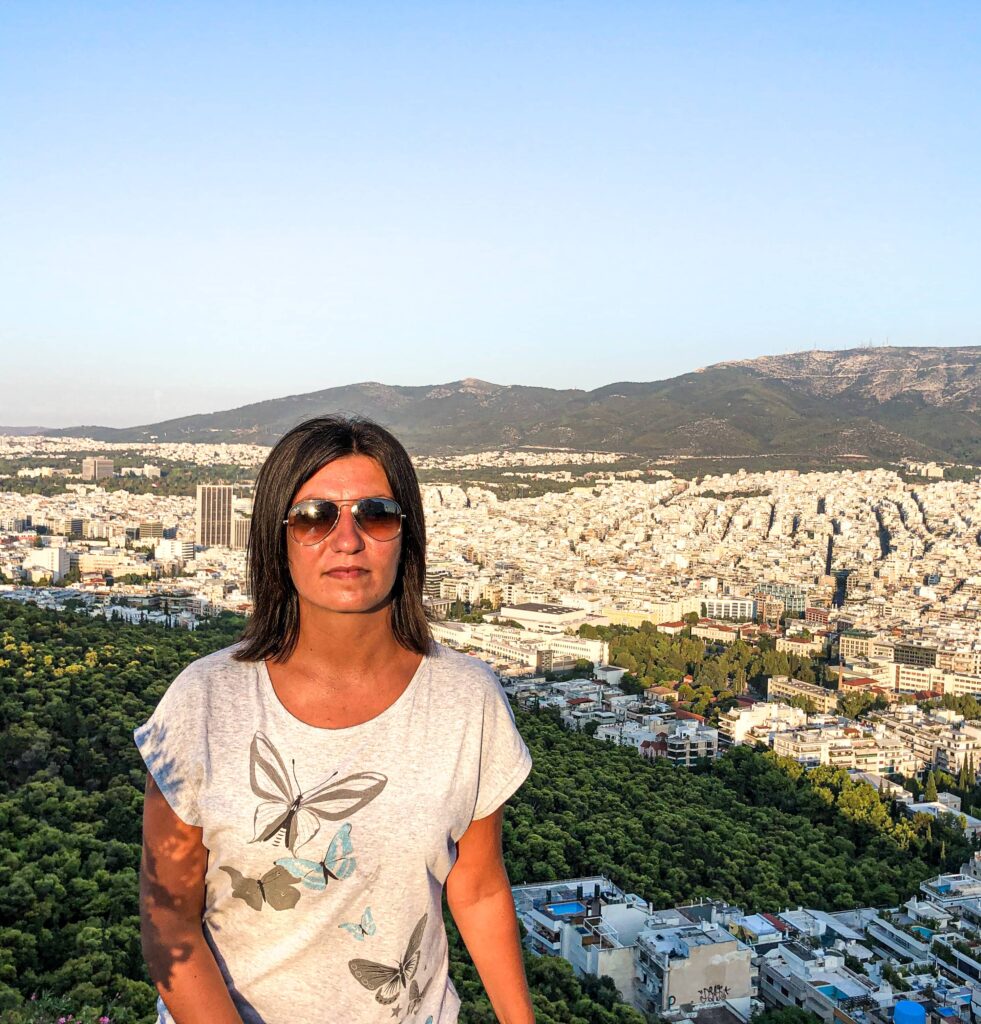

To be honest, Lykavittos can be visited anytime of the day but it’s best enjoyed in the evening. When the sun sets down, the Acropolis and the streets of Athens are well lit and shining of pure amber! Because Lycabettus Mount is one of the highest landmarks in Athens, you can spot the delicate shapes of the Peloponnese with the neighbouring islands of Aegis and Salami. Far in the background you can also see the Aegean Sea with ships docking at the Piraeus.
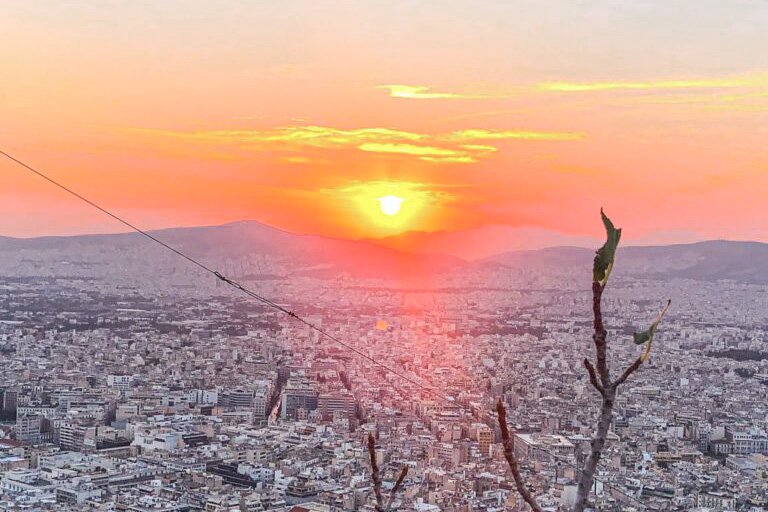
Useful Information:
- Entrance – Free
- Opening hours – 24/7
- Restaurants open at various times
- Time – 3h (including getting there)
Philopappos Hill
Philopappos Hill (or Filopappou Hill) also known as the Hill of Muses is one of the most interesting places to see in Athens. It stands 147 metres above sea level and covers the peaks of neighbouring Pnyx Hill and the Hill of the Nymphs. Located southeast of the Acropolis, not only does it provide stunning views of this ancient hill but also a great panorama of the Greek capital with the Aegean Sea at the background. From the western part of the hill you can spot the Piraeus and the surrounding islands, Salamis and Aegina.
What’s great about the Philopappos Hill is the fact that it’s the public space hence it’s free to enter. Although the best time to visit is at sunset, the park can be enjoyed anytime during the day. Generally, visitors to Philopappos can reach the top either by walking up the hill, which takes around 15 min or by taking a short taxi ride from the city centre. Those willing to walk will surely notice the climb is really easy and there are quite many attractions on the way stop by.
When you start climbing the Philopappos Hill, the first thing you notice is the mysterious set of caves which includes the Prison of Socrates. Although very little about them is known for certain, it’s believed that the philosopher Socrates might have once been imprisoned within them. Historically, Socrates was born in ancient Athens and spent most of his life teaching and practicing philosophy. These days he is considered one of the founders of Western philosophy and is credited with laying the groundwork for the development of moral and ethical philosophy.
Socrates was imprisoned because he was accused of corrupting the youth of Athens and of impiety, or disbelief in the gods. In 399 BC, he was brought to trial and sentenced to death by drinking hemlock, a poisonous plant. The charges against Socrates were politically motivated and were seen by many as an attempt to silence him and his ideas. Despite this, Socrates’ teachings have continued to be influential and have been studied for over two thousand years.
At the bottom of the Philopappos Hill there is a small Church of Ayios Demetrios Loubardiaris. It is believed to have been built in the early Byzantine period, although its exact date of construction is not known. This church is known for its beautiful mosaics, which are among the finest examples of early Byzantine art in Athens. The mosaics depict scenes from the life of Saint Demetrius, to whom the church is dedicated and other saints, as well as geometric patterns and floral designs.
In 1648, the Church of Ayios Demetrios Loubardiaris was the site of a reported miracle. The Turks, ensconced on the Acropolis, prepared to fire a cannon on worshippers gathered in the church, but the gunner was killed by lightning, saving the congregation. The church was named Loumbardiaris (‘of the cannon’) because of this event.
Definitely the most impressive spot to see on the Philopappos Hill is the Philopappos Monument. It was built in 115 AD as a mausoleum of Gaius Julius Antiochus Philopappos, the Hellenized prince of the Seleucid Empire who lived in Athens. After his exile from Commagene (located in south-central Turkey), Philopappos had settled in Athens and became an Athenian citizen to hold the religious and civil offices. He was considered a great benefactor and was highly esteemed by the residents.
The Philopappos Monument is built of Pentelic white marble and features a three-story structure with a rounded dome and columns. The interior of the monument is simple, but the exterior is adorned with intricate carvings and sculptures that depict scenes from Greek mythology and the life of Philopappos. The monument was restored in the 20th century and is now open to the public as an archaeological site.
Why go? Visitors to the Philopappos Monument can admire the stunning views of Athens, as well as the nearby ruins of the Theatre of Dionysus, the Parthenon and the Acropolis. The place is often visited by locals and tourists willing to capture the best panorama of the city of Athens and the Aegean Sea.
Useful Information:
- Entrance – Free
- Opening hours – 24/7
- Time – 4h
Hill of the Pnyx
The Hill of the Pnyx is the second ancient site located within the Philopappos Hill in Athens, Greece. It is a low hill located just west of the Acropolis with an artificially carved out stone platform or ‘bema’ (which literally means ‘step’ in Greek), with stone steps leading up to it. The Hill of Pnyx is known for its historical significance as the site of the popular assembly of the Athenian democracy. The assembly, which used to take place every nine days was called the Ecclesia and became a meeting place for the citizens of Athens to discuss and vote on important matters of their town.
The Hill of the Pnyx was the site of the Ecclesia from the 5th century BC until the end of the Roman Empire in the 4th century AD. It was here that the citizens of Athens heard speeches from political leaders and debated important issues such as war, taxes and trade. Some of the most famous speeches in Western history were delivered on the Hill of the Pnyx, including those by the great Athenian statesman Pericles.
Founded in the 5th century BC, Pnyx underwent three phases of construction. Initially, it was a simple, natural space featuring a retaining wall to the north. In the next stage, a semi-circular retaining wall was erected and two staircases provided access to the Bema, where speakers addressed the assembly. The site also had 500 wooden seats for the council members elected by the assembly. In its final renovation, the same design was utilized but on a larger scale. According to reports, eventually the Pnyx had the capacity to hold up to 20,000 citizens, though a minimum of 6,000 Athenians was required to initiate a discussion.
Excavations at Pnyx began in 1910 by the Greek Archaeological Society. Later, in the 1930s, additional excavations were carried out by H.A. Thompson. In addition to the Pnyx platform, several other ancient structures were discovered, including two large stoas meant to provide cover from inclement weather, the altar of Zeus Agoraios and the sanctuary of Zeus Hypsistos.
Why visit? Today, the Hill of the Pnyx is an archaeological site and is open to the public. When you visit, you can see the remains of the stone benches that were used by the citizens of Athens during the Ecclesia, as well as the speaker’s platform and the retaining wall that was built to support the seating area. Apart from the historical significance, the views from the Hill of the Pnyx are simply memorising!
Useful Information:
- Entrance – Free
- Opening hours – 24/7
- Time – 30 min
Hill of the Nymphs
The third ancient site worth visiting on the Philopappos Hill is the famous Hill of the Nymphs, measuring just about 100 m in height. This amazing hill was dedicated to the nymphs, female spirits of nature in ancient Greek mythology. By the late 6th century BC, the Hill of the Nymphs served as a site for political meetings and gatherings, additionally several monuments and structures were built there over the centuries. By the end of the 4th century BC, the hill was connected to the nearby Hill of the Muses.
During the later periods of Athens’ history, the Hill of the Nymphs was used as a fortification and military stronghold. Structures such as walls and towers were built on the hill to defend the city. These days it’s home to several tourist sites such as the Dora Strata Theatre plus the Pnyx and the National Observatory of Athens.
Useful Information:
- Entrance – Free
- Opening hours – 24/7
- Time – 30 min
What to do in Athens
Although Athens is filled with ancient attractions, there are many different things tourists can do all around the city. The most interesting things to consider while visiting Athens are:
- Walking – take time to unwind around the districts like Monastiraki or Plaka
- Street Art hunting – visit the graffiti paintings spread all over the buildings around the capital
- Sunset watching – hike Philopappos Hill and Lykavittos Mountain for amazing views
- Shopping – go to the Flea market in Monastiraki and Plaka and spend more than intended
- Eating – experience the traditional Greek cuisine
- Nightlife – go wild when clubbing in Psyrri area
- Cinema – watch a movie under a stars at Cine Paris outdoor cinema
- Museums – get to know the culture and history a bit more
Street Art of Athens
The capital of Greece is a huge metropolis inhabited by almost 4 million people. But today’s Athens is the city of contrast where the antiquity meets the modern world, the wealth contrast with poverty and the crisis is still seen. On one side there are old monuments like the Parthenon, on the other you notice the walls painted by the graffiti artists. What draws your immediate attention is the Acropolis towering over the concrete jungle and the beautiful buildings mixing with those falling apart. To be honest the architectural chaos is seen everywhere but that’s what makes Athens worth visiting.
As the public space in Athens doesn’t belong to anyone, the streets are taken over by the local artists. When you walk around the capital, you notice the quality of the street murals. It’s as if the artist was trying to spread their vision by covering every blank space of the capital. The truth is that some images represent the pure art of work while others are simply an act of vandalism or political protest. Regardless, the street murals are one of the top tourist attractions to see in Athens. It’s because you can almost hear a voice of the artist shouting out of the street paintings.
As you walk around the city, you notice that graffiti not only appears on the facades of buildings but also on walls, road signs, external blind for shops and bars. Athens is a city brimming with art and creativity with every inch of its streets covered in stunning works of art. The city is truly drowned in a sea of impressive artwork, making it a visual feast for the eyes of visitors and locals alike. Whether it’s the intricate carvings and sculptures adorning ancient ruins or the colourful murals and street art decorating modern buildings, Athens is a city that celebrates art in all its forms.
Whether you’re a fan of classical art or contemporary styles, Athens is the perfect place to immerse yourself in the beauty of creativity and imagination. So come and experience the artistic richness of Athens, where every corner you turn is sure to be a feast for the eyes. Although the murals can be found over the city, the best places are focused around the streets of Exarcheia, Psyrri, Gazi and Metaxourgio. That’s where you fully enjoy the graffiti hunt and admire some of the best street art in Athens.
Useful Information:
- Entrance – Free
- Opening hours – 24/7
- Time – 4h
Shopping in Athens
Certainly, the Greek holidays wouldn’t be the same without doing some shopping. Because the heart of Athens beats on its streets, that’s exactly where you find lots of colourful shops scattered all over the city. When you get lost walking around the small alleys, you find vendors selling the latest fashion, traditional souvenirs or essentials like food. It’s so much fun to walk around even if your intention is just to take photos of the beautifully laid out stores. These shops are so colourful with plenty of stock often stretching out to the pavement.
Athens Central Market
The Athens Central Market, also known as the Varvakeios Market, is a bustling hub of activity located in the heart of Athens, Greece. The market is a popular destination for both locals and tourists alike, offering a wide range of fresh produce, meats and seafood as well as a diverse selection of Greek products, such as olive oil, honey and cheeses.
The Athens Central Market’s, which is divided into the fish and the meat sections, offers a wide range of fresh and delicious options everyone. The market’s fish stalls are lined with an abundance of freshly caught seafood, including succulent shrimp, octopus and a variety of fish. The seafood is carefully selected and displayed to showcase its quality and freshness, making it a popular destination for seafood lovers.
In addition to the fish stalls, the meat section of the market is also a hub of activity, offering a diverse range of meat options including lamb, pork, and beef. The meat is sourced from local farmers and butchers, ensuring its high quality and freshness. Customers can choose from a variety of cuts and have their purchases expertly butchered to their specifications.
The other market’s indoor and outdoor stalls are lined with vendors selling everything from juicy fruits and vegetables to fragrant herbs and spices. Visitors can find exotic ingredients and sample traditional Greek dishes at the many food stalls located within the market. Whether you’re looking for a quick bite or ingredients for a home-cooked meal, the Athens Central Market has something for everyone.
In addition to the food offerings, the market also features shops selling jewellery, clothing and other souvenirs. The lively atmosphere, combined with the market’s history and cultural significance, make it a must-visit destination for anyone visiting Athens.
Whether you’re a foodie, a shopper or just looking for an authentic Greek experience, the Athens Central Market is the perfect place to immerse yourself in the local culture. So, head on down and discover the many delights that this iconic market has to offer!
Useful Information:
- Entrance – Free
- Opening hours – 7am to 6pm
- Time – 30 min
Nightlife in Athens
The truth is that Athens is a city that never sleeps and its nightlife is a testament to this vibrant and energetic culture. Whether you’re in the mood for live music, dancing or just a drink with friends, Athens has something to offer for everyone.
For those who love to dance, there are numerous nightclubs and bars throughout the city that stay open until the early morning hours. Some popular venues include Six D.O.G.S, Gazi Music Hall and Byzantino, which are the clubs offering a diverse selection of music, from techno and house to Greek music and international hits, making them a popular destination for locals and tourists alike.
For a more laid-back night out, there are also many bars and tavernas that offer live music, delicious drinks and a relaxed atmosphere. Some of the most popular spots include Pallas, Dionysos Bar and Kit-Kat. These bars are perfect for those looking to enjoy a drink and listen to some great music in a relaxed and friendly environment.
Athens is also home to many traditional tavernas that offer live music and traditional Greek dances, making them a unique and unforgettable experience. Some of the most popular tavernas include Plaka Taverna, Steki Tou Ilia and To Kanoni. These tavernas are perfect for those looking to experience the local culture and cuisine.
Museums in Athens
Greece is famous for having more archaeological museums than any other country on this planet. In fact, there are over 40 museums and 10 archaeological sites in Athens alone! Those, who love getting to know the history and culture, this ancient capital is a perfect destination to travel.
The best museums to visit in Athens are:
- National Archaeological Museum – the collection of sculptures, figurines, fragments of paintings, ceramics and jewellery from various historical periods. The museum is primarily devoted to the art of ancient Greece.
- Acropolis Museum – the collection of original decorative elements of temples, sculptures and everyday objects found around Acropolis.
- National Museum of Contemporary Art – the collection of contemporary Greek and international art.
- Museum of Cycladic Art – the collection of white marble statues from the Cyclades.
- Benaki Museum – privately owned collection of Ancient, Byzantine and the Middle East masterpieces.
It’s worth noting that there are days during the year you can access the museums for free: (6th May, 18th April, 18th May, last weekend in September and 28th October). Also, it’s good to know that between 1st Nov and 30th March tickets are discounted by 50% and every first Sunday of the month is free of charge.
Acropolis Museum
The Acropolis Museum is a world-class museum located in Athens, Greece, showcasing the rich history and culture of the ancient Acropolis. The museum was opened in 2009 and is housed in a modern building that was specifically designed to showcase the artifacts found on the Acropolis.
The museum’s exhibits range from the Archaic period to the end of the Roman Empire and include some of the most iconic and recognizable artifacts of ancient Greece, such as the famous Parthenon sculptures and the Erechtheion frieze.
It’s worth noting that the original sculptures of the Parthenon are located in two main places: the British Museum in London and the Acropolis Museum in Athens. What visitors see when they admire Erechtheion on the Acropolis Hill are the copies that replaced the original caryatids. The Acropolis Museum also features interactive exhibits and multimedia displays, providing visitors with a unique and immersive experience.
One of the most unique and impressive features of the Acropolis Museum is the glass floor, which allows visitors to view the excavations of the ancient city beneath the museum. This offers a unique and fascinating insight into the history and culture of Athens and provides a glimpse into the everyday life of the ancient Greeks.
The museum also features a beautiful rooftop terrace, offering stunning views of the Acropolis and the city of Athens. This is the perfect place to relax and take in the beauty of the city after exploring the museum’s exhibits.
Useful Information:
- Entrance – €10 (winter), €15 (summer)
- Opening hours – from 9am
- Time – 2h
What to See and Do Around Athens?
Once in Athens, it’s great to take the day trips outside the capital. You can book small group guided tours directly from the capital or explore individually by renting a car (or a scooter) if you want to travel more freely. Generally, the best places to visit outside of Athens are:
- Corinth
- Sounion
- Piraeus
- Voula and Glyfada
Ancient Corinth
Ancient Corinth, which is an easily accessible day trip from Athens, was a powerful and wealthy city-state located in Greece. It played a significant role in the history of ancient Greece because it was strategically located at the crossroads of major land and sea routes, making it a hub of commerce and trade. The city was also known for its wealth and luxury and it was home to many of Greece’s wealthiest citizens.
One of the most iconic structures in Ancient Corinth was the Temple of Apollo, which was considered one of the most important and impressive temples in Greece. The city was also home to several other significant buildings such as the market, theatre and gymnasium, which provided evidence of the wealth and cultural importance of the city.
The Temple of Apollo, which stands as a symbol of the city’s prosperity and growth, was built in 560 BC using local oolithic limestone. The temple was situated on a rocky hill to the north of Acrocorinth and was surrounded by 42 monolithic limestone columns, each standing over 7 meters tall. The temple was designed with a peripteral layout, featuring an antechamber with two columns in antis (pronaos), a central oblong rectangular room divided into two parts (cella) and a rear room with two columns in antis (opistodomos).
During the Roman period, the city of Corinth underwent a huge transformation. As part of this process, the Temple of Apollo was renovated to serve as a home for the cult of the Emperor. The temple was transformed into a symbol of the city’s newfound allegiance to the Roman Empire and its place within the broader political and cultural landscape of the ancient world.
In the Byzantine era, a basilica was built on the northeast part of the Temple Hill, further reflecting the changing religious and cultural landscape of the city. The basilica stood as a testament to the enduring influence of Christianity in the region and the role that the city of Corinth played in the spread of the faith.
In the Ottoman period, the eastern part of the Temple was demolished and a new residence for the local Turkish Bey was built in its place. This change reflects the shifting political and cultural landscape of the city and the changing priorities of its rulers. Despite these changes, the Temple of Apollo remains an important site for those interested in the history and culture of Corinth and the ancient world more broadly.
Despite centuries of change and the passage of time, the remains of the Temple of Apollo in Corinth still stand as a symbol of the city’s rich cultural heritage. Today, only seven standing columns of the western pteron and parts of the crepis and its foundations are preserved, yet the monument remains one of the most important sites in the Archaeological Site of Ancient Corinth.
Despite its reduced state, the Temple of Apollo remains one of the few standing Archaic Greek Temples in the world and serves as a testament to the incredible achievements of ancient Greek architecture and engineering.
Another famous aspect of Ancient Corinth was its system of weights and measures, which was adopted throughout the ancient world and became the standard system of commerce. This system was established by the Corinthians and was considered to be fair and impartial, contributing to the city’s reputation as a hub of commerce.
The city was conquered by the Romans in 146 BC and became the capital of the Roman province of Achaia. It was also an important centre of early Christianity with the apostle Paul spending several years there to establish one of the first Christian communities in Greece. That’s where he preached and was inspired to compose the books of First and Second Corinthians, which are still being practiced by the church around the world.
Today, the site of Ancient Corinth is a popular tourist destination with many of the city’s ruins still visible and open to visitors. These ruins provide a glimpse into the rich history and culture of Ancient Greece and are a must-visit destination for anyone interested in classical archaeology and history.
Useful Information:
- Entrance – €8
- Opening hours – from 8am
- Time – 2h
Corinth Canal
The Corinth Canal is a man-made canal located in Greece that connects the Aegean Sea to the Ionian Sea. Because it’s both, a narrow and shallow canal, approximately 6.3 kilometres long and 24 metres wide, that runs between the Gulf of Corinth and the Saronic Gulf, it’s often visited by the tourist on the one day trip from Athens.
The Corinth Canal is considered one of the most impressive engineering feats of the 19th century and has become an iconic symbol of Greece with an ability to accommodate the vessels of 10,000 tons. The idea of a canal connecting the Aegean and Ionian Seas dates back to ancient times, but it was not until the 19th century that the project was finally completed. The construction of the canal was a massive undertaking and took over 10 years to complete, finally opening in 1893.
The Corinth Canal was built by Romans with an idea to cut through the land to make a shortcut for the boats sailing all around the Peloponnese. The canal has had a significant impact on the local economy, providing a shorter and safer route for ships traveling between the Aegean and Ionian Seas. It has also become a popular tourist destination with boat tours offering views of the canal and the surrounding landscape.
In addition to its economic and tourist significance, the Corinth Canal is also a popular spot for outdoor recreation and adventure sports. The canal is known for activities such as hiking, climbing and swimming and offers stunning views of the surrounding countryside.
In conclusion, the Corinth Canal is an iconic symbol of Greece and a testament to the engineering prowess of the 19th century. Its impact on the local economy and its popularity as a tourist destination and recreation area make it a must-visit destination for anyone visiting Greece.
Cape Sounio
To be honest Cape Sounio is one of the most popular day trips taken from Athens. It’s the southernmost point located at the very end of historical region of Attica. Being around 70 kilometres away from Athens, it’s easily reached by the bus or the car. There are many reasons to come to Sounio as the area is famous for having the most beautiful Legrena Beach where you can spend time relaxing in the sun.
Visitors to Cape Sounion can also explore the nearby beaches, go swimming or take a boat tour to some of the nearby islands. There are also several tavernas and restaurants in the area that serve fresh seafood and traditional Greek cuisine. The site is also known for the ancient temple of Poseidon, the god of the sea, which is located on the cape’s southeastern edge overlooking the Aegean Sea.
The temple of Poseidon at Cape Sounion, which is particularly worth a visit, was built in the middle of the 5th century BC. It stands at the top of the cliff while being surrounded by the waters of Aegean Sea from the three sides. Although this temple was a place of worship dedicated to the god of the sea Poseidon, it was also where the ancient Greeks greeted the sailors departing or arriving from the sea voyage. Constructed using the white marble, it is situated on a rocky outcrop 60 meters above the sea with 16 columns, which are 6 meters high and have a diameter of 1.2 meters.
According to the Greek mythology Cape Sounio witnessed the suicidal death of the King Aegeas who threw himself into the sea at the sight of the black shards announcing the death of his son. What makes this place even more enticing to explore is the fact that Cape Sounio was also visited by Lord Byron who caved his name into one of the temple’s columns in 1810.
If you want to experience the natural beauty, Cape Sounion ticks all the boxes due to its stunning landscape with a rugged coastline and crystal-clear waters. It’s considered such a great place to watch the sunset because the temple of Poseidon provides a perfect vantage point for the sun sinking into the sea.
It goes without saying that the best time to visit Cape Sounio is late afternoon when the sun is about to set down. You just wouldn’t image more spectacular views anywhere in Greece. Being sat at the foot of the Temple of Poseidon, watching the sun disappearing into the waters of Aegean Sea is definitely once in a lifetime experience!
Glyfada and Voula – The Athens Riviera
For those bored of the city life, there’s one little gem worth visiting, the Athens Riviera. If you seek a beach holidays in Athens, Glyfada and Voula are the best districts to visit. Located roughly 18 kilometres from the city centre, they are easily reachable by the car, scooter or a tram. If you take the tram, you won’t be disappointed during your journey as it provides the most beautiful views of the coastline of Athens.
Glyfada is a beautiful coastal suburb located in the southern part of Athens, Greece. One of the main attractions of Glyfada is its beautiful beaches. The sandy beaches of Glyfada are perfect for swimming, sunbathing, and water sports, and there are plenty of beach bars and cafes where you can relax and enjoy the stunning views of the Aegean Sea.
In addition to its beaches, Glyfada is known for its main shopping street in Glyfada, known as Metaxa. It is lined with designer boutiques, luxury shops and international brands, making it a great place to indulge in some retail therapy.
When it comes to dining, Glyfada has a diverse range of options to choose from, including traditional Greek tavernas, trendy fusion restaurants, and chic rooftop bars. Whether you’re looking for a romantic dinner, a family-friendly meal or a night out with friends, Glyfada has something for everyone.
Voula is another beautiful coastal suburb located a bit further south of Glyfada, both being the parts of Athens, Greece. With its stunning beaches, upscale boutiques, and trendy restaurants, Voula is a must-visit destination for anyone looking for a mix of relaxation and excitement.
If you’re looking for a beach vacation, Voula is the perfect place to soak up the sun and enjoy the crystal-clear waters of the Aegean Sea. The beaches in Voula are known for their soft sand and turquoise waters, and there are plenty of beach clubs and seaside cafes where you can relax and enjoy a refreshing drink or a delicious meal.
There are many beautiful beaches in Voula, both wild (free of charge) and guarded (a few euro to pay). The most popular ones are Voula A’ beach (awarded a blue flag for clean waters and being safe) and Voula B’ beach.
In addition to its beaches, Voula is also known for its upscale shopping and dining scene. The main shopping street in Voula, Vasileos Pavlou, is lined with designer boutiques and trendy cafes, making it a great place to shop, people-watch and enjoy a cup of coffee.
When it comes to dining, Voula has something for everyone. From traditional Greek tavernas serving fresh seafood and meze plates to trendy fusion restaurants and rooftop bars with breathtaking views, you’re sure to find something to satisfy your taste buds.
If you’re looking for a place to stay in Voula, there are plenty of options to choose from, including luxury hotels, boutique guesthouses and vacation rentals. Whether you’re looking for a romantic getaway, a family vacation or a solo adventure, Voula has something to offer.
Once there, you will take pleasure in wide sandy beaches with plenty of restaurants, bars, Jet Ski clubs and volleyball court available to try. Just because they are so close to Athens, it’s refreshing to spend the time at the beach, away from the hustle and bustle of Athens.
